NOEL GEORGE & AMANDA ZETTERHOLM
DANGERS OF INBREEDING
The necessity to preserve thoroughbred stallion lines







THE EXCITING ANGLO-SWEDISH DUO TAKING FRENCH RACING BY STORM SHARED OWNERSHIP Exploring the different options across Europe


EUROPEANTRAINERS’FEDERATION AIMS andOBJECTIVES of theETF: a) To represent theinterests of allmembertrainers’ associationsinEurope. To liaise with politicaland administrative bodies on behalf of European trainers. To exchange information betweenmembers forthe benefitofEuropeantrainers. et rk of ntacts to sist ch mb to de lopits policyand ices to mb trai Vice Chairmanship: NicolasClément(France) Tel:+33(0)344572539 Fax:+33(0)344575885 Email:entrai urs.de.galop@wa do fr Vice Chairmanship: Christianvon derRecke (Germany) Tel:+49(02254)845314 Fax:+49(02254)845315 Email: cke@t- lin de Treasureship: MichaelGrassick(Ireland) Tel:+353(0)45522981 Mobile:+353(0)872588770 Fax:+353(0)45522982 Email:office@irta.ie ETFREPRESENTATIVES Chairmanship: GuyHeymans (Belgium) Tel:+32(0)495389140 Email: heymans1@telenet.be RACEHORSE WELFARE Who should dictate the Rules of Racing?



GILES ANDERSON PUBLISHER’S OPINION

Our cover profile subjects are two of the latest recruits to the French training ranks. British-born Noel George, the son of Tom George and grandson of John Edwards, who joined forces with Swedish-born Amanda Zetterholm earlier this year.
Initially, George went to France to run a satellite yard for his father, who has for a long time seen the financial benefit of sending runners across the channel. But French rules are such that after the probationary period (three months), trainers either need to permanently move to France or send future runners over from their home country.
The George / Zetterholm partnership will give them the flexibility to campaign horses properly on both sides of the channel. Their star horse—Il Est Francais—is one that we can certainly expect to see running in the UK over the coming months.
As George tells us, “Cheltenham is quicker to access for us on the lorry than it is for Gordon Elliot and Willie Mullins; and Kempton is closer to us than Pau”!
Maximising potential for all horses in their care is paramount to the success of any trainer. But equally important in many trainers’ eyes, is the recruitment of owners to sustain a training business.

Fifty years ago the majority of horses in training would have been owned by a sole entity. But now the ownership landscape is changing with a growth in the number of partnerships, syndicates, clubs and recently microshare entities filling the ownership ranks.
In this issue, we examine the changing landscape of racehorse ownership across Europe and look how countries differ with the types of ownership options available to those who want to experience the highs and lows of racehorse ownership.
One of the relatively new ownership options is the micro share concept which has already proved to be hugely successful in both Australia and North America. It’s a concept which is going to become more and more prevalent across Europe in the coming years




As George Baker tells us, “We all know it’s the way forward because we’ve just got to get as many people as we can into this game, and of course you hope that some of them become more heavily involved in the sport and that it evolves to a longer association; but the most important thing is showing racing as a viable means of enjoyment”.
Well regulated micro share opportunities can only be good for the growth of racehorse ownership—offering a low-cost entry point and allowing more racing fans to identify as racehorse owners—albeit with a micro share.

From Daragh Ó Conchúir’s article, it’s easy to come to the conclusion that some countries are better than others at permitting and regulating different ownership options.
Wherever your racing takes you this autumn - good luck!

EUROPEAN 2023-2024 SCHEDULE Kentucky Derby Nomination Deadline (Late January) www.TheTripleCrown.com OCTOBER 28, 2023 FUTURITY TROPHY STAKES (GROUP 1) Doncaster Racecourse - GREAT BRITAIN FEBRUARY 18, 2024 ROAD TO THE KENTUCKY DERBY CONDITION STAKES Kempton Park Racecourse - GREAT BRITAIN MARCH 1, 2024* PATTON STAKES (L) Dundalk Stadium - IRELAND MARCH 30, 2024* CARDINAL CONDITION STAKES Chelmsford City Racecourse - GREAT BRITAIN *Race dates and distances to be announced by host track; date based on recent historical placement. 10-5-3-2-1 20-10-6-4-2 30-15-9-6-3 POINTS Visit Derby150.com For More Information | OPINION |
74
CONTENTS
08 TopSpec Trainer of the Quarter
Lissa Oliver features Stuart Williams and his great success with Quinault.
10 Noel George and Amanda Zetterholm
Katherine Ford profiles the Anglo-Swedish duo taking French racing by storm.

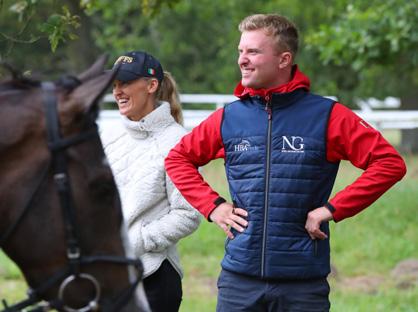
22 All legs!
Adam Jackson, MRCVS explains the anatomy of the lower limb and how it can be conditioned to racing alongside Des Cronin’s nutritional perspective.
04 Contributors
06 ETF Members
to download our current digital editions and access back issues of both European and North American Trainer

30 Who should be dictating the Rules of Racing?
Lissa Oliver explains the views on the new laws across Europe surrounding racings social licence on stabling, tongue-ties and whip use.
38 Managing EGUS in racehorses
Dr Michael Hewetson shares his top tips for preventing EGUS and ways to treat and manage the condition.
46 Shared ownership
Daragh Ó Conchúir delves into the area of shared ownership, syndicates, racing clubs and the developing area of micro share groups throughout Europe.
56 Understanding equine asthma


Janet Beeler-Marfisi of the University of Guelph explains the effect of air quality and air pollution on the horse’s lungs.
62 Preserving the thoroughbred
Bernard Stoffel, DVM gives his opinion on the dangers of inbreeding and the necessity to preserve stallion lines in the thoroughbred.
68 Enhancing horse safety in training and racing
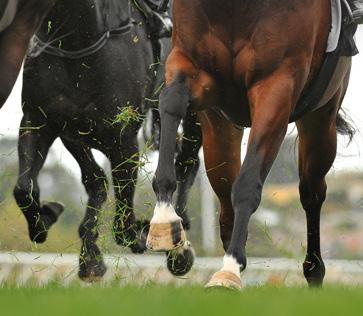
Adam Jackson, MRCVS reports from the Gerald Leigh Memorial Lectures 2023.
74 Smaller nations
Paull Khan talks about the challenges trainers face in Denmark, Poland & Spain.
02 TRAINERMAGAZINE.COM ISSUE 83 @trainer_mag /trainermagazine /trainermagazine
ISSUE
83
REGULARS
10
22 | CONTENTS | 56
F E A TURES
Race programme & closing dates
INTERNATIONAL PATTERN RACES:
BAHRAIN TURF SERIES RACES: Stabling nominations close on Thursday 26th October 2023

Race | date Distance Race value Conditions Bahrain International Trophy Friday 17th November 2023 (Closing date for entries Thursday 5th October 2023) 2000m 10f $1,000,000 USD Group 2, 3Y+ Crown Prince’s Cup Friday 2nd February 2024 2000m 10f $150,000 USD Listed 3Y+ Al Methaq Mile Friday 8th March 2024 1600m 1m $80,000 USD Listed 3Y+ King’s Cup Friday 8th March 2024 2400m 1m4f $200,000 USD Listed 3Y+
Race | date Distance Race value Conditions Al Manama Cup Friday 8th December 2023 1000m 5f (straight) $80,000 USD 84-100 3Y+ Al Muharraq Cup Friday 8th December 2023 2000m 10f $80,000 USD 84-100 3Y+ Al Riffa Cup Friday 29th December 2023 1200m 6f (straight) $80,000 USD 80-100 3Y+ Al Dana Cup Friday 29th December 2023 2000m 10f $80,000 USD 80-100 3Y+ Al Wasmiya Cup Friday 12th January 2024 1000m 5f (straight) $80,000 USD Conditions Race 4Y+ Al Adiyat Cup Friday 12th January 2024 1800m 9f $80,000 USD Conditions Race 4Y+ Hawar Cup Friday 2nd February 2024 1200m 6f (straight) $80,000 USD 80-100 4Y+ Anchorman Cup Friday 2nd February 2024 1800m 9f $80,000 USD 80-100 4Y+ Al Sakhir Cup Friday 16th February 2024 1000m 5f (straight) $80,000 USD 80-100 4Y+ Vision 2030 Cup Friday 16th February 2024 2000m 10f $80,000 USD 80-100 4Y+ FOR FURTHER INFORMATION PLEASE CONTACT: Adrian Beaumont, International Racing Bureau adrian@irbracing.com | +44 1638 668881 or +44 7808 903158 WIDE RANGE OF TRAVEL INCENTIVES PROVIDED, INCLUDING $15,000 PER HORSE FOR BAHRAIN TURF SERIES PARTICIPANTS AND ALL EXPENSES PAID FOR THE BAHRAIN INTERNATIONAL TROPHY. bahrainturfclub.com 2023/24 SEASON
CONTRIBUTORS
Editorial Director/Publisher
Giles Anderson
Sub-Editor
Jana Cavalier
Design/Production
Damian Browning
Advert Production
Lauren Godfray
Circulation/Website
Lauren Godfray
Advertising Sales
Giles Anderson
Cover Photograph
APRH / Clementine Veret
Trainer magazine is published by Anderson & Co Publishing Ltd.
This magazine is distributed for free to all ETF members. Editorial views expressed are not necessarily those of the ETF. Additional copies can be purchased for £8.95 (ex P&P). No part of this publication may be reproduced in any format without the prior written permission of the publisher.
Printed in the European Union
For all editorial and advertising queries please contact: Anderson & Co. Publishing
Tel: +44 (0) 1380 816777
Fax: +44 (0) 1380 816778
email: info@trainermagazine.com www.trainermagazine.com
Issue 83
Dr Janet Beeler-Marfisi works at the University of Guelph’s Ontario Veterinary College. She is a specialist in veterinary clinical pathology, dedicated teacher, and an asthmatic who is devoted to researching why horses get asthma and what role smog plays in damaging horses’ lungs. She is particularly grateful to her research of horses for the lessons they have shared, to her horse trainer husband for his astute observations and for horse transportation, and to Equine Guelph for their generous financial support of her research and dissemination of her research results and insights.
Des Cronin, B.Ag.Sc, MBA is the head of Animal Health and Nutrition at Mervue Laboratories; he plays a pivotal role in formulating and developing high-performance nutritional health products for the equine industry in Ireland and the global equine market. He is hugely passionate about animal health and welfare led by correct nutrition.
Katherine Ford was born in Yorkshire where she was raised with ponies, hunting and point to pointing. After completing a degree in languages and the BHA graduate development programme, she moved to France for a season with the International Racing Bureau’s Paris office. Three years later, she joined French racing channel Equidia’s international department which took her on travels to racecourses from Brazil to Japan, California to Cape Town. She now splits her time between Equidia, Sky Sports Racing’s French coverage and freelance writing and translating, and dreams of future successes for the progeny of her two broodmares.
Dr Michael Hewetson, BSc(Hons)Ag, BVSc, PhD, FHEA, DiplECEIM, MRCVS graduated from Onderstepoort, South Africa in 1999. He spent time in private equine practice in the UK before completing a senior clinical training scholarship in equine internal medicine, critical care and anaesthesia at the University of Glasgow. He is a registered RCVS specialist in equine internal medicine and is a diplomate of the European College of equine internal medicine. He has a PhD in equine gastroduodenal permeability studies and has an active research interest in equine gastric ulcer syndrome. He currently works as a clinical educator at the Royal Veterinary College in London, where he is an associate professor in equine internal medicine.
Adam Jackson, MRCVS is a partner at Dunsford & Jackson, a modern independent equine vets based in the South Downs National Park, serving West Sussex, Hampshire and Surrey. Initially, he started work in a mixed practice in Hampshire, but because of his strong affinity towards horses, he began to focus on equine veterinary medicine and surgery. In 2004, he became an equine ambulatory veterinary surgeon and later completed his master’s degree at the Royal Dick, studying the epidemiology of notifiable equine infectious diseases. He was soon involved with care and treatment of horses that attended both the Rio and Tokyo Olympic and Paralympic Games.
Paull Khan, PhD. is an international horseracing consultant. He is a member of the Executive Council of the International Federation of Horseracing Authorities (the global peak body for Thoroughbred racing) and secretary-general of the European and Mediterranean Horseracing Federation. His other clients include the British Horseracing Board. Previously, Dr Khan held many senior roles at Weatherbys, including banking director and racing director.
Lissa Oliver lives in Co. Kildare, Ireland and is a regular contributor to The Irish Field and the Australian magazine, Racetrack. Lissa is also the author of several collections of short stories and two novels.
Daragh Ó Conchúir A native of Rinn Ó gCuanach, Co Waterford, Daragh Ó Conchúir is a freelance media professional with more than 30 years’ experience of writing and broadcasting in sport, covering a multitude of disciplines and roles for a variety of national and regional organisations. An author of four books, nominee as HWPA Racing Writer of the Year (for Irish and UK racing writers) and reporter for TG4’s acclaimed Rásaí Beo racing coverage.
Bernard Stoffel is an equine vet, breeder, researcher, bloodstock agent, owner, dreamer ... “I think I’m just a typical racehorse’ lover trying to live my passion through my different activities, which allowed me to meet many great people all around the world”.
04 TRAINERMAGAZINE.COM ISSUE 83
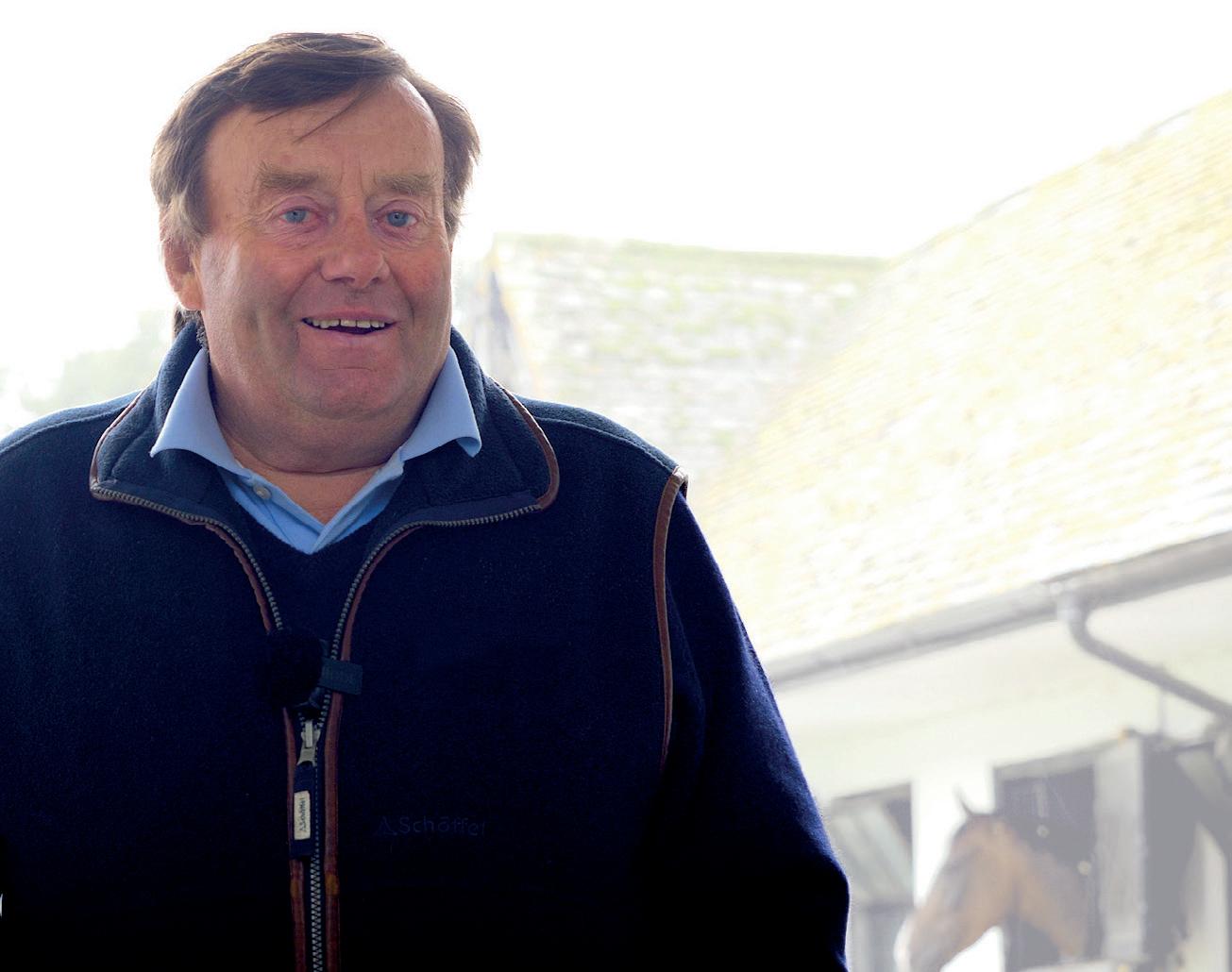


fairfaxracing.com
Shishkin schooling in the Fairfax Race Exercise System
“I’ve noticed my horses move better in Fairfax Saddles”
better backs, better condition …better performance
- Nicky Henderson OBE
EAGER FOR SUCCESS !
TWYDIL® HEMOPAR
A horse’s liver performs more than 100 different important functions and therefore this organ is vital in the maintenance and activity of top performance horses. TWYDIL® HEMOPAR is a liquid feed supplement designed to aid good feed digestibility and to ensure good digestion even when disturbed by cereal feeding, training and competition.


- Officially cer tified by the LCH (af t er analysis on final product, urine and blood).
- Declared cont ent guarant eed until expir y dat e.
T WYDIL® is used by most of t he successful prof essionals in t he wor ld.
www.twydil.com e-mail: info@twydil.com PAVESCO AG HEAD OFFICE CH-4051 Basel Switzerland Tel. (41)(61)272 23 72 PAVESCO U.K. LTD. 116, High Road Needham, Harleston, Nor folk IP20 9LG Tel. (01379) 85 28 85
TOPSPEC TRAINER OF THE QUARTER

STUART WILLIAMS
The TopSpec Trainer of the Quarter award has been won by Stuart Williams. Williams and his team will receive £1,000 worth of TopSpec feed, supplements and additives as well as a consultation with one of their senior nutritionists.
Aconjurer of a trainer. One who can transform an apparently moderate animal into a frequent winner”. Thus quoted Timeform, and we can only concur as we award our TopSpec Trainer of the Quarter to Newmarketbased Stuart Williams for a truly remarkable upgrade of the Godolphin cast-off, Quinault.
Joining Williams from Charlie Appleby in February this year, the three-year-old gelding had only one previous run to his name, when finishing last in a 2022 novice race. Quinault’s first run for Williams saw him place third and earn an official rating of 47. His record for 2023 now reads an
impressive seven wins from 10 starts to date, including a straight run of six wins in handicap company, which took him to the brink of an historic record, hardly disappointing when breaking the run with a third in the Shergar Cup Sprint at Ascot. However, it was back at Ascot that Quinault did manage his seventh win in the bet365 Handicap in September, taking his official rating to 97.
“I’m pleased to say he has come out of the race in good form. He’s a very tough horse, and he’s got loads of talent as well,” says Williams, singling out apprentice jockey Luke Catton as instrumental in his development. “Luke has done a fantastic
job settling him. The horse was just a runaway when he arrived—he would just bolt.
“We trained him on a treadmill for the first two months—so he never left the yard—before we slowly started to introduce him to Newmarket Heath. There’s a lot of work gone into him.
“He’s always had talent; it’s just been a case of letting the horse know it and letting him use it. He’s always been fast, and he’s bred to get further; so as long as we can keep him settled in his races, that’s a route we’ll look to go with him. He’s fairly straightforward to ride—he just jumps and goes”.
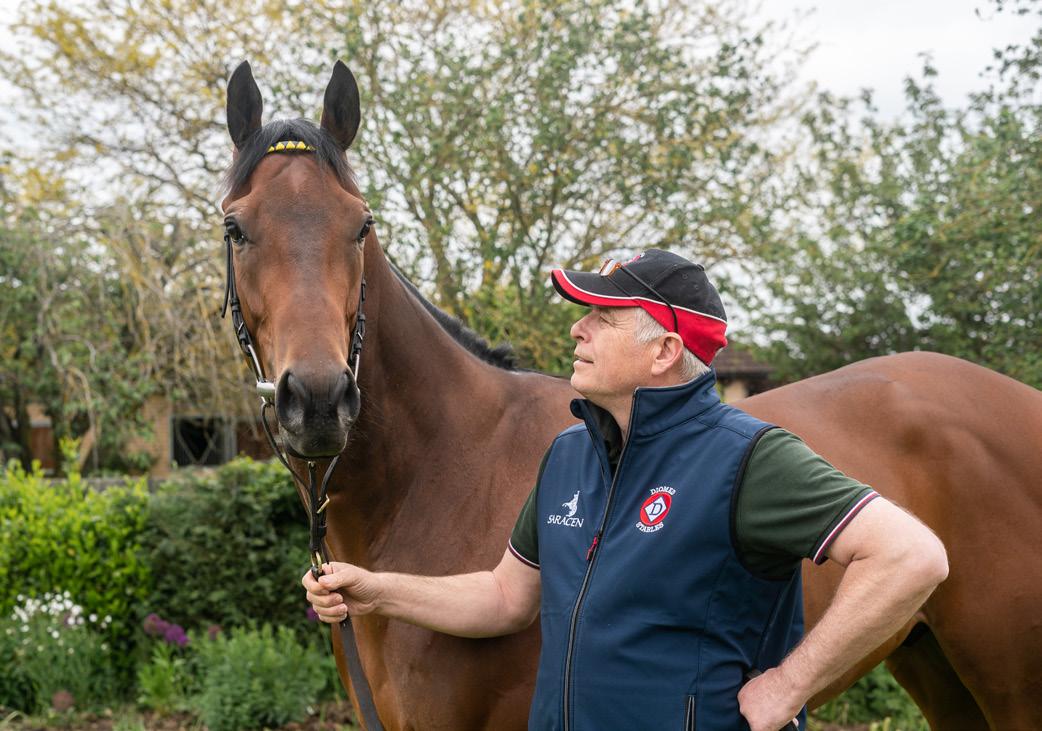
08 TRAINERMAGAZINE.COM ISSUE 83
® Feed Balancers and Quality Horse Feeds
WORDS: LISSA OLIVER PHOTOGRAPHY: ALISHA MEEDER, MEGAN ROSE PHOTOGRAPHY
Williams, who took out his licence in 1993, is based on Hamilton Road in Newmarket, conveniently backing onto the racecourse side training grounds. Diomed Stables has 72 boxes, including 60 newly refurbished American barnstyle boxes with climate control and six grass turnout paddocks. Williams also has a sand ride for light exercise of his horses, as well as an equine solarium.
He is a great believer in the benefits of swimming, and his horses use the nearby equine swimming pool on a regular basis to help improve fitness without putting excessive strain on their legs.
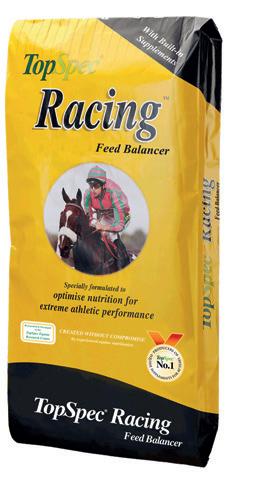
Williams has been involved in racing since he was a child—his father having been a jockey, and in his formative years worked for Bill O’Gorman, Ron Sheather and Alex Scott, as well as Bart Cummings in Australia. He also spent time working in France and Norway before taking out
his own licence. In 2011, he received what he acknowledges as ‘the highest recognition’ from his peers when he was voted president of the National Trainers Federation.
Williams feels it might now be time to step Quinault up to stakes company after his latest win; and the once 47 to now 97 rated gelding certainly gives the impression there’s plenty more to come.


• Muscle development and function
• Performance, stamina and recovery
• Healthy blood
• Healthy bone
• Efficient energy metabolism

• Healthy digestive system

• Healthy immune system

• Efficient digestion and utilisation
• Hoof, skin and coat quality
09 ISSUE 83 TRAINERMAGAZINE.COM
®
Multiple Award Winner for ‘Excellence in Nutritional Advice and Customer Service’ ® CREATED WITHOUT COMPROMISE by experienced equine nutritionists Contact Katy Mickle on 07879 658910 Tel: 01845 565 030 or (062) 85401 (Ireland) www.topspec.com
Feed Balancer
Feed Balancers and Quality Horse Feeds
TopSpec Racing
LEFT: Stuart Williams with Quinault whose record for 2023 now reads an impressive seven wins from 10 starts to date.
Quinault and Luke Cotton beats Popmaster and Ross Coakley to win September’s bet365 Handicap at Ascot.
NOEL GEORGE & AMANDA ZETTERHOLM
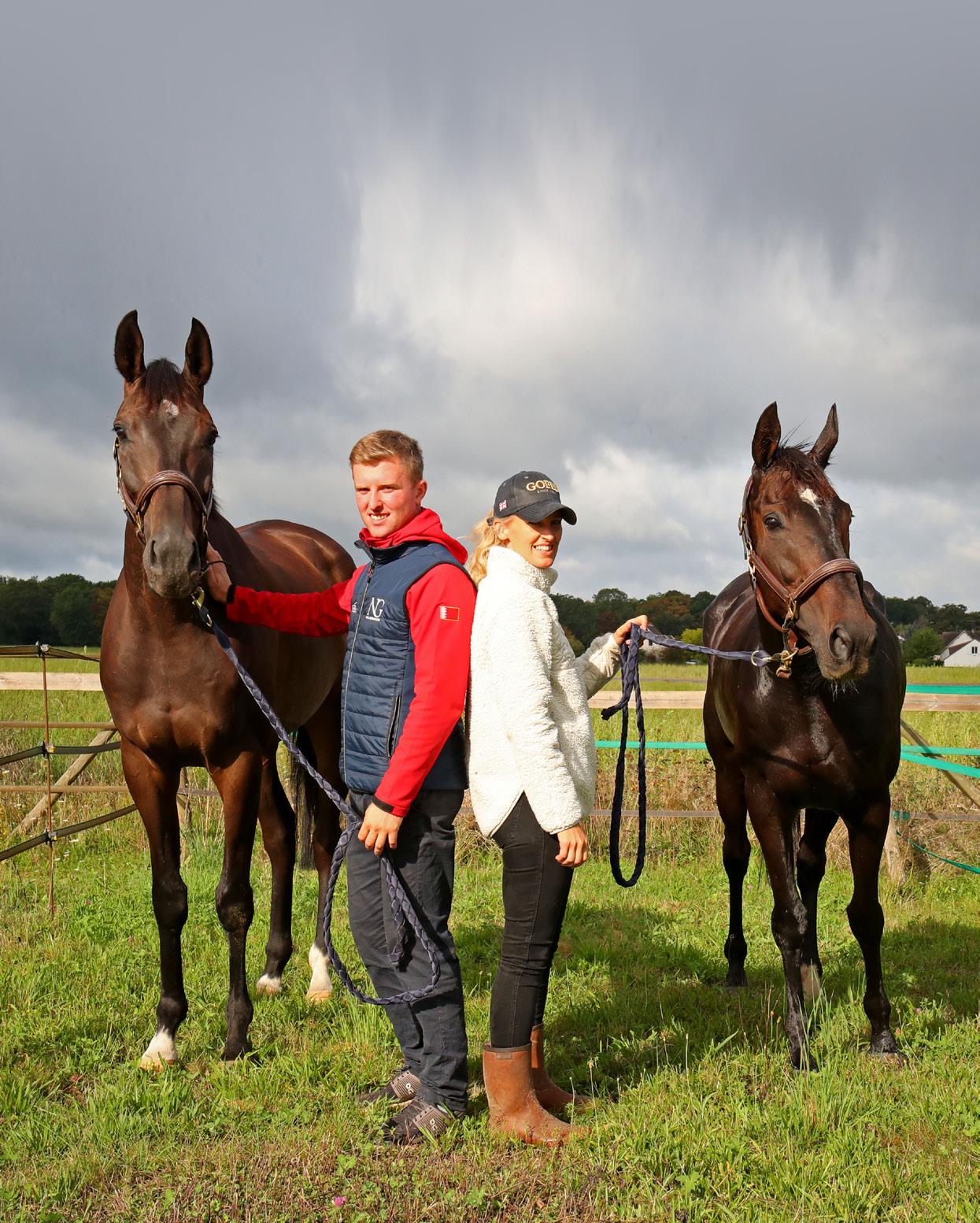
10 TRAINERMAGAZINE.COM ISSUE 83
THE ANGLO-SWEDISH DUO TAKING FRENCH RACING BY STORM

WORDS: KATHERINE FORD

PHOTOGRAPHY: APRH / CLEMENTINE VERET
Training partnerships are now firmly established in racing. Father and son (or daughter), husband and wife, or experienced trainer and long-standing assistant; these entities are now regularly seen in Europe and beyond. The association of George & Zetterholm Racing, one of the newest names in the French jumps trainers’ column, doesn’t fit in any of the usual categories but has already proven its efficiency in less than a year of operation.
Twenty-four-year-old Noel George, who found his way to France during Covid, is a former amateur rider and the son of Gr. 1 winning British trainer Tom George; whereas dynamic Swedish-born Amanda Zetterholm boasts a wealth of experience in a variety of capacities in racing and bloodstock around the world. The pair have no background together, and a chance remark has seen them launch as one of France’s most exciting training operations.
“We knew each other, but that was all; and it was (fellow Chantilly trainer) Tim Donworth who suggested we set up together,” explains Amanda. “Noel wanted to train in France, but of course it is complicated to set up here, so it was a good opportunity to do it in partnership. I told Noel I’d found this yard I love, so we went to visit it together, and he said he’d love to train here. I bought the yard exactly a year ago, in September 2022”.
11 ISSUE 83 TRAINERMAGAZINE.COM
Creating a masterpiece
Amanda and Noel each bring their own talents to the partnership, “I’m the Louvre, and he’s Thomas Gainsborough”! Amanda’s marketing background shines through with her metaphor illustrating that she provides the solid base for Noel to fulfil his role as “the artist” with the horses.
Growing up in Sweden, Amanda Zetterholm enjoyed riding and show jumping but didn’t have any involvement in racing until studies took her to Australia, where she spent time with David Hayes and Matthew Ellerton. “My first job in racing was with agent Damon Gabbedy, who taught me a lot about the breeding side. Then I went to South Africa and spent three years with Mike de Kock, which was a great experience—between Dubai, England and South Africa. He is very avant-garde”.
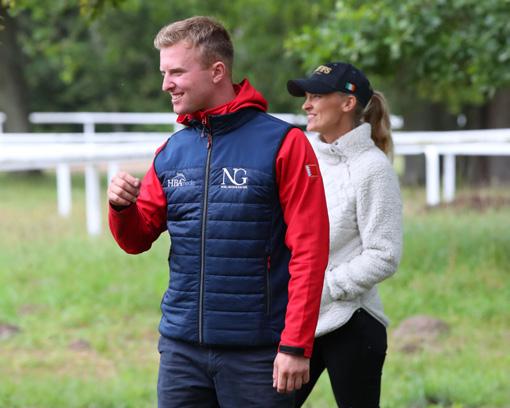

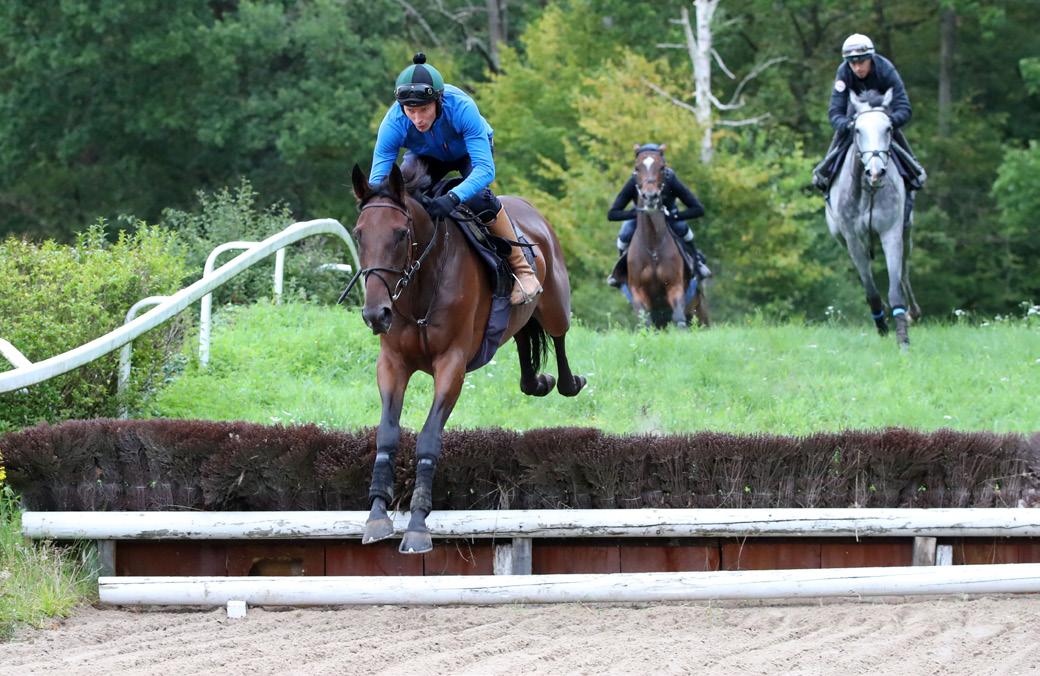
In 2013, Amanda was recruited by the Aga Khan Studs as commercial executive and has fulfilled a variety of roles for the famous operation. She currently balances the burgeoning training career with work for the Aga Khan Studs but is soon set to devote herself fully to George & Zetterholm Racing. “I’ve spent 10 wonderful years with the Aga Khan Studs, but I will finish at the end of the year; I can’t do both. They’re very proud of what I’ve achieved”.
Add to these achievements a successful amateur riding career on the flat, a stint as Goffs French representative and an instrumental part in the setting up of the stable of former partner David Cottin, with whom she has two young sons, Winston and Clovis, plus success in buying young jumping stock to sell on, which has set her up financially to be able to buy the Chantilly yard; it is clear that Amanda is not shy of a challenge or a busy schedule.
12 TRAINERMAGAZINE.COM ISSUE 83
| GEORGE & ZETTERHOLM RACING |

ENJOY THAT FRENCH WINNING FEELING CONTACT: Marie ROHAUT +33 (0) 1.49.10.21.16 mrohaut@france-galop.com www.frbc.fr TASTE THE FRENCH LIFESTYLE BEST PRIZE MONEY IN EUROPE © SHARE & DARESCOOPDYGA
Well-defined roles
“We passed the trainers’ licence together, and the idea was always that Noel wanted to do his training regime. He’s on the track every morning with the horses. I’m out here maybe three times a week currently, but that will change once I finish with the Aga Khan Studs. We both discuss and do the entries. We’re on the same wavelength, and I would say I am a very easy partner. I have a lot of experience, and I don’t feel I have anything to prove.
“In France, there is so much paperwork. I deal with the business side, the staff and the logistics; and I do the communication with the owners, which I love. I don’t feel the stress that Noel feels with the owners as he is the one who has directly prepared the horse, so I can be more relaxed. I am there to reassure them and make sure that they have a good day out. We are very complementary. Noel is a very confident person. You need to be confident to be a good trainer because the horses feel the confidence, and the owners too. He passes that confidence on to everyone”.

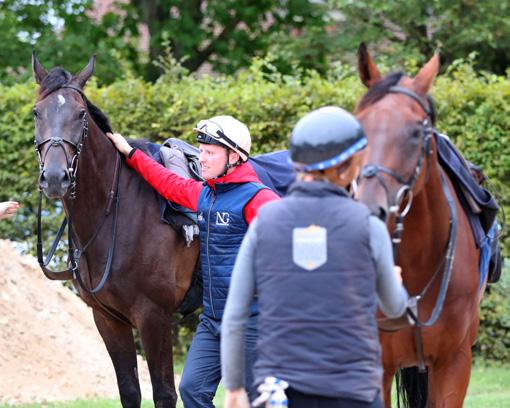
Living the dream in France
Noel George displays a confidence which belies his years, and in France he has found an opportunity to fulfil a dream that he had not imagined possible. “Since I left school, I aimed to train flat horses because I didn’t see economically and business-wise how it could work training jumpers in the UK”. After a year with Graham Motion in the USA and summer holidays with Sir Mark Prescott and Joseph O’Brien, Noel George has learnt from some of the best on the flat.
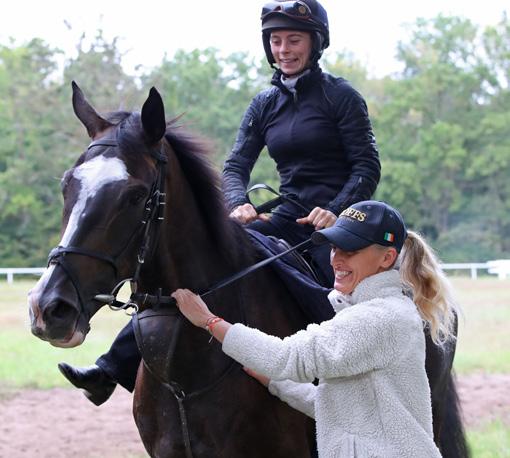
The French connection came about by coincidence, although there is family history across in Chantilly as father Tom George spent time with the pioneering François Doumen in the days of The Fellow, whetting his appetite for cross-Channel raids. “I remember when Dad always used to come over with runners and then Halley won the Gp. 1 Maurice Gillois. I wasn’t there that day but I remember it—Dad built his new kitchen because of it! That stuck in my mind, that the French prize money is amazing… I was meant to be going to Australia as an assistant, but then Covid happened and French racing started before anywhere else; so I moved over to work for Fabrice Chappet”.

14 TRAINERMAGAZINE.COM ISSUE 83
| GEORGE & ZETTERHOLM RACING |
Care for your horse from the inside out with the digestive health benefits of NUTRI-GARD

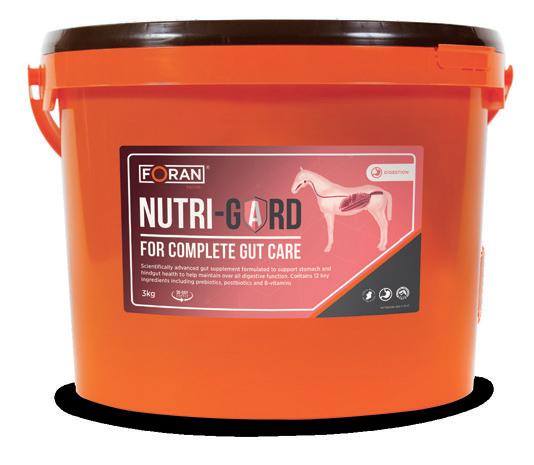
Nutri-Gard is a scientifically advanced supplement to support stomach and hindgut health. Containing 12 active ingredients, including prebiotics, postbiotics, and B-vitamins, it is designed to support the entire digestive tract.
Postbiotics are new, innovative additive that have been proven to improve the robustness of gut microbiome in stress-challenged horses; postbiotics help to maintain healthy gut function even when horses are exposed to high stress environments.

Also features:
• Prebiotics
• B-vitamins
• Pectin
• L-Threonine
• DL-Methionine
• Oat fibre
SCAN
QR CODE
TO FIND OUT MORE
CONTACT OUR SPECIALIST THOROUGHBRED TEAM:
UK: Adam Johnson T: +44 7860 771063
Ire: Lorraine Fradl T: +353 87 2575398
Email: info@foranequine.com
www.foranequine.com
EQUINE SUPPLEMENTS & HEALTHCARE
#OURSCIENCEYOURSUCCESS
Noel didn’t speak French when he arrived but learnt quickly— thanks to language apps, Chappet’s former assistant, and now young trainer Xavier Blanchet, as well as being motivated to communicate when chasing a few French girls!
During the period with Classic-winning Chappet, Noel oversaw a string of horses running under a provisional licence for his father Tom. “I was giving orders to Dad’s horses on the same gallops, and it was a help that I knew the farrier, the feed suppliers etc”.
Provisional training operations in France are restricted to three months, but the experience served to reiterate the financial sense of racing in France but also the accompanying bureaucracy.
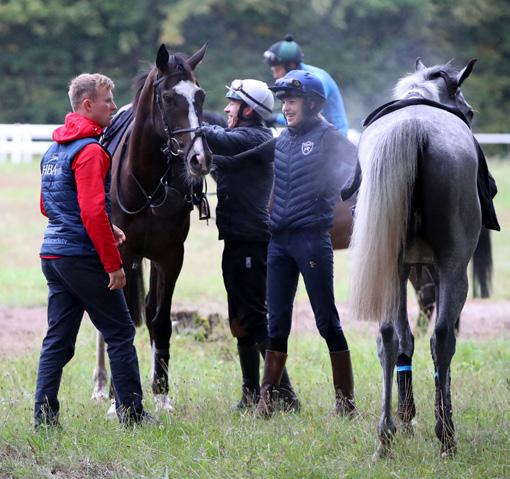

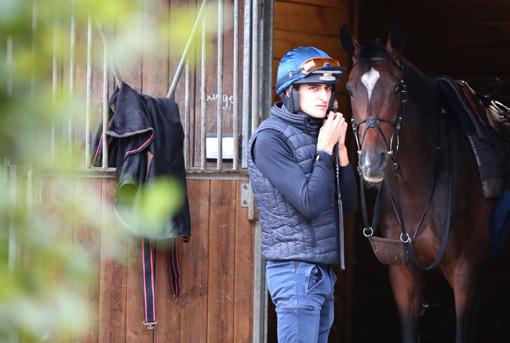
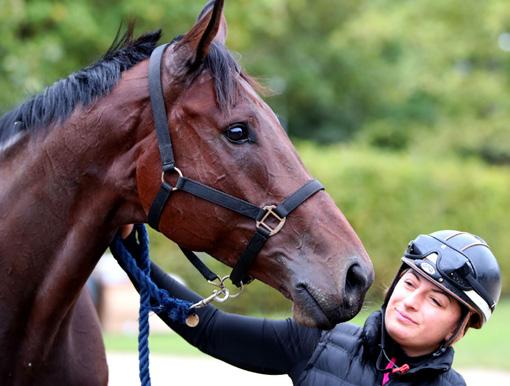
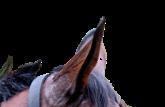
“I eventually passed the trainers exams, which aren’t easy! It’s not just knowing the language, it’s knowing all the anatomy of the horse, in French, the employment laws, how to write a payslip—all the different taxes… For that, having Amanda is a huge asset because I can focus on training the horses and she does all that complicated stuff”.
Noel is also full of praise for his father Tom. “He’s a great source of advice for me; I ring him whenever I have a question. We couldn’t do it without him. He’s put his neck on the chopping block by pushing a lot of the horses over here, and it seems to be paying off”.
16 TRAINERMAGAZINE.COM ISSUE 83
| GEORGE & ZETTERHOLM RACING |





YOUR PEACE OF MIND Check out the latest test results for our products. Joseph Villante, International Development +44 (0)1223 931 071 (UK) | brlequine.com “I’ve been using EPO-EQUINE since I became a trainer, it is the best blood builder on the market, period.” -Phil D’Amato, Multiple Graded Stakes-Winning Trainer “I Can’t say enough good things about BRL Equine, I use all of their products! ” - Keri Brion, Cheltenham Winning Trainer Our products are used and trusted by leading trainers around the world
Top-class training grounds
Another huge advantage for George & Zetterholm Racing is their stable and accompanying facilities. The yard, on the outskirts of the village of Avilly-St-Léonard, has already sent out three winners of France’s feature Grand Steeple-Chase de Paris as former owner Christophe Aubert was responsible for Line Marine (2003) and Mid Dancer (2011 & 2012).
This is part of France Galop’s huge Chantilly training domain, but being slightly out on a peaceful limb compared with the more famous locations of Chantilly, Gouvieux, Lamorlaye and Coye-laForêt, it has all the benefits of a private establishment. “We can’t praise France Galop enough for all they do for us,” says Amanda. “When the English owners come over, they just can’t believe it, and even Noel’s dad has his own amazing facilities; but he has to run it all himself. This area of Avilly has been almost dormant for several years and so the France Galop teams are very keen to revive it and make improvements”.
In concrete terms, this means that Noel and Amanda, having the only active stable in the vicinity, have exclusive use of extensive schooling facilities and gallops. “We’ve got cross-
country, steeplechase fences and hurdles. They are a little bit smaller than the racecourse ones, but I don’t think you have to jump big in the mornings. It’s better if they’re a bit smaller as they give the horses confidence. We tell the France Galop staff the days when we will be schooling and they make sure everything is prepared”.
Noel adds, “The training centre is incredible, and we are so well looked after by France Galop who really want to help us. They give the horses the best chance possible. We have a 2000m sand gallop through the forest, which we use daily; then there’s a big 2000m sand circle which isn’t watered but in the winter it’s very good for the youngsters—it’s like a racecourse! We have to go to Chantilly to use the grass, but I think it does the horses good to go on the lorry”.
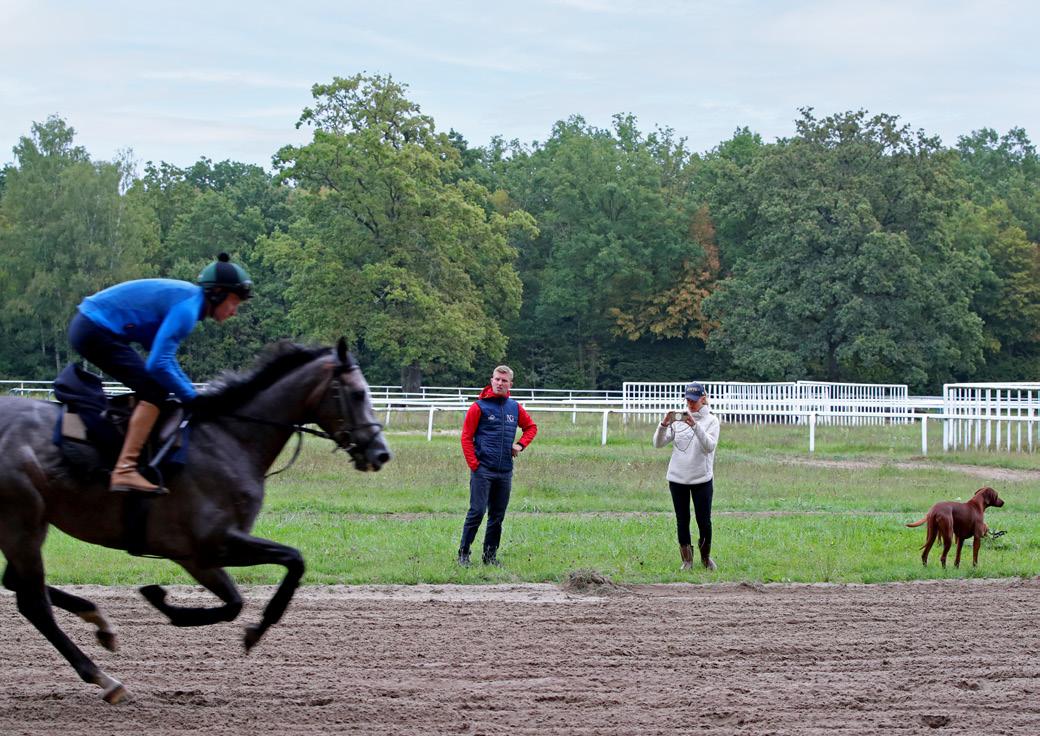
Schooling is an integral part of training jumpers in France; and Noel admits, “I’ve watched videos of how Macaire and Nicolle do all the French schooling and we’ve mixed it with the English way; and it seems to be working”.

The French policy of regular schooling has been adopted, and here again, the French system offers benefits. “The likes of James Reveley, Felix de Giles, Nicolas Gauffenic, and Kevin Nabet will be in nearly every Wednesday. It’s not like in England where the jockeys might be riding up north or down south and are less available for schooling. The horses, especially the older ones over from England, love it. It gives them a change, especially with the different steeplechase obstacles like the bullfinch the bank, the white wall… And as we don’t have the hills they have in England, it is good for fitness”.
“The horses jump more in races here. In a two-mile hurdle in England, they jump eight small hurdles; whereas round Auteuil over two miles, they jump 12 mini-English fences. If you lose two lengths at a hurdle here, it makes such a big difference as the next hurdle comes much quicker than in England. Jumping is very important”.
18 TRAINERMAGAZINE.COM ISSUE 83
| GEORGE & ZETTERHOLM RACING |
Sizes available: 1.2kg, 1L, 5L and 3 x 30ml syringes.
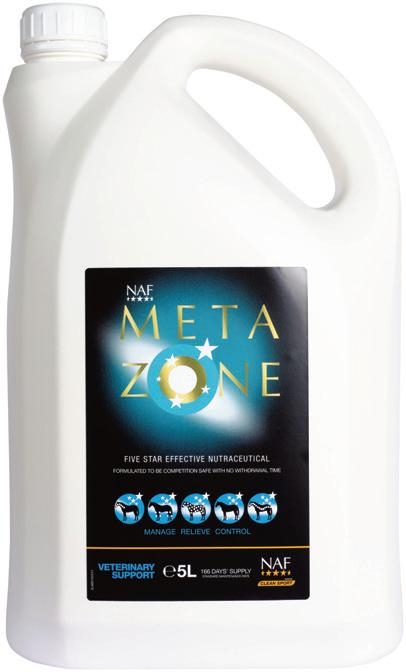
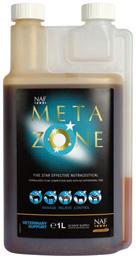













VETERINARY SUPPORT naf-equine.eu/uk Contact NAF using our FREE Nutritional Advice Line call 0800 373 106 or email info@naf-uk.om g t y h S th Vty Stgth Sppt Ftd t b cptt SF wth wthdw t
NEW
Making financial sense
Jumping is important, but prize money is even moreso; and in less than a year of operation, the stable has already earnt plenty. “We’ve had 100 runners for 800,000€ in prize money, so that’s 8000€ per runner which is a great statistic. French racing is very lucrative,” says Amanda, while Noel emphasises the point further: “The very fact that a horse can be in training and not cost money is a huge benefit. The number of horses that pay for their training fees in England is very few; whereas if your horse isn’t paying your training fees here, you probably need to think about moving it on. It’s an incredible way to be and a massive advert for French racing. It just takes the pressure off everything”.
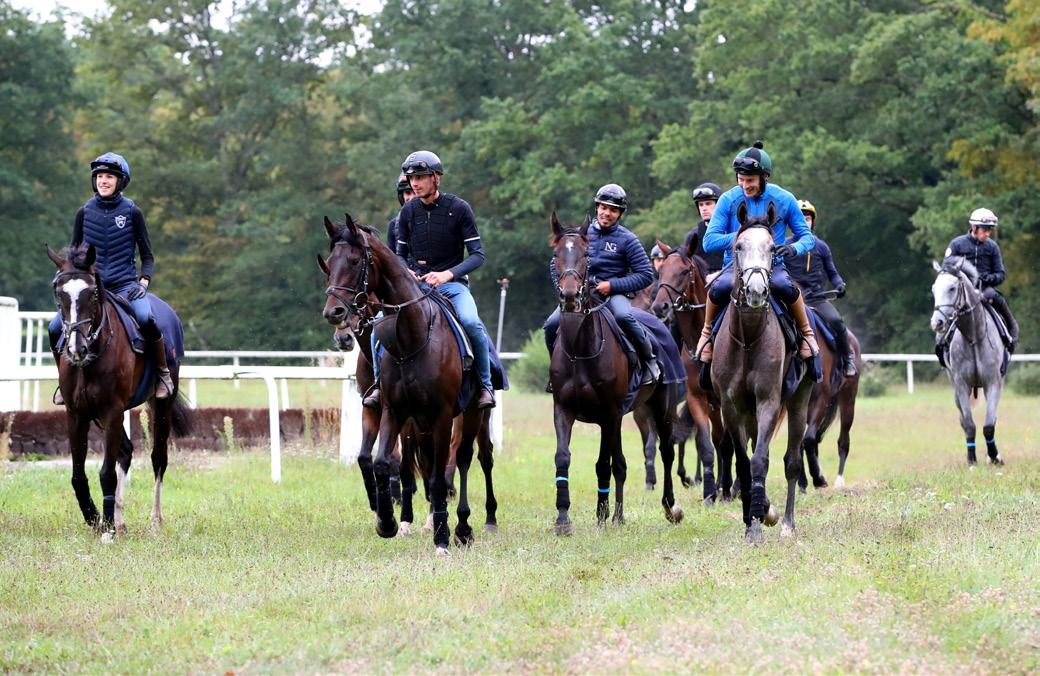
Capacity is maybe the only source of pressure currently for George & Zetterholm Racing. The yard has 25 boxes and 14 turn-out paddocks, with a further 15 boxes rented nearby and a barn with 16 more stables under construction at the yard. “We are limited in space, and we want to focus on quality rather than quantity,” says Amanda; although Noel’s ambitions have no limits.
“The dream eventually would be to compete with the top trainers in the championship, but we want to race on both sides of the channel. I’m English. I’ve grown up in England, and we’ve got English owners; so our dream is to win big races in England too. I can’t see why we can’t do that training here. We have amazing grass gallops; we can do racecourse gallops at tracks like Compiègne, so we can get them as ready as anyone in England. Cheltenham is quicker to access for us on the lorry than it is for Gordon Elliot and Willie Mullins; and Kempton is closer to us than Pau”!
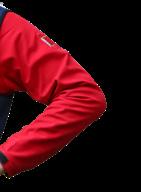
Again, the support from Tom George will be key, as horses will spend a few days at his Down Farm in Slad near Cheltenham to acclimatise and school over British obstacles.
“I can understand why Britain is not a priority for many French trainers, as there is so much money to be won here; but we have owners that are buying horses to win on big days and they want to win at the big meetings. When we do get on the boat, hopefully we will bring a few winners back for France, with English owners and English and Swedish trainers”!

20 TRAINERMAGAZINE.COM ISSUE 83
| GEORGE & ZETTERHOLM RACING |




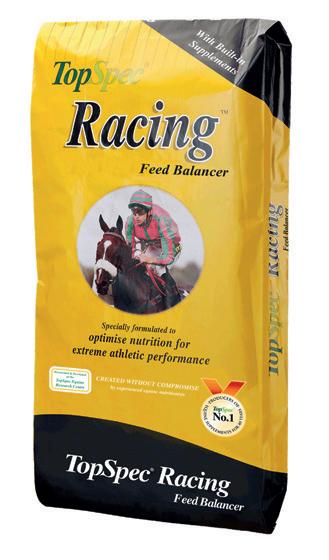
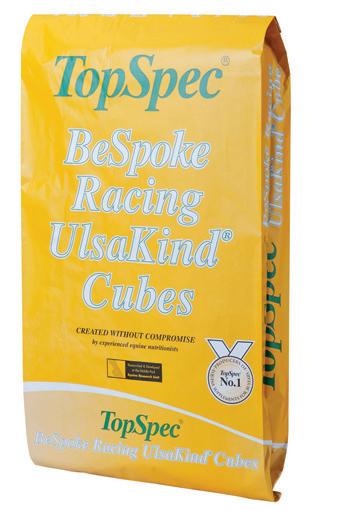

Multiple Award Winner for ‘Excellence in Nutritional Advice and Customer Service’ ® CREATED WITHOUT COMPROMISE by experienced equine nutritionists Outstanding Results #FedonTopSpec
Tel: 01845 565 030 or (062) 85401 (Ireland) www.topspec.com
Book of Tales, winning the Maiden Hurdle at Fontwell Racecourse, trained by Charlie Longsdon, ridden by Lilly Pinchin and owned by Stratford Racecourse 4.
of Tales ran a brilliant race at Fontwell. He continues to thrive on his TopSpec diet,
for
Photograph by Darren Cool Images
“Book
and the results speak
themselves.” Charlie Longsdon
Better understanding the appropriate levels of exercise and training while the horse’s body grows and develops has been a topic of research for many years. Although it has been shown that young, growing horses are well-suited to adapt to conditioning, it is vital that continued research is performed in order to develop thoughtful and strategic training methods to promote healthy, fit and sound horses with long careers and lives.

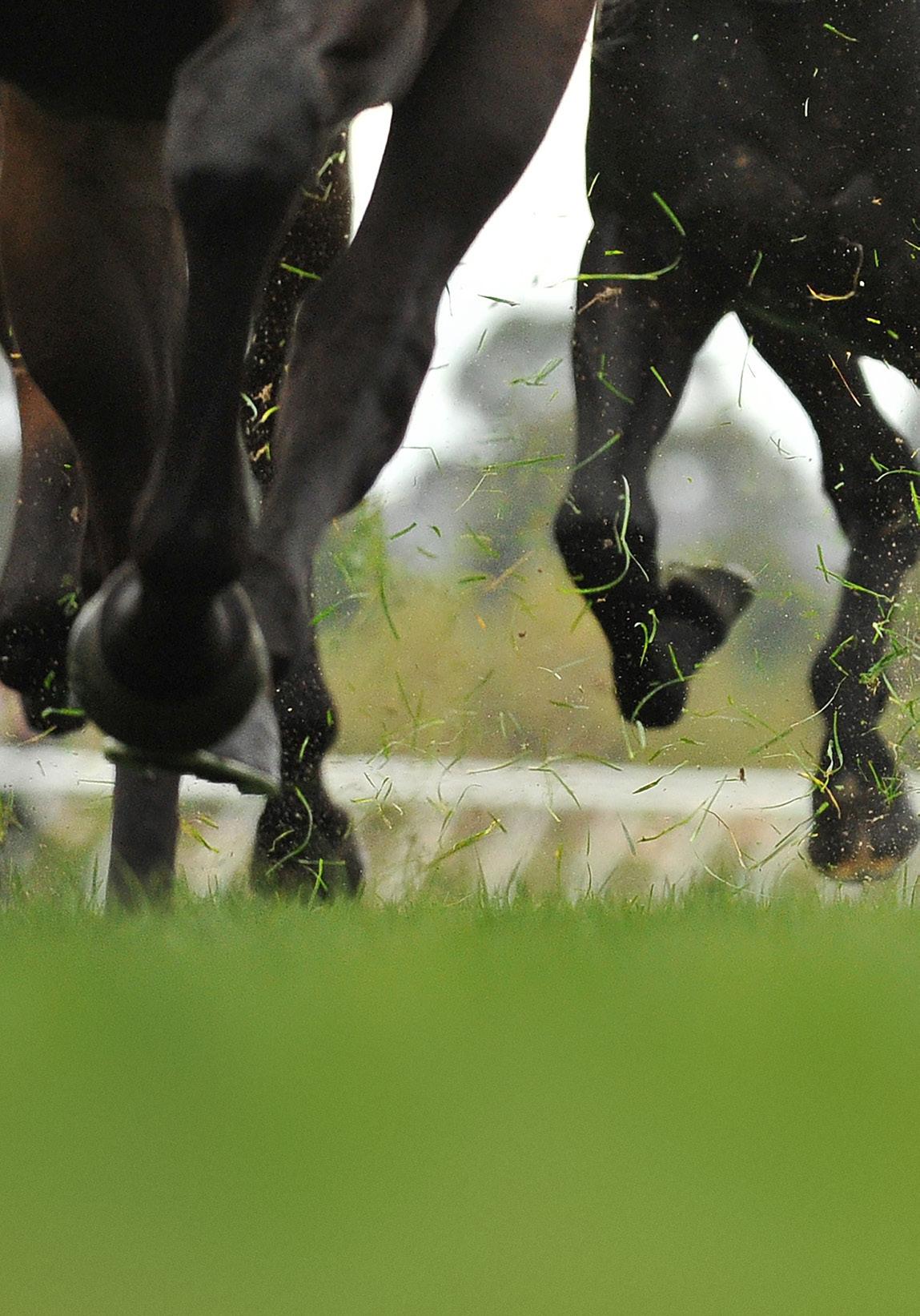
22 TRAINERMAGAZINE.COM ISSUE 83 | VETERINARY |
Horses’ limbs consist of dozens of muscles, bones, tendons, ligaments, and joints that allow the horse to move as well as support its body weight. The limbs function to provide thrust and movement while absorbing impact and bearing weight. Most of the horse’s weight is supported by the fore limbs, while the propulsion of the horse is provided by the hind limbs. In addition, the horse has two apparatuses referred to as the stay apparatus and suspensory apparatus. The stay apparatus allows major joints in the limbs to lock so that the horse may rest and relax while standing. The suspensory apparatus is designed to absorb shock, carry the horse’s weight, and prevent the overextension of joints. Finally, the hooves are important structures that maintain support and traction as well as provide additional shock absorption.
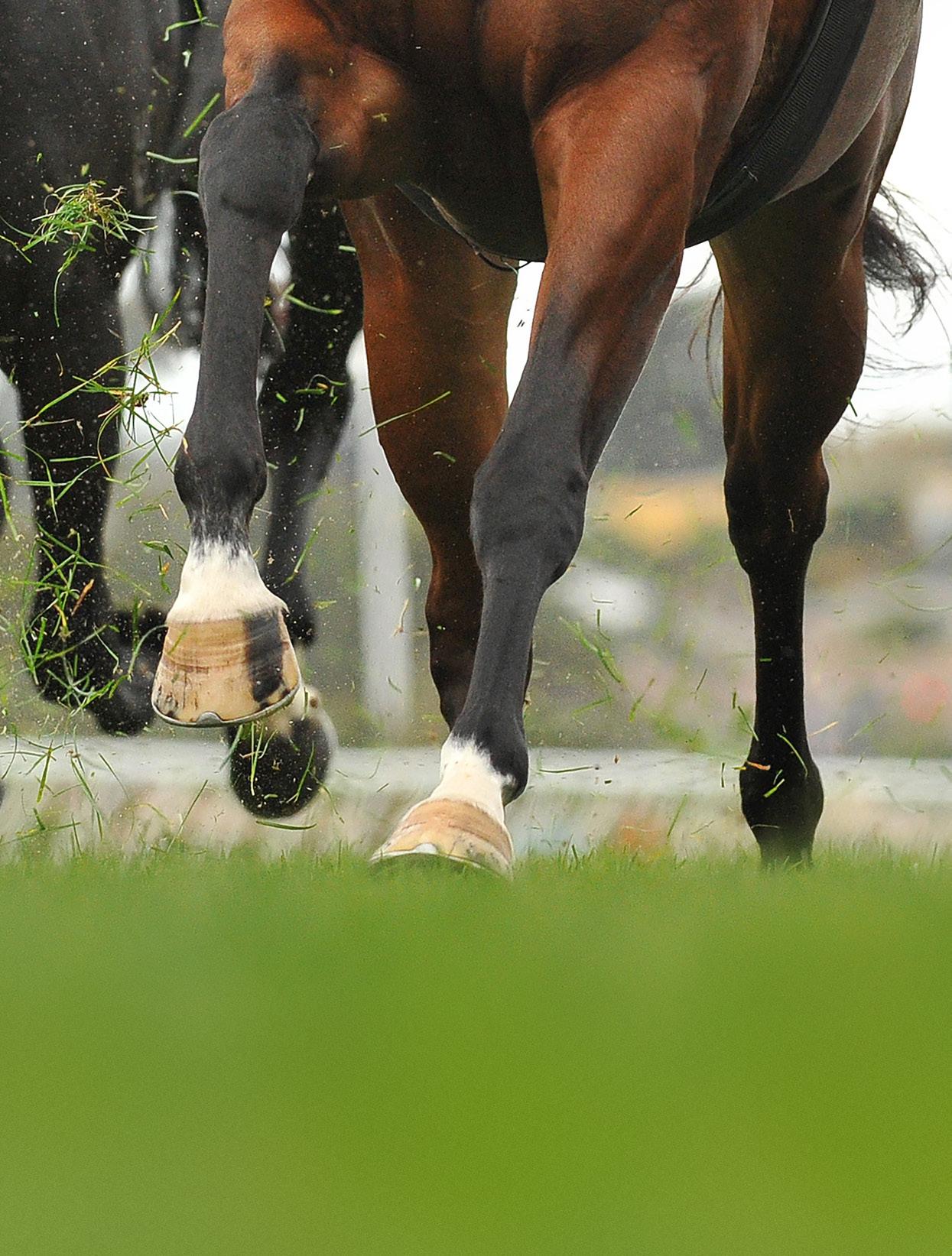
Since the cardiovascular system provides blood supply throughout the body, by responding to various stimuli, it can control the velocity and amount of blood carried through the vessels, thus, delivering oxygen, nutrients, hormones, and other important substances to cells and organs in the body. It plays a very important role in meeting the body’s demands during exercise, stress, and activity.
Exercise is used to increase the body’s ability to withstand repeated bouts of similar exercise with less impact. With a strong and healthy cardiovascular system, there is an improved ability of the musculoskeletal system receiving oxygen, thus, allowing muscles to better their capacity to use oxygen and energy. However, the adaptation period for each of these physiological systems do differ as the cardiovascular system adapts faster compared to the musculoskeletal system. This is often an overlooked consideration when developing training programmes for horses.

23 ISSUE 83 TRAINERMAGAZINE.COM
| LOWER LIMB CONDITIONING |
WORDS: ADAM JACKSON, MRCVS
It is important to understand the various functions, structures, and adaptive processes of the horse’s musculoskeletal system such as bone, articular cartilage, tendons, and ligaments in order to develop appropriate training regimens.
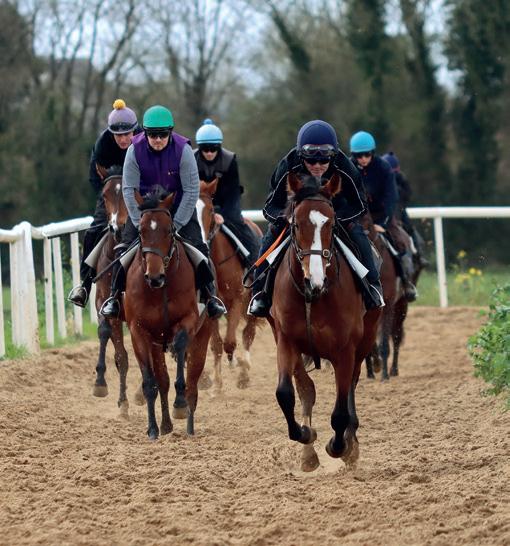
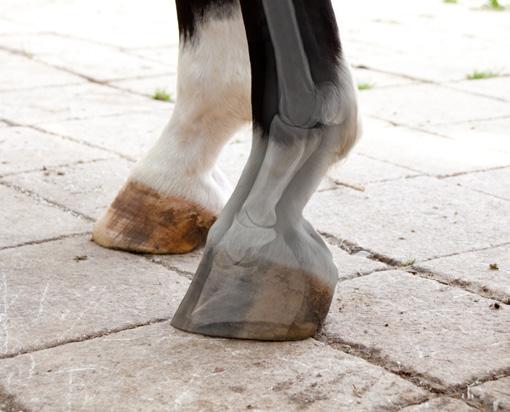
Bone
Bone has many important roles that involve locomotion, the storage of minerals (especially calcium and phosphate), soft tissue and vital organ protection, and the support and containment of bone marrow. Bone is a specialised connective tissue, and together with cartilage forms the strong and rigid endoskeleton. The bone is continuously altering through two processes called bone modelling and bone remodelling, involving four cells referred to as osteoclasts, osteoblasts, osteocytes and bone lining cells.
Osteoblasts secrete bone matrix in the form of non-mineralised osteoid, which is then mineralised over a few weeks to form a bone matrix. Osteoclasts are involved in resorption of bone as this process occurs faster than the formation of bone. When the bone surfaces are not in the development or resorption phase, the bone surface is completely lined by a layer of flattened and elongated cells termed bone-lining cells. Osteocytes are derived from osteoblasts and are highly specialised to maintain the bone matrix. They are designed to survive hypoxic conditions and maintain biomineralisation of the bone matrix. Osteocytes also control osteoblastic and osteoclastic activities allowing bone remodelling.
The function of bone modelling is to alter and maintain shape during growth. As the horse grows and develops, bone modelling occurs with the acquisition and removal of bone. While the young horse grows and develops, bone modelling allows the bone to endure strains from everyday work and exercise. The adult skeleton undergoes a minimal amount of bone modelling. Due to the presence of the high frequency of bone modelling in young horses, their skeletal strength is highly influenced by strains to their bones during exercise and daily use. With this knowledge, it has been concluded and confirmed that
short-term dynamic exercise of an adolescent can lead to beneficial changes to its bone morphology.
Bone remodelling is a different process, in which old and damaged bone is renewed, which enables the bone to respond and adapt to changing functional situations. Bone remodelling is usually a coordinated relationship between bone resorption and bone formation. This process occurs throughout the horse’s life with the renewal of primary, damaged or old bone. Osteoclasts absorb old and damaged bone, and the osteoblasts form new bone and lay down new bone matrix until the earlier absorbed bone is replaced. In those animals with musculoskeletal disease or damage, there is an imbalance of osteoblast and osteoclast activity. With the knowledge that osteoblast activity to make new bone takes months whilst osteoclast activity of removing old and damaged bone only takes a few days to two weeks, bone that is being repaired is at a high risk of further injury as bone removed has not been completely replaced. Multiple studies have shown that exercise while growing can provide lifelong benefits; however, it must be done with care and knowledge.

24 TRAINERMAGAZINE.COM ISSUE 83
| VETERINARY |
Multiple studies have shown that exercise while growing can provide lifelong benefits; however, it must be done with care and knowledge.
Bone is a specialised connective tissue, and together with cartilage forms the strong and rigid endoskeleton.
Bone remodelling process
Calphormin For optimum skeletal development & conformation in

and young horses
Strong bones are vital for the success and longevity of a horse’s career. 76% of skeletal development will take place during the final 3 months of foetal development and during the first 8 months of the foal’s growth. Calphormin is essential during this window to optimise bone conformation in the foal and to replenish the depleted stores in the mare.
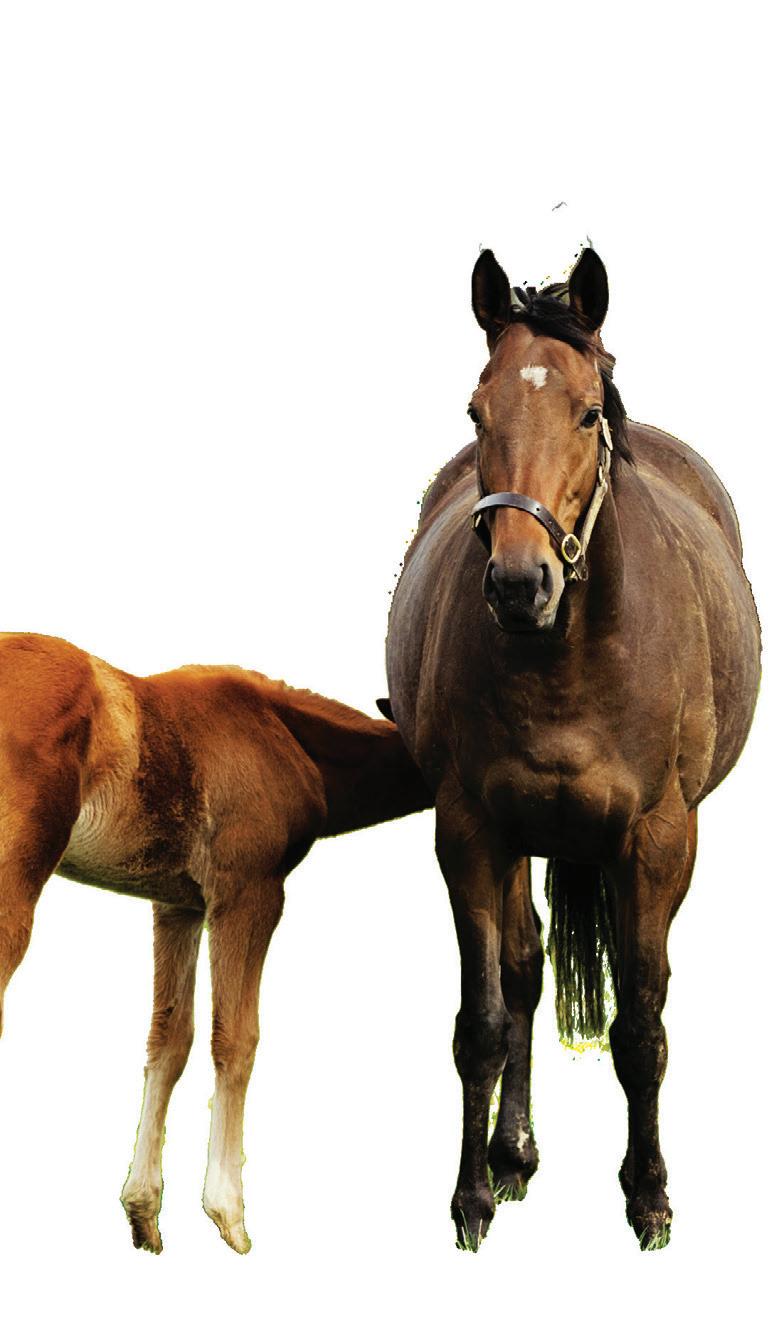
Reduce the risk of stress fractures by supplementing with Calphormin
Improves bone development & conformation
Supplements broodmare’s essential reserves
Shown to reduce OCD & DOD
Assists in the repair of fractures
Supports sound & robust athletic horses
Used by the top studs around the world
Recommended by veterinarians
Proven results
Feed to:

Weanlings, yearlings, & 2year olds
Broodmares in the last trimester

Call to claim FREE 10kg trial worth £166 01730 815800 | farmstable.com Order by 5pm for next working day delivery Order Now
foals
UK offer only, valid until 31/12/2023
In addition, many studies have shown that exercise of a dynamic nature in moderate distances, such as that achieved in the pasture or prescribed short-distance high-speed work is beneficial to musculoskeletal development and may prevent injuries when entering race training. It has also been observed that long slow work does not increase bone strength. Below is a summary of the young horse response of the various types of exercise.
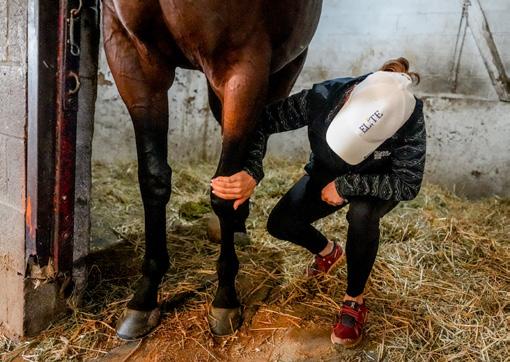

TYPE OF EXERCISE RESPONSE OF BONE
Pasture access
Trotting
Sprinting
• Increased mineral content of bone
• Greater cannon bone circumference
• Greater deposit of bone minerals when carrying weight compared to no weight
• Greater bone strength
• Greater cannon bone circumference
• Greater bone mineralisation
• Greater altered bone shape
Treadmill
Endurance training
• Greater bone density
• Greater impact strength on cannon bone
• No change in bone density
Articular cartilage
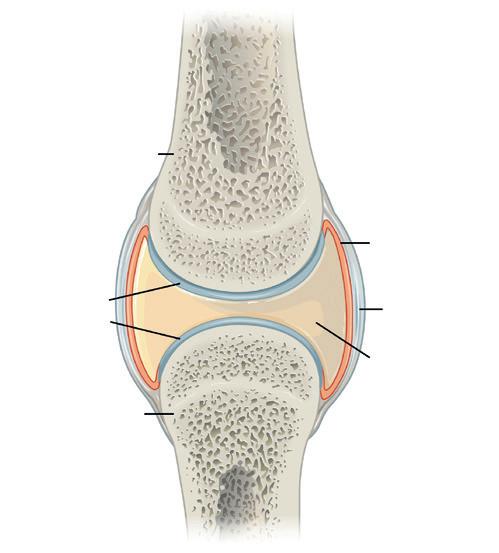
Articular cartilage is a highly specialised connective tissue found in joints with the role of providing a smooth, lubricated surface of articulation and to help transmit loads with a low amount of friction. The articular cartilage is a hyaline cartilage (flexible and strong tissue providing a smooth, slippery surface) with a dense “ExtraCellular Matrix” (ECM) consisting of specialised cells called chondrocytes, collagen and proteoglycans. These components help to retain water in the ECM that is required for the joints mechanical properties. As age increases, hydration of the matrix does decrease, resulting in stiffness. Chondrocytes are residential cells in articular cartilage that play a role in the development, maintenance, and repair of the ECM. They do respond to a variety of stimuli, including mechanical loads, growth factors, hydrostatic pressures, piezoelectric forces (formation of electric charge with force). Because of the lack of blood vessels, lymphatics, and nerves as well as being a harsh biomechanical environment, there is a limited capacity to heal and repair. In addition, chondrocytes have limited potential for replication, thus, have limited healing capacity; and chondrocytes survival depends on an optimal chemical and mechanical environment.
Maintaining joint health is vital, which requires the preservation of healthy cartilage tissue. Inactivity of joints is detrimental to articular cartilage; thus, regular movement of joints and dynamic loads is needed to provide a normal articular cartilage structure and function. Biochemical responses of the cartilage to exercise are not nearly as well known compared to bone. While the confinement of young horses stunts joint development, excessive straining of cartilage can also reduce joint development. It has been observed that pasture access was optimal for the development of joints and the confinement or excessive sprint exercise (12–32 sprints of 40 metres for 6 days a week for 5 months) causes detrimental effects on the joint and may be deemed as unnatural exercise. It is also thought that exercise is needed well before two years of age to allow cartilage thickening as well as the avoidance of confinement. It can be concluded that further studies are required with respect to level of exercise and type of exercise in order to achieve healthy cartilage tissue as there is clearly a fine line between frequency and intensity of exercise.
Joint structure
26 TRAINERMAGAZINE.COM ISSUE 83 | VETERINARY |
Articular cartilage Synovial membrane Bone Bone Articular capsule Joint cavity containing synovial fluid © ANATOMY & PHYSIOLOGY –OPENSTAX COLLEGE.
Tendons and ligaments
Tendons and ligaments are distinct but closely related tissues that have unique and important roles in musculoskeletal function and musculoskeletal disease. Tendons and ligaments are dense, fibrous connective tissues that connect muscle to bone or bone to bone, respectively. These tissues transmit mechanical forces to stabilise the skeleton and allow body movement. Tendons and ligaments consist mainly of collagen type I as well as small amounts of collagen III, IV, V, and VI. There are also various proteoglycans in tendons and ligaments that both organise and lubricate collagen fibre bundles. The elasticity of tendons and ligaments is due to the large amount of type I collagen. During locomotion, the tendon decreases energy cost to the horse by acting as a spring to store and release energy while stretching and recoiling in the stance and swing phases of each stride. Tendons and ligaments have blood vessels and nerves that allow the homeostasis and response to injury.
Tenocytes are tightly regulated by a series of growth factors and transcription factors that allow the synthesis, maintenance, and the degradation of the tendon extracellular matrix. Tendons are elastic, but tearing may occur if there is excessive loading on the tendon and the repair of collagen is a slow process. In addition, tendons have crimp morphology where the tendons buckle in a state of relaxation and act as shock absorbers. Unbuckling of the tendon occurs during loading. This crimp morphology may be disturbed if an injury occurs and also is reduced in older horses.
Due to the variation of activity of tenocytes in foals and young horses, it has been observed that both a lack of exercise and excess of exercise can impair tendon make-up and subsequent functionality. With the current data and research that has been gathered, it can be concluded that if horses take advantage of spontaneous exercise when in the paddocks (which they often do), the developing tendons may benefit and be at a lower risk of injury when racing training starts.
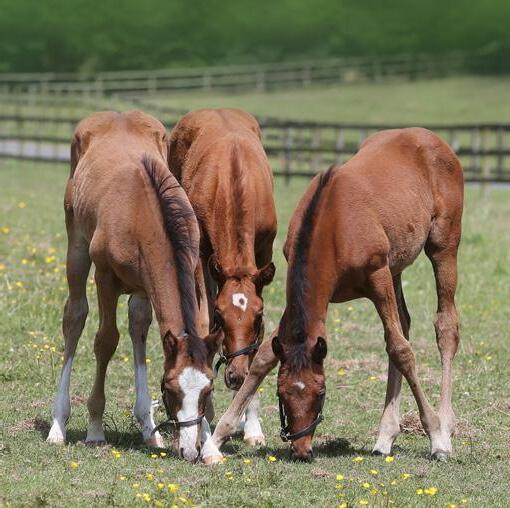
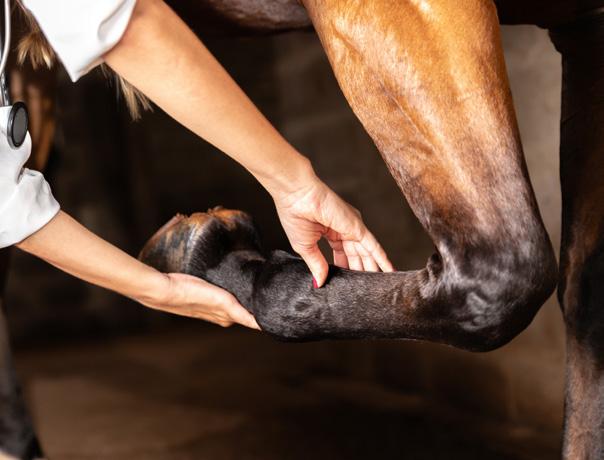
Conclusion
It is clear that further research is needed in order to ascertain the optimal amount and type of exercise that is needed in order to provide a strong musculoskeletal system and functional performance. However, it has been shown that prescribed exercise during the growth of the horse can increase the longevity of the horse’s health and performance. It has been observed that confinement and the lack of loading can result in weaker tissues and the loss of function of bone, tendons, ligaments and articular cartilage. However, it must also be recognised that medical attempts to alleviate pain so that a horse can continue to train through an injury can greatly increase tissue damage which is detrimental to the horse’s health and career. It is far more beneficial to provide an adequate amount of time for the injury to heal, thus, putting the horse’s health and wellbeing as a top priority.
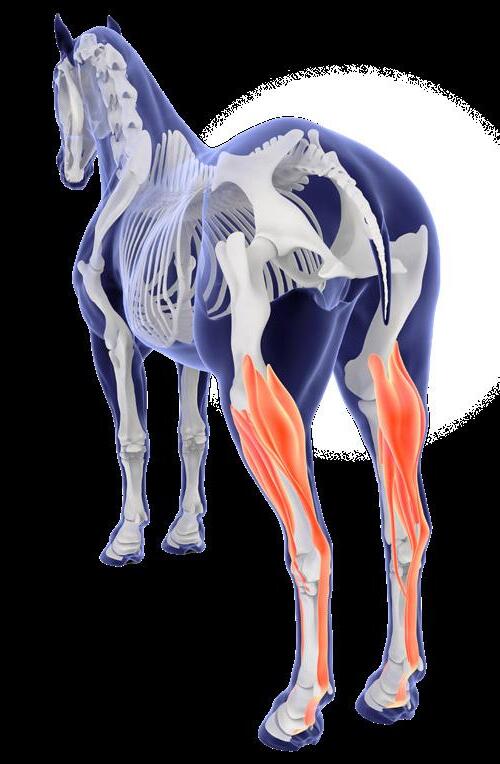
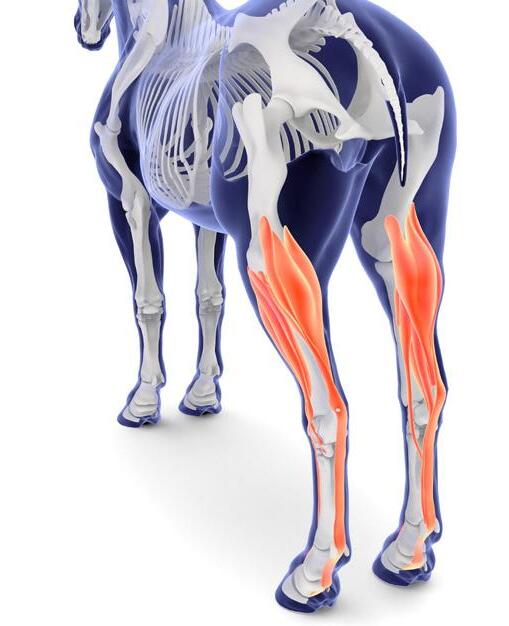
27 ISSUE 83 TRAINERMAGAZINE.COM | LOWER LIMB CONDITIONING |
Due to the variation of activity of tenocytes in young horses, both a lack of exercise and excess of exercise can impair tendon make-up.
The horse has no muscle below the knee and hock therefore relies on tendons and ligaments which transmit forces to stabilise the skeleton and allow body movement.
PHOTOGRAPHY: ADOBE STOCK, DAVID BETTS PHOTOGRAPHY, GALOPPFOTO.DE, ECLIPSE SPORTSWIRE, SHUTTERSTOCK
BONE DEVELOPMENT IN YEARLINGS FROM THE SALES RING TO RACING –A NUTRITIONAL PERSPECTIVE
Maintaining the equine skeleton is vital to ensure optimal development of the young growing horse, minimise risk of injury in the performance horse, and promote longevity and soundness.
The skeletal development and health of a young horse begins in utero and ensuring the broodmare receives the correct intake of key nutrients will be critical to the growth of the unborn foal. Producing high-quality milk places a significant drain on the mineral reserves of the mare. Maintaining mineral intakes during peak lactation is vital to ensure the foal receives the best nutrition to support the rapid skeletal development in the early weeks and months of growth. During this time, bone formation, body size, and muscle mass greatly increase. Risk of defective bone and related tissue formation increases with one of more of the following:
• Poor diet with the incorrect balance of energy and nutrients in the daily ration
• Inadequate amounts of calcium (Ca) and phosphorus (P)
• A reversed Ca:P ratio
• Low zinc (Zn) or copper (Cu) in the diet
• Low vitamin D
Feeding a young horse for a maximum growth rate is undesirable because bone hardening lags greatly behind bone lengthening. At 12 months old, the young horse could reach about 90 to 95% of its mature height but only about 75% of its mature bone mineral content.
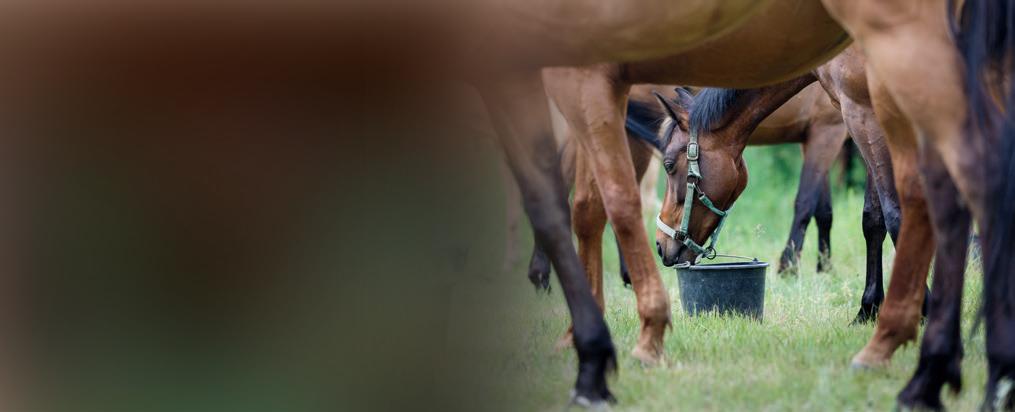
Ideally, young horses should gain weight at a rate that their developing bones can easily support. Growing bones and connective tissues don’t have the strength to support rapid weight gain from overfeeding, especially energy. Rapid weight gain can also make other skeletal anomalies worse. In these cases the risk of developmental orthopaedic disorders (DOD) and unsoundness increases.
DOD and unsoundness can also occur during uneven growth. For example, switching an underfed, slow-growing horse to a good diet that allows quick growth (compensatory growth), increases the risk of DOD. Foals between the ages of 3 and 9 months of age are at greatest risk of DOD.
Fresh forages, for example grazed grass, usually provide enough major minerals such as calcium (Ca) and phosphorus (P) for the growing horse. However, there can be significant variation in calcium and phosphorus levels in all forages but particularly preserved forages (hay and haylage). Forage analysis should always be undertaken to determine mineral composition.
For young fast-growing horses, the diet must supply the quantities of calcium and phosphorus needed for normal bone formation. In terms of Ca:P ratio, the ratio must be positive in favour of calcium. Horses are much more tolerant of high-dietary calcium than other species. For practical purposes, a good guideline would be to keep the ratio Ca:P between 1.5 to 1 and 2.5 to 1. Grains (e.g., oats) contain 10% of the calcium level found in typical forages. Grains are poor sources of calcium, both in terms of the amount of calcium supplied and their effect on Ca:P ratio in the diet. Where grains are fed, supplementation will be necessary to balance the diet.
While some forages may contain adequate calcium and phosphorus, they will typically supply less than 20% of the daily requirements for trace elements. Supplementation of trace elements will generally be necessary to support normal bone development.
Where concentrates are fed (especially low levels), supplementation may still be necessary to balance the overall mineral and trace element intake. Nutritional advice should be sought to ensure the horse’s diet is correctly balanced. To meet the carefully balanced requirements of key minerals, it is advisable to supplement the daily rations of growing horses and young horses entering training with an appropriate nutritional product.
Make sure that the supplement used contains the correct ratio of calcium and phosphorus, as well as other key nutrients such as vitamin D and chelated trace elements (copper, manganese, and zinc) to support normal bone development.
Supplementing branch chain amino acids in the diet ensures that growth is maintained. Lysine plays a key role when protein concentrations in the body are low. Vitamin A supports collagen formation, which is a key component of the supportive structures of joints (tendons and ligaments). Vitamin D3 is added to enhance calcium absorption.
Although growth rates slow after the age of two, they are still juvenile in their skeletal development with some growth plates, such as the shoulder and stifles, yet to completely close. Although they may look like fully grown adults, it is still important to meet nutritional requirements especially if starting training and work. With the addition of exercise and training, a young horse’s nutritional needs change. The added forces from groundwork on the long bones and increased requirements of other nutrients like electrolytes need to be considered.
Finally, horses all grow and develop at different rates because of factors such as genetics. Some youngsters will need more support for longer periods of time than others, so it is important to manage accordingly.
28 TRAINERMAGAZINE.COM ISSUE 83 | NUTRITION | WORDS: DES CRONIN B.Ag.Sc, MBA
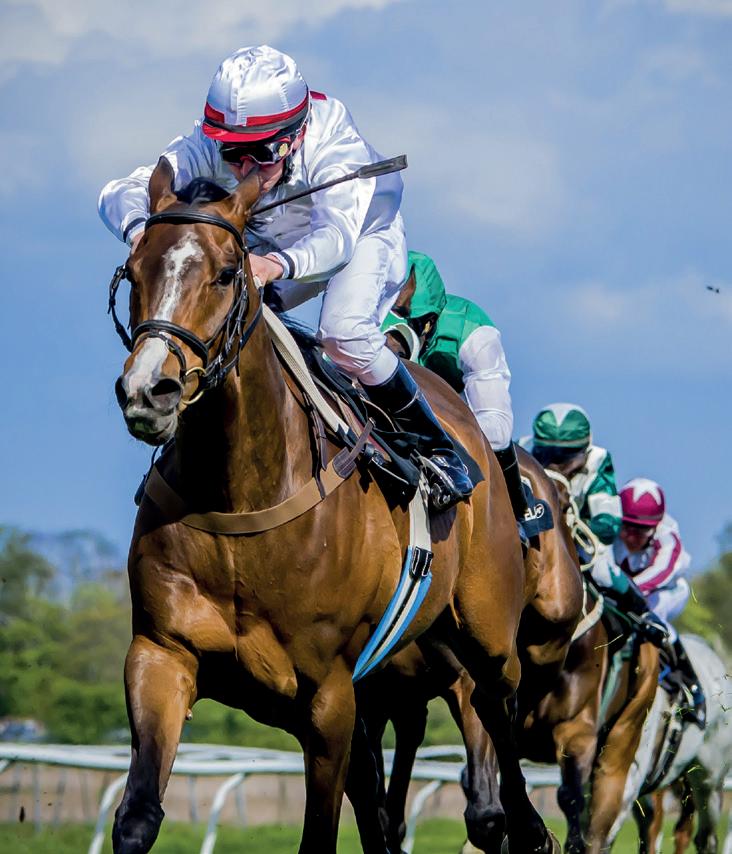






IRELAND
WHO SHOULD BE DICTATING THE RULES OF RACING?
THE RACING INDUSTRY OR GOVERNMENT?

| INDUSTRY | TRAINERMAGAZINE.COM ISSUE 83 30
Regular readers of this publication will already be well aware of racing’s social licence and the efforts required to ensure the sport’s popularity with the public and, essentially, the wellbeing of our participants. EU legislation is increasing in strength in addressing equine welfare in general, but in Germany in particular, laws coming down from the government are impacting many racing yards.

The law introduced last year regarding minimum paddock time for all horses is one such notable problem. As Belgian trainer Guy Heymans points out, “Turnout for horses every day is not the same as the requirement for horses to remain in paddocks. If I understand correctly, the demand is not just turnout; they mean that the horses are in a paddock for a certain period of time every day. It’s OK for me, but a trainer with 20 horses or plus in training will probably not have enough paddocks, and it is difficult to keep such a horse in shape. Of course it is a plus for horses to spend a short time in the paddock, but when they demand horses stay permanently in paddocks, it is impossible to bring a horse to top form”.
Not every trainer may agree with that, and some have enjoyed great success ‘training from the field’, but it is a matter of personal choice and methods, as well as having the luxury of such choice. It isn’t so much about making our own decisions on equine welfare in particular, which we would all prefer to embrace as much as we can; but it’s more about the practical ability to do so and the apparent gulf between those setting the rules, and now laws, and those who have to apply them in daily practise.
“There are some countries lagging a bit behind in welfare, and I would be happy to see more legislation coming in,” says Irish trainer
Amanda Mooney. “We just have to learn to adapt and work with it. Sweden has a very high standard of welfare and a very good aftercare service. Horses aren’t just sold on and rehomed; they’re put out on loan—the same as the Godolphin Lifetime Care programme. I think more could be done for aftercare”.
Germany has the strictest animal welfare legislation worldwide and is the only country in the EU to have integrated animal welfare into its constitution. German law could be the crystal ball into the rest of European racing’s future. In 2018, horses were no longer allowed to run in a tongue-tie, as a result of animal welfare concerns. Rüdiger Schmanns, director of racing for German Racing, said at the time, “In all other equestrian sports in Germany the use of tongue-ties is banned—racing was the last equine sport which allowed tongue-ties. With growing animal welfare activities, especially in Germany, there was no possibility of allowing the use of tongue-ties to continue”.
This year, stricter whip rules were adopted; and any jockey who uses the whip six times in a German horse race could expect an 84-day ban under the new penalty system. The number of strokes of the whip allowed per race has been cut from five down to three, and the length of bans for going more than one over the limit can now be measured in weeks and months, rather than days.
“This looks extreme but will hopefully not occur,” said Rüdiger Schmanns. “The animal health pressure is high in Germany. We would like to have harmonised rules regarding the whip at least in the whole of Europe, but that seems to be a long way off as the differences in England and Ireland compared to France and Germany are still quite big”.
WORDS: LISSA OLIVER PHOTOGRAPHY: GALOPPFOTO.DE, DAVID BETTS PHOTOGRAPHY, SHUTTERSTOCK
| RACEHORSE WELFARE | 31 ISSUE 83 TRAINERMAGAZINE.COM
At least those rules are coming down from racing’s governing bodies, assisted by Boards of selected professionals representing all industry stakeholders. In theory, the Rules of Racing should be a suitable compromise agreed by all for the betterment and progression of the sport. But what happens when Rule changes have not involved industry stakeholders? When changes come from government level they may not always be the desired result of consultation with racing’s professionals.
The Rules of Racing have historically been set down by industry participants to govern the sport in a fair manner. The earliest known example is quite literally set in stone and dates to the earliest part of the first century, some 2,000 years old. Professor Hasan Bahar’s 2016 discovery (pictured above) at an ancient Roman racecourse in Turkey—the oldest existing tablet describing the rules of horseracing—illustrates a keen sense of fairness in the sport. Prof. Bahar points out, “It says that if a horse comes in first place in a race, it cannot participate in other races”. A winning owner was also forbidden from entering any other horses into an event’s subsequent races, presumably to give others a chance at glory, Prof Bahar suggests. “This was a beautiful rule, showing that races back then were based on gentlemanly conduct”.

It also highlights the origins of the sport’s governance, replicated in Britain by the next earliest-known Rules of Racing set by The Jockey Club in 1750. The Rules were dictated by racehorse owners to preserve and progress their racing and breeding interests. Even prior to a rule book, in 1664, it was King Charles II who personally wrote The Rules of the Newmarket Town Plate. According to Whyte’s History of the English Turf (1840), King Henry VIII passed a number of laws relating to the breeding of horses. Racing was a self-governing institution, more to the point, one governed by racehorse owners.
Nevertheless, governments haven’t always been keen for that arrangement to continue. The British Jockey Club was formed in 1750, specifically to create and apply the Rules of Racing in the wake of a decade of Parliamentary opposition to the sport.
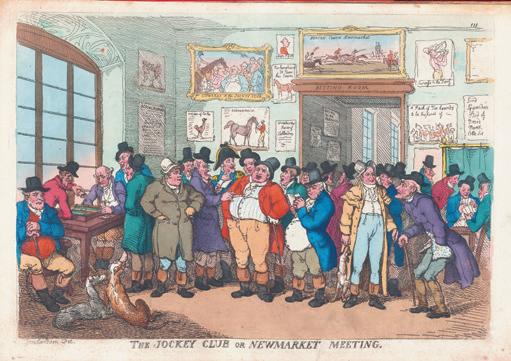
There are few racing nations left where the original governance of a Turf Club or Jockey Club hasn’t transitioned into a State-funded corporate body.
Parliamentary opposition to the growth of horse racing in the 1740s focused on the damaging effect of gambling. Three hundred years on, no other sport has entangled itself so constrictively with gambling. Racing’s economy is no longer based on the revenue of racehorse owners, and the sport is answerable to the holders of the purse strings.
While researching a quote from former Member of Parliament Sir Clement Freud, who claimed that “horse racing is organised purely to generate taxes,” the transcript of an interesting House of Lords debate surfaced. Though dated February 1976, the facts, figures, and sentiments quoted could as easily place it in 2023, which makes for a sorry commentary on British racing.
32 TRAINERMAGAZINE.COM ISSUE 83 | INDUSTRY |
©THE JOCKEY CLUB OR NEWMARKET MEETING BY THOMAS ROWLANDSON, 1756-1827.
ABOVE: Britain’s earliest-known Rules of Racing were set by The Jockey Club in 1750. In contrast to the King’s Plates rules, the new rules took into account different kinds of contests involving horses of various ages.
The establishment of a Royal Commission on Gambling led to Sir Clement Freud remarking on the “large number of otherwise non-viable racecourses kept open to ensure sufficient races being run, even as the financial rewards to the owners and trainers declined to the point where most could barely cover their expenses”.
During the House of Lords’ debate on the matter, Lord Newall observed, “The income from betting is believed to reach the optimum level with two meetings every day with staggered starting times. After this, the same money apparently chases after more horses”. And perhaps initiating an argument that continues to this day, Lord Gisborough pointed out, “There has been, and often is, criticism of the value of the Pattern race prizes, but these few races at the top of the pyramid of racing are the necessary incentives to encourage breeding of the best animals, the very capital of the industry. It would not help racing in the long run if the value of the Pattern prizes were to be spread over the rest of racing. They provide the vital opportunity for the best horses of the world to be matched together, without which the best British horses would have to race more abroad to prove their value for breeding purposes”.
Perhaps we digress here, but the relevant points of 40 years ago, 300 years ago and, indeed, 2,000 years ago are summed up by The Lord Trevethin Oaksey, who explained, “What you need is honourable, fair-minded, unbiased men who are answerable
to nobody but themselves, and who have as much experience as possible of the problems involved”.
And therein lies the modern problem, with racing dependent upon gambling revenue and accountable to the betting operators and the taxpayer. Self-governance is fast becoming a thing of the past, but the bigger problem is being given the necessary time and finances to adapt.
In our 2021 winter issue, German trainer Dominik Moser warned, “We have so many new rules and many more rules being introduced for next year. All horses must spend a number of hours out in the paddock each day, and they must be assessed by a vet before going into training. I have paddocks for my horses, but I don’t currently have enough for all of them to be out every day, so I have to build more paddocks. My aim is that all of my horses will be able to go out from after they have finished training at 1pm until the evening. The training centres, such as Cologne, will have a big problem, because there is not enough space for the number of paddocks needed.
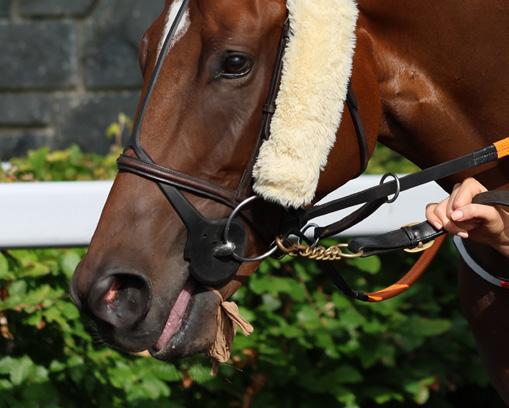
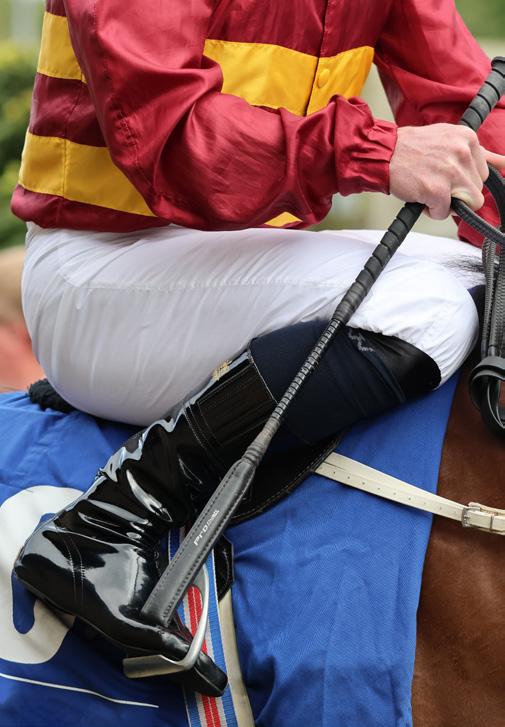
“These rules are coming directly from government, not from Deutscher Galopp. I like that we think more about the horses; we have recently been thinking more about the people, the jockeys and staff. The horse had stopped being our number one concern. This is the right way, but the rule is not easy to adapt to; we haven’t been given time to prepare”.
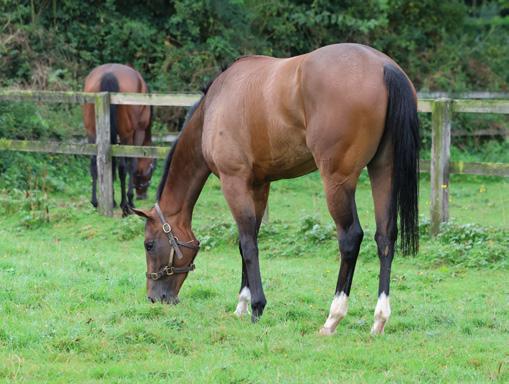
33 ISSUE 83 TRAINERMAGAZINE.COM
| RACEHORSE WELFARE |
RIGHT & BELOW: Germany has the strictest animal welfare legislation worldwide. In 2018, horses were no longer allowed to run in a tongue-tie and this year, stricter whip rules were adopted where bans can now be measured in weeks and months, rather than days.
Christian von der Recke agrees wholeheartedly with the reasoning behind the legislation and tells us, “From day one, our horses go to the paddock; and I am sure that is part of the success. They enjoy more variety and have less stomach ulcers. More exercise is the key to success”. However, von der Recke has a large private facility at his disposal, with ample paddock space, denied to those trainers based at training centres.
One such centre is Newmarket, where John Berry reasons, “It’s clearly preferable to turn one’s horses out for part of the day rather than have them confined in their boxes for 23 hours a day or more; but some people prefer not to do so, often because of not having either the time nor the space to do so. Just common sense says it’s better for them mentally, and physically too; but each to his own.
“I’d actually regard not gelding horses as a far bigger concern as regards horses’ mental well-being than lack of freedom, but that’s by the by. Obviously, some colts have to remain colts to ensure the survival of the species, but only a tiny percentage are required for stud duties; and keeping the others as colts rather than gelding them is just nuts. Sexual frustration must be at least as great a cause of anguish for horses as frustration at lack of liberty.
“I’d have thought if a government wanted to do something to increase the sum of equine happiness, addressing this issue might be more appropriate, but obviously it would be hard to frame the laws satisfactorily.

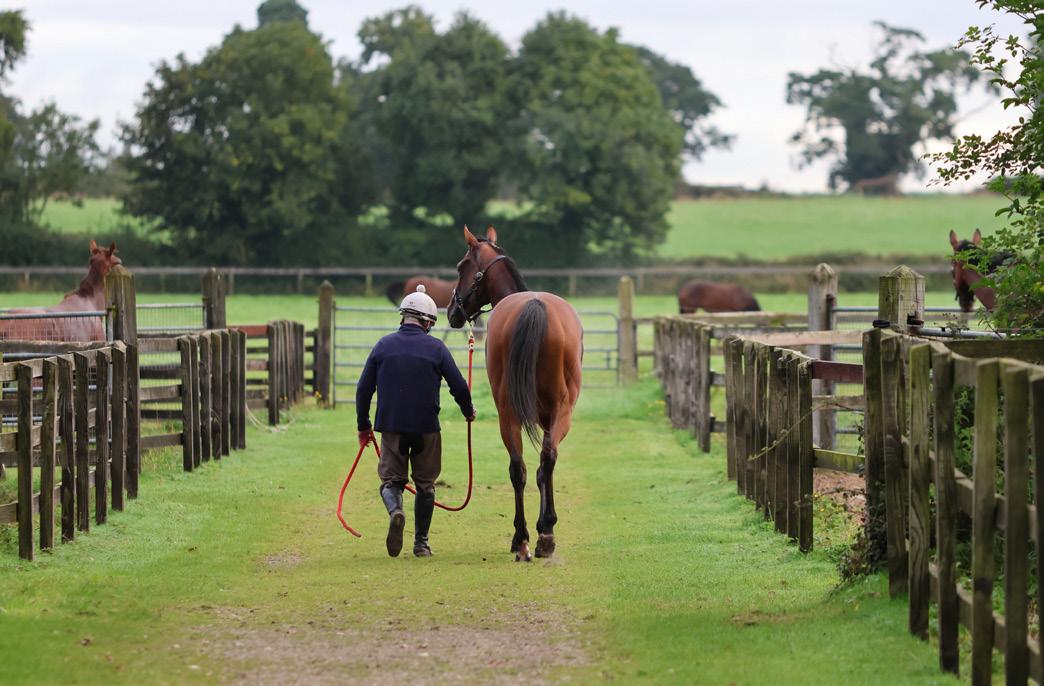
“Obviously in utopia every horse would have access to freedom and to companionship (although the latter isn’t always a good idea with colts), but life isn’t utopian. Similarly, it would clearly be a good idea if every dog could have a life where he can have a run off the lead every day, every school would have good sports facilities, and every community would have good recreation and leisure facilities. But we can’t even manage to achieve that with humans, so I’d be surprised if the government thought that this was a worthwhile way to direct its energies”.
British government’s current distraction is reforming gambling legislation, which is creating anxiety and even panic among the
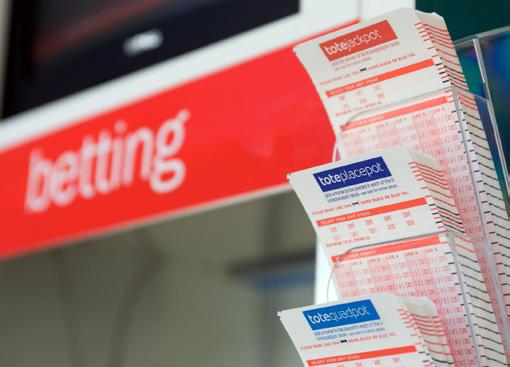
racing community. Once again, it’s social licence and a need to enforce ‘protection’ that attracts government attention, with affordability checks upsetting punters and threatening horse racing’s revenue.
In Ireland, that same focus is the driving force behind the Gambling Regulation Bill, which proposes a ban on televised gambling advertising between 5.30am and 9pm, which of course affects a large portion of advertising on live horse racing coverage. As a result, Racing TV and Sky Sports Racing have threatened to pull their racing coverage in Ireland, stating that their service will become “economically unviable”.
This no longer comes down to welfare or integrity within the sport. Do we protect the vulnerable or protect our own interests, even in the knowledge our interests conflict? We may try to excuse our decision, but further down the line, as more attention is put on the sport, will we really be able to defend our corner?
34 TRAINERMAGAZINE.COM ISSUE 83
| INDUSTRY |
ABOVE: The British government’s current distraction is reforming gambling legislation, which is creating anxiety among the racing community.
The law introduced last year in Germany regarding minimum paddock time for all horses is a notable problem for some trainers.
Success From the Inside Out
“SUCCEED is a fantastic product that has helped my horses maintain condition throughout the season. The results speak for themselves.”
Support total gut health with SUCCEED® once a day, every day.
SUCCEED offers a natural approach to the ongoing management of digestive health in athletic horses. Optimal digestion contributes to better appetite, nutrition, body condition, willingness, and overall ability to perform. When horses are comfortable and healthy inside, they are focused and able to perform to full potential on the outside. Get your horses at their best with SUCCEED.
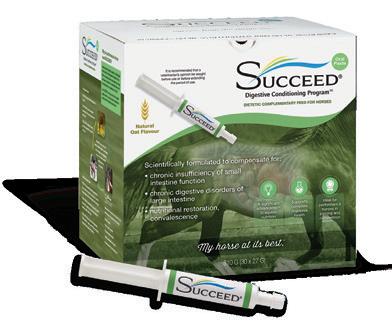
CONTACT SANDRA HUGHES at +353 (0) 873781739
For information, product trial eligibility, and how to buy. succeed-equine.co.uk/race
SAFFRON BEACH
Winning the 2022 Royal Ascot Duke of Cambridge Stakes
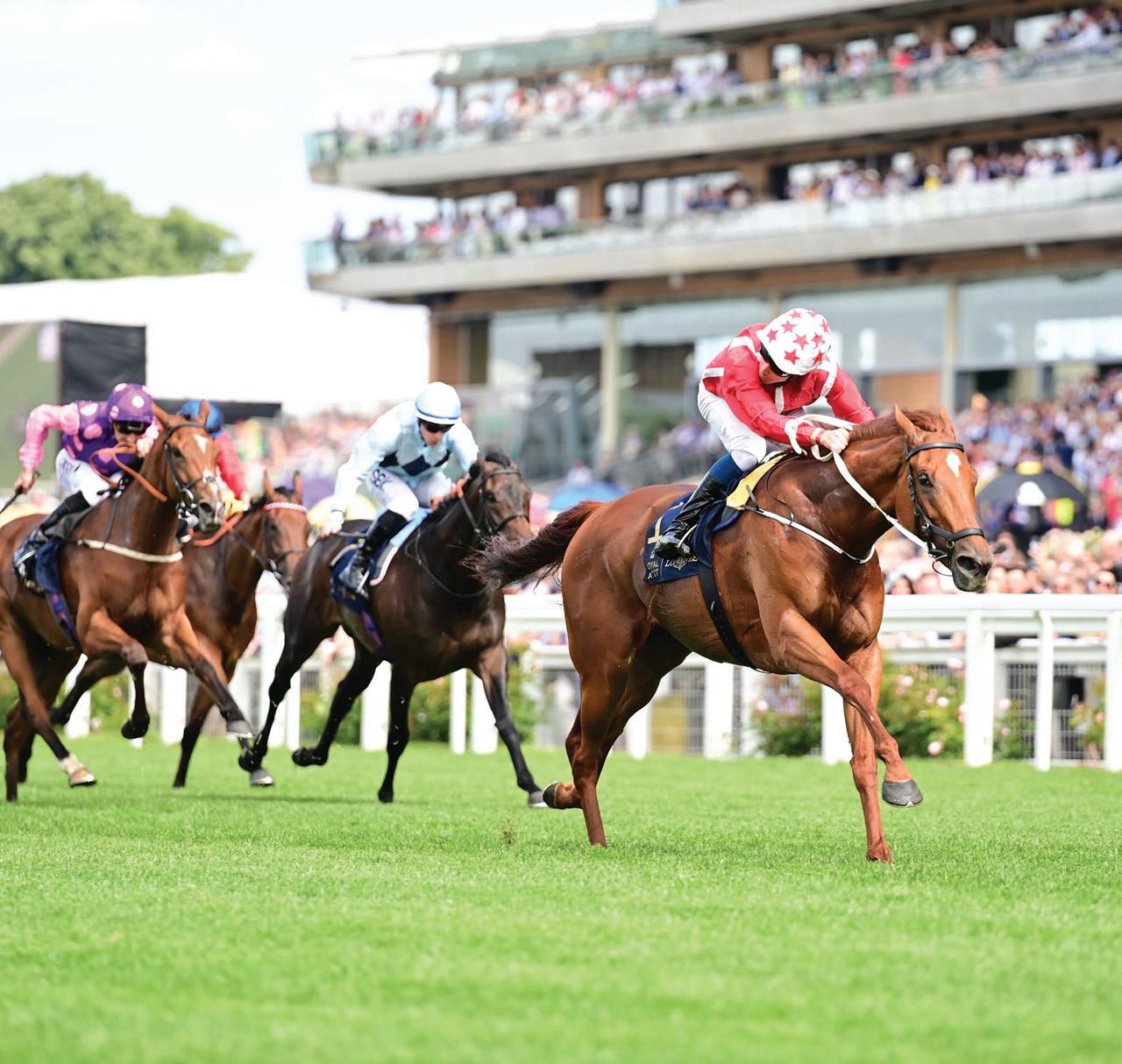
SUCCEED is a registered trademark and Digestive Conditioning Program™ is a trademark of Freedom Health LLC. © 2023. All Rights Reserved.
Jane Chapple-Hyam, Trainer
Ryan McElligott, CEO Irish Racehorse Trainers Association, announced in reaction to the bill, “If Racing TV determined it was no longer viable to broadcast in Ireland, then Irish racing disappears off our screens. That would be detrimental to the whole industry.

“There are plenty of owners who don’t get to go racing as much as they would like, but it’s very easy to watch their horses run should they not make it. If you take that away, I think that would put a huge dent in the sport’s appeal and also demand from an owner’s point of view. It would put us at a huge disadvantage when compared to other jurisdictions.
“We’re talking about subscription channels, and it is a requirement that you are over the age of 18 to buy a subscription to a package like Racing TV. These dedicated racing channels exist behind a paywall, so there is already a safeguard there.
“Every facet of the industry is wholly supportive of gambling regulation which protects vulnerable people. This is not a deliberate move to damage the sport; this would be an unintended consequence. It is hugely concerning for the industry”.
In Britain, owners have already very publicly left the game as a result of the Gambling Act Review White Paper financial risk checks. All betting operators have a social responsibility to create a safe environment, and how much money a client can afford to spend on gambling is a key part of the safe environment.
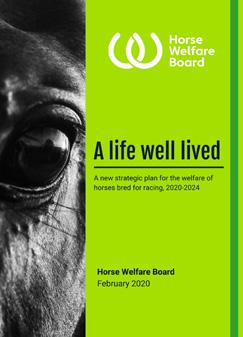
Secretary of State for Culture, Media and Sport, Lucy Frazer KC, described the White Paper as “consumer freedom and choice on the one hand, and protection from harm on the other” while stating in the House of Commons in April: “With the advent of the smartphone, gambling has been transformed: it is positively
unrecognisable today, in 2023, from when the Gambling Act was introduced in 2005. Temptation to gamble is now everywhere in society, and while the overwhelming majority is done safely and within people’s means, for some, the ever-present temptation can lead them to a dangerous path. When gambling becomes addiction, it can wreck lives: shattered families; lost jobs; foreclosed homes; jail time; suicide. These are all the most extreme scenarios, but it is important to acknowledge that, for some families, those worst fears for their loved ones have materialised. Today we are bringing our pre-smartphone regulations into the present day with a gambling White Paper for the digital age”.
More and more, we can expect legislation to encroach on the racing industry and force us to face moral dilemmas. Racing jurisdictions are doing their best to be seen by the public to be doing their best for equine welfare. Currently, Ireland has a very basic 28-page “Our Industry, Our Standards” guide to equine welfare; France has a very comprehensive 139-page “Charter for Equine Welfare,” based upon the official EU Paper; Germany has a 44-page “Animal Welfare in Equestrian Sport Guideline”; and Britain has “A Life Well Lived,”—a 130-page welfare strategy. Sweden, renowned throughout other racing nations for its top-class welfare, relies on a website to provide current guidelines and information.
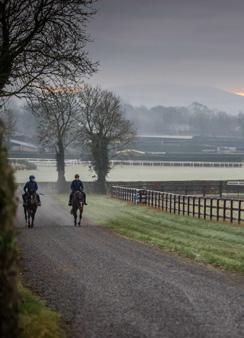
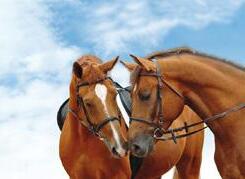
The EU Discussion Paper on Equine Care, adopted so well by France Galop in its charter, has multiple language versions and informative images, making it a simple solution for those countries lagging behind. It is also of visual appeal to those outside of the sport seeking reassurance. We may not consider them to be relevant, but they are proving to be the most important players in rulemaking.

36 TRAINERMAGAZINE.COM ISSUE 83
| INDUSTRY | | RACEHORSE WELFARE | Charte pour le Bien-Être Équin Offrir un lieu de adéquat Établir une Onne relatiOn hOmme cheval Garantir une alimentatiOn adaptée veiller à la bO santé assurer une fin vie décente faciliter les cOntacts Ociaux prévenir la dOuleur favOriser une activité Tierschutz
Leitlinien zu Umgang mit und Nutzung von Pferden unter Tierschutzgesichtspunkten Our Industry, Our Standards Principles of Animal Welfare In Ireland’s Horse Racing Industry Irish Thoroughbred Welfare Council
im Pferdesport
LEFT: Racing jurisdictions are doing their best to be seen in a positive light by the public with various guidelines, strategies and information available in either print of online on the subject of equine welfare.
TAKE THE FUSS OUT OF GASTRO HEALTH
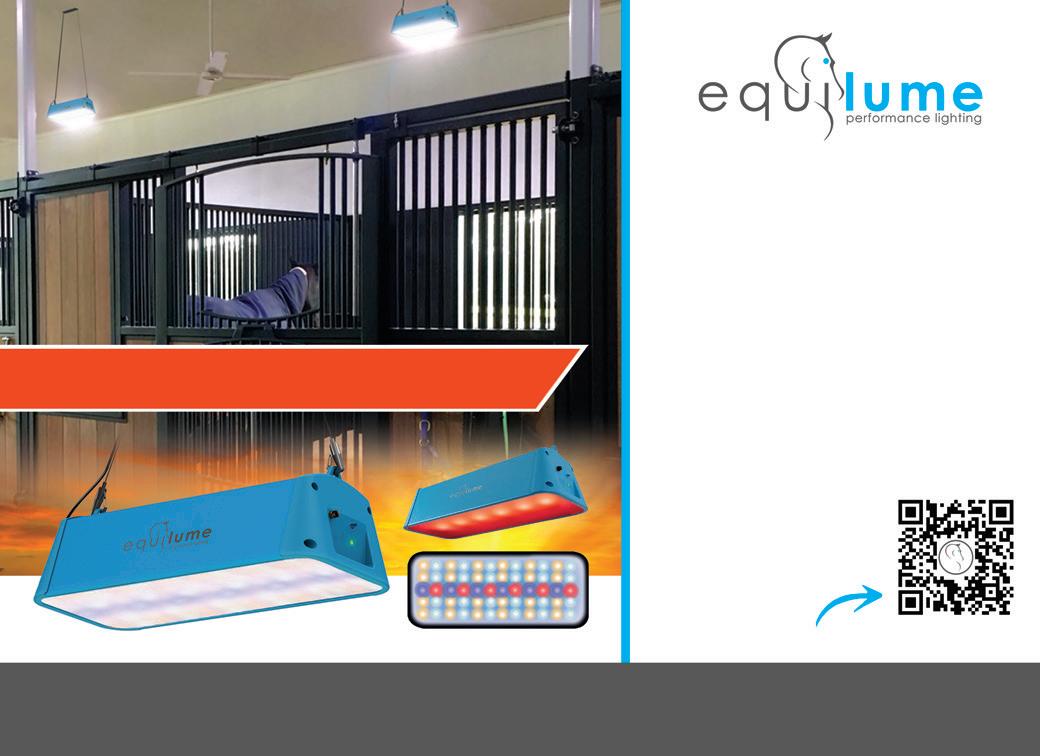
COMPREHENSIVE GUT SUPPORT FOR HORSES PRONE TO GASTRIC DISTURBANCES





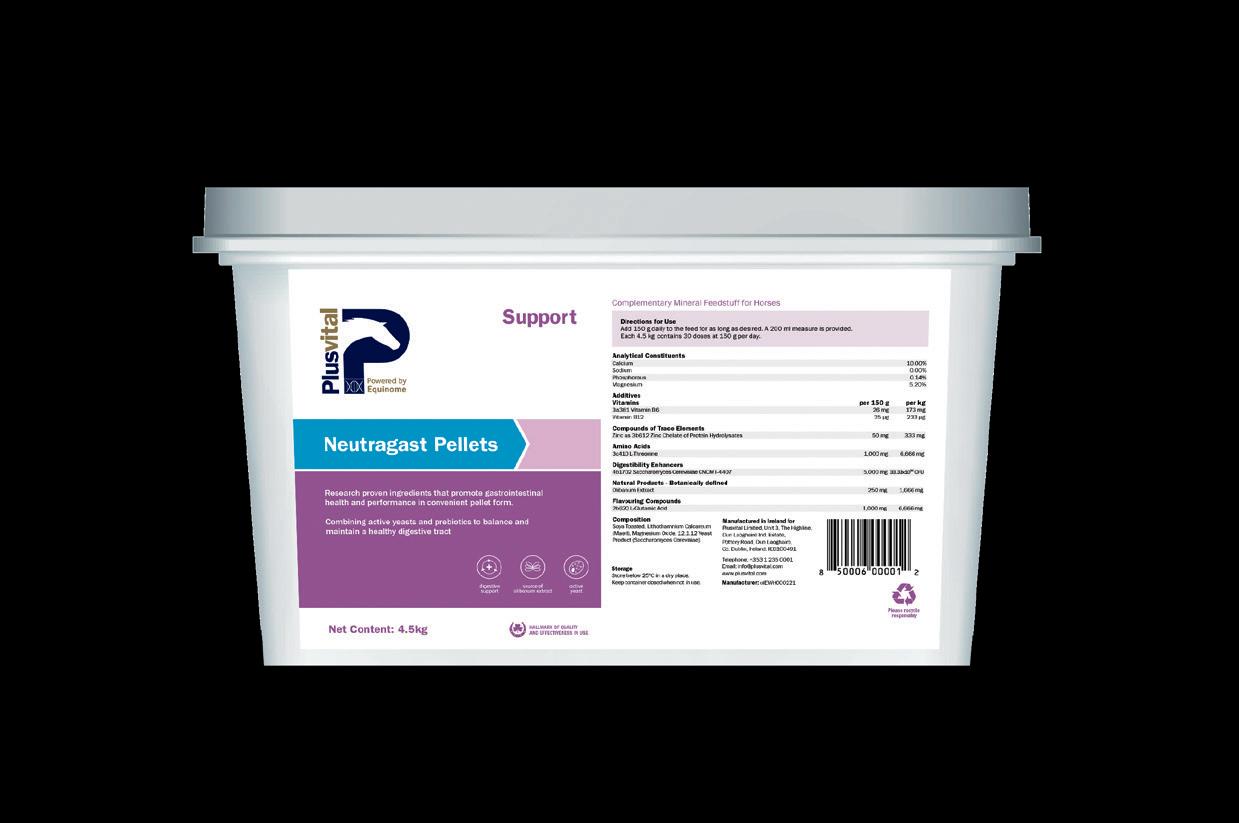


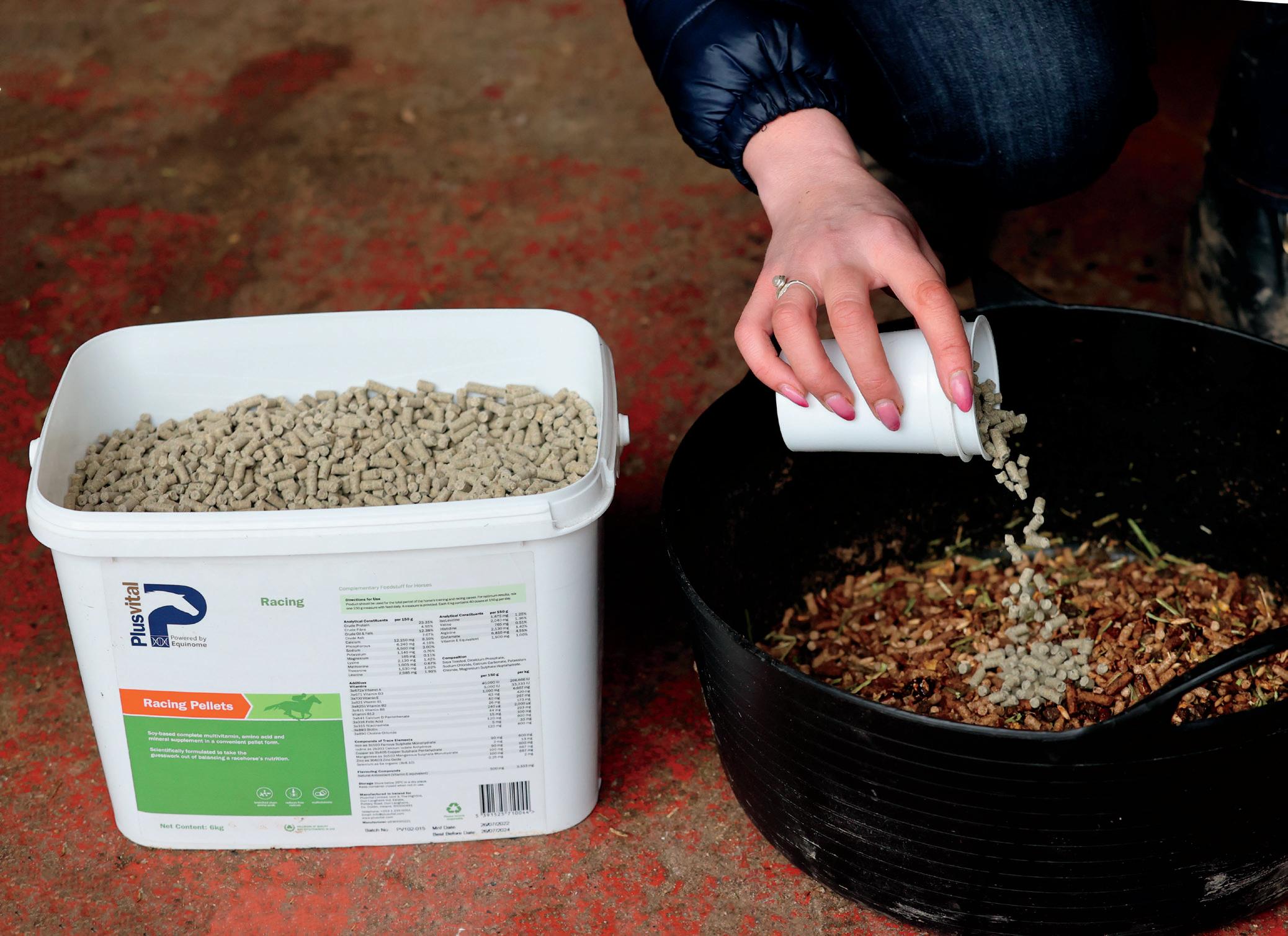
SCAN TO LEARN MORE
N e u t r a g a s t P e l l e t s
IN RACEHORSES: WHAT TRAINERS SHOULD KNOW
Why are gastric ulcers so important in racehorses?
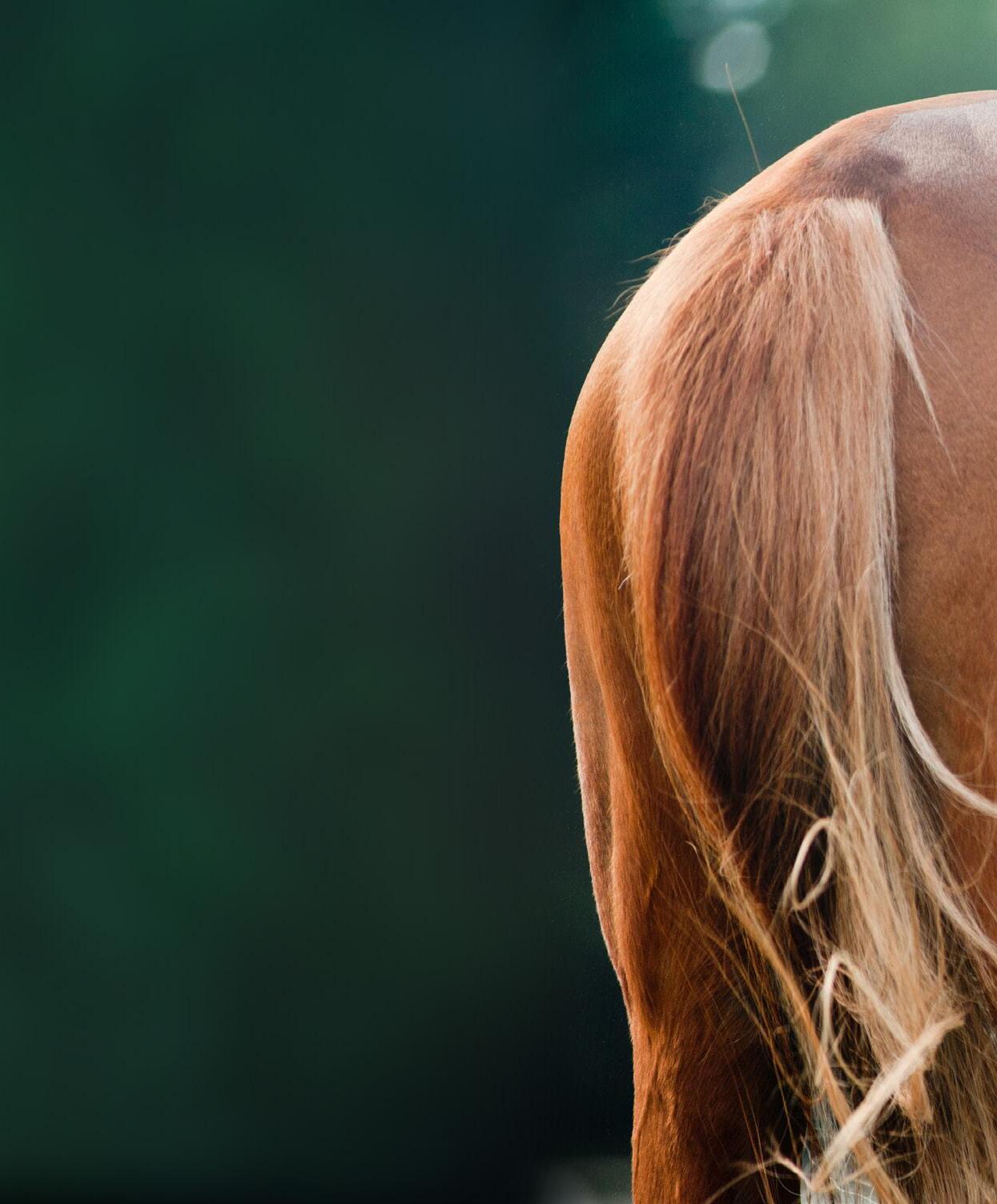
Gastric ulcers are very prevalent in racehorses, with between 52% and 93% of horses in active training affected. This is significant, because gastric ulcers can impact both the horse’s performance and its overall health and welfare, which in turn can have financial and competitive implications for their owners, trainers, and the racing industry as a whole.
Gastric ulcers can affect a horse’s performance by causing abdominal discomfort and reduced appetite. This can lead to changes in stride length and decreased energy levels that may impact their racing performance. Horses with gastric ulcers may also exhibit changes in behaviour, such as nervousness, aggression, or reluctance to train or race, which again, can affect their overall performance and temperament.
If left untreated, gastric ulcers can lead to more serious health concerns such as colic, potentially requiring costly medical intervention and downtime for the horse. But most importantly, gastric ulcers are a welfare issue for the thoroughbred racing industry, and with growing public scrutiny on the industry, ensuring the well-being of racehorses is a priority, and addressing gastric ulcers promptly should be considered part of responsible horse management. This requires a close working relationship with your vet, who will be able to give you expert advice about diagnosis, treatment, and management of this frustrating disease.
38 TRAINERMAGAZINE.COM ISSUE 83
| VETERINARY |
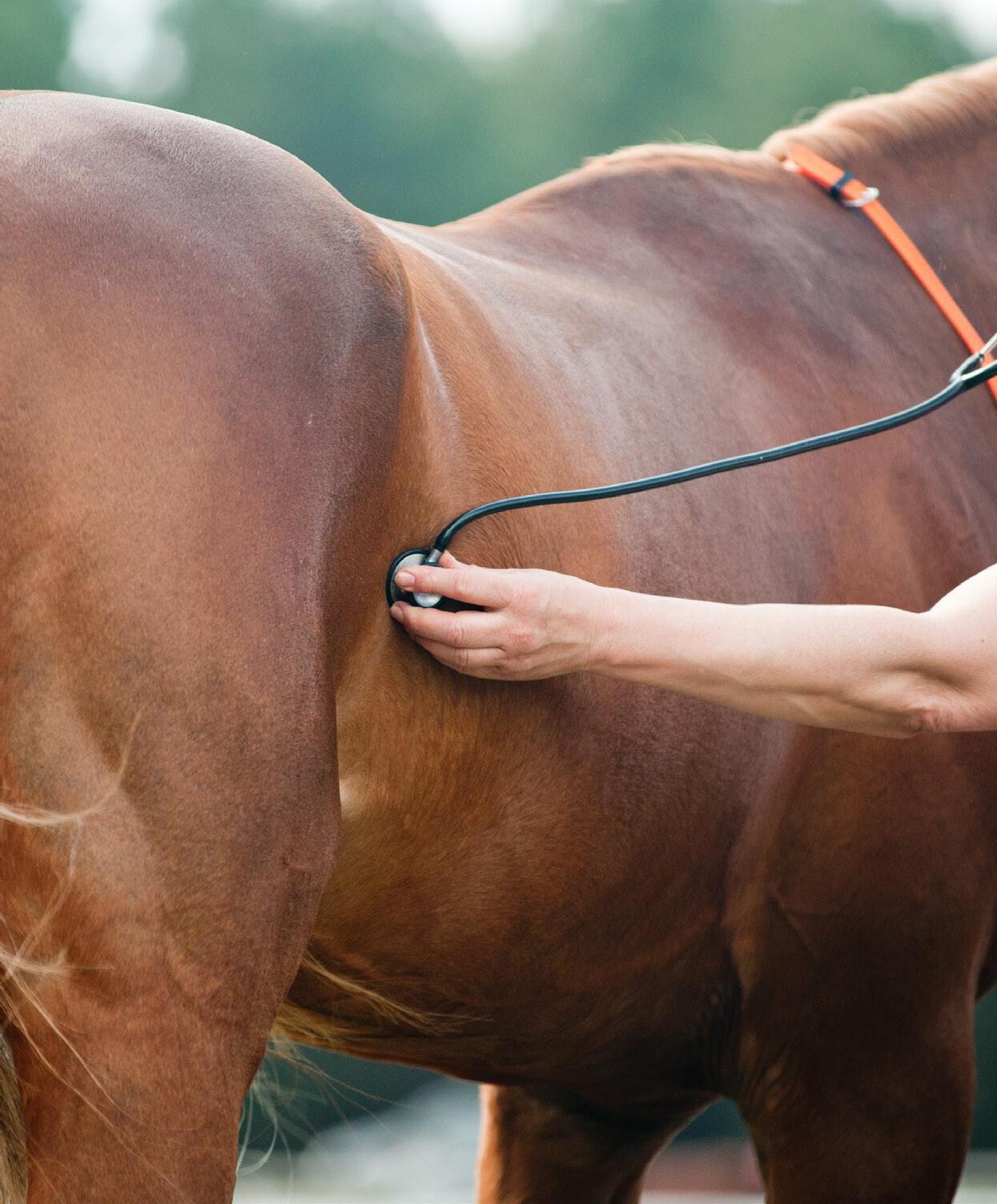
39 ISSUE 83 TRAINERMAGAZINE.COM
WORDS: DR MICHAEL HEWETSON PHOTOGRAPHY: DR MICHAEL HEWETSON, GALOPPFOTO.DE, PAM MACKENZIE PHOTOS, i STOCKPHOTO, SHUTTERSTOCK
Understanding gastric ulcers
Equine gastric ulcer syndrome (EGUS) is a general term used to describe erosions and ulcers of the horse’s stomach and is similar to the term peptic ulcer disease in people. Unlike people however, the horse is unique in that the stomach lining (mucosa) is divided into an upper squamous and a lower glandular portion (Fig. 1); and it is important to realise that there are differences between these two regions with respect to how these lesions develop, their prevalence, associated risk factors and response to treatment. Therefore, when referring to EGUS, your vet may use the terms equine squamous gastric disease (ESGD) and equine glandular gastric disease (EGGD) to clearly distinguish the anatomical region of the stomach affected.
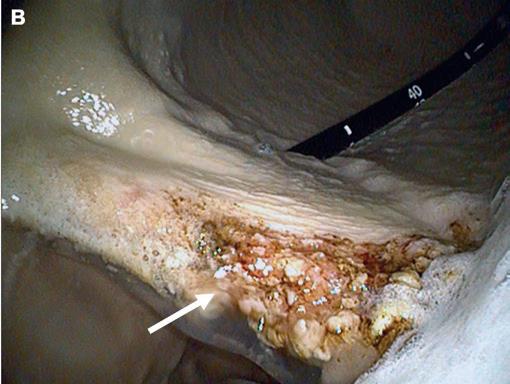
There does not appear to be a clear relationship between the presence of squamous disease and glandular disease, and the fact that both conditions may occur concurrently in the same horse does not indicate that they are associated. In the case of squamous disease, the cause of the ulcers is well understood, with a variety of managemental risk factors (e.g. increase in exercise intensity, low roughage/high starch diet, stall confinement) contributing to an
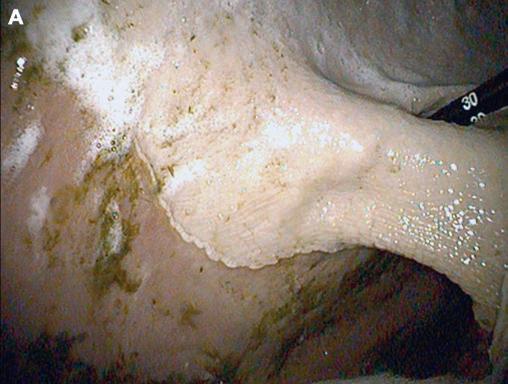
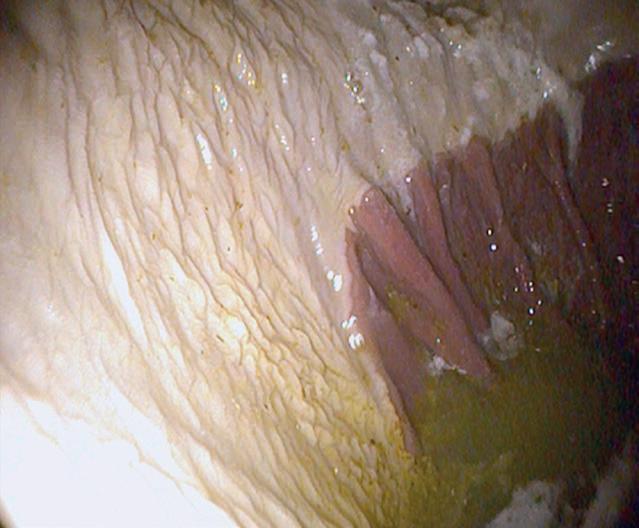
increase in the exposure of the squamous mucosa to acid. The squamous mucosa is not normally exposed to acid. As such, it is inherently susceptible to acid injury, and with prolonged acid exposure, ulcers may develop (Fig. 2).
In contrast to squamous disease, the cause of glandular disease is poorly understood. The glandular mucosa is fundamentally different from the squamous mucosa in that it is exposed to a highly acidic environment under normal physiological conditions. As such, it is only when there is a breakdown of the normal defence mechanisms that protect the glandular mucosa from acidic gastric contents that glandular disease occurs. While ulcers are most commonly seen with squamous disease, horses with glandular disease rarely present with ulcers. Rather, the lesions are more consistent with an erosive inflammatory gastritis and can vary widely in their appearance (Fig. 3).
40 TRAINERMAGAZINE.COM ISSUE 83
| VETERINARY |
EQUINE GASTRIC ULCER SYNDROME (EGUS) IS A GENERAL TERM USED TO DESCRIBE EROSIONS AND ULCERS OF THE HORSE’S STOMACH”.
1
LEFT: A normal equine stomach with squamous mucosa (white) and glandular mucosa (pink). FIG
BELOW: Normal squamous mucosa (A) and ulcers (arrow) in the squamous mucosa of a horse with equine squamous gastric disease (ESGD) (B).
FIG 2
There is now evidence to suggest that stress, both psychological (e.g. multiple riders or caretakers; confinement; stress associated with transport and competition) and physiological (e.g. increases in the total amount and frequency of exercise without adequate rest periods) may increase the risk of glandular disease in horses. This may be due to a variety of mechanisms including a reduction in the mucus coating and blood supply to the glandular mucosa; both of which compromise the gastric barrier, resulting in acid injury.
The prevalence of gastric ulcers appears to vary with age, use, stage of training, as well as the region of the stomach affected. The prevalence of squamous disease is consistently highest in performance horses, with 52-93% of thoroughbred racehorses found to be affected. The prevalence of glandular disease is less well reported, however up to 47% of thoroughbred racehorses may be affected.
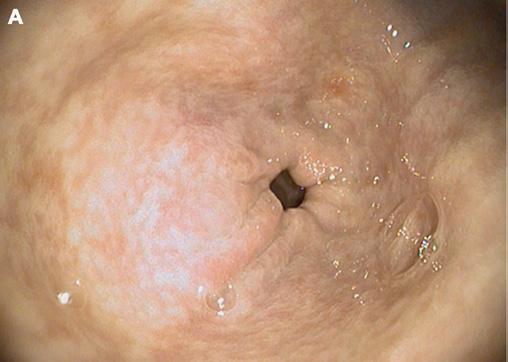
Why are racehorses so susceptible to gastric ulcers?
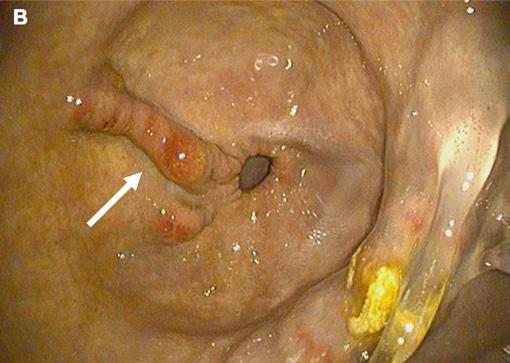
It is most likely because of their unique management when compared to most other horse populations; and the intensity of exercise that is inherent of racing competition. For example, it has been shown that the risk of squamous disease increases with an increase in the intensity of exercise and the duration of time at work. Strenuous exercise causes an increase in intra-abdominal pressure associated with contraction of the abdominal muscles 1 This results in compression of the stomach, and exposure of the sensitive squamous mucosa to acidic gastric content (acid splash). Strenuous exercise has also been shown to cause an increase in a hormone called gastrin, which stimulates acid production in the stomach.
Several factors associated with management have also been shown to increase the risk of squamous disease, many of which are imposed on racehorses at the commencement of training or during racing competition. These include a high starch/low roughage diet, intermittent fasting, stall confinement, transport, intermittent access to water and administration of hypertonic solutions of electrolytes. In fact, exposure to a combination of a high starch diet, stall confinement and strenuous exercise has been shown to induce ulcers in as little as 7 days 2; and intermittent fasting is so effective at inducing ulcers that it is used as a model for squamous disease in experimental studies 3. Thoroughbred racehorses are also exposed to many of the risk factors for glandular disease, most notably, multiple riders or caretakers; confinement; and stress associated with transport and competition.
How do you know if your horse has gastric ulcers, and how might they affect performance?
A variety of clinical signs may suggest that a horse has gastric ulcers, however there is currently very little evidence to support a direct association between any of these signs and the presence or absence of ulcers seen on gastroscopy. This is likely because most of the clinical signs are non-specific and are often very subjective. This is complicated further by the fact that horses with gastric ulcers may not demonstrate clinical signs and if they do, the signs do not necessarily correlate with the severity of the lesions seen on gastroscopy. Clinical signs suggestive of gastric ulcers should therefore always be interpreted with caution, and most importantly, gastroscopy should always be performed to confirm the disease.
41 ISSUE 83 TRAINERMAGAZINE.COM | GASTRIC ULCERS |
LEFT: Normal glandular mucosa (A), and erosive inflammatory lesions (arrow) in the glandular mucosa of a horse with equine glandular gastric disease (EGGD) (B).
FIG 3
IN RACEHORSES, GASTRIC ULCERS HAVE BEEN ASSOCIATED WITH POOR APPETITE, POOR BODY CONDITION, CHANGES IN BEHAVIOUR (INCLUDING AN AGGRESSIVE OR NERVOUS ATTITUDE), POST PRANDIAL COLIC, STEREOTYPIC BEHAVIOUR AND RESENTMENT OF GIRTHING”.
In racehorses, gastric ulcers have been associated with poor appetite, poor body condition, changes in behaviour (including an aggressive or nervous attitude), post prandial colic, stereotypic behaviour and resentment of girthing. Any one of these clinical signs can potentially have an indirect effect on performance (for example, through reduced appetite or interruption in training), but the big question is if gastric ulcers themselves, in the absence of other clinical signs, have an effect on performance. Despite the fact that it is a well entrenched ‘fact’ amongst trainers that gastric ulcers have a direct effect on poor performance or reluctance to train, there is surprisingly little evidence in the literature to back this up. This may be in part due to the difficulties in excluding the many confounding factors that might influence poor performance (e.g. lameness, respiratory disease).

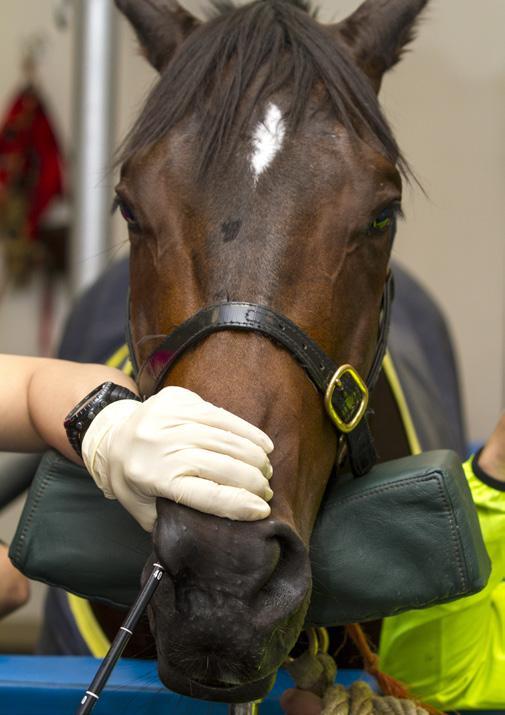
The mechanism by which gastric ulcers may affect performance has not been identified but is likely to be related to epigastric pain. In people, epigastric pain is defined as pain localised to an area below the sternum and above the umbilicus and is common in athletes with gastro-oesophageal reflux disease (GERD). Acid reflux onto the sensitive squamous mucosa of the oesophagus during exercise causes a “burning sensation” that gets worse with increasing exercise intensity and has been shown to affect performance. Horses with squamous gastric disease have similar lesions to those causing GERD in human athletes, and the problem is likely to be exacerbated by the fact that the squamous mucosa extends from the oesophagus into the upper one-third of the stomach and is not protected by an oesophageal sphincter. Interestingly, a recent study in human athletes suggested that GERD may be associated with increased abdominal pressure
during exercise 4, a mechanism that I have already alluded to in the equine athlete. How exactly epigastric pain impacts on athletic performance in the horse is a matter of ongoing speculation. One theory is that it may affect stride length. It has been shown that horses with gastric ulcers have a reduced stride length when galloping, likely due to abdominal discomfort. Stride length and lung ventilation are mechanically coupled in the galloping horse, and therefore, reduced stride length will result in decreased oxygen uptake, thus limiting aerobic capacity during peak exercise 5 .
How are gastric ulcers treated and what can you do to prevent them?
Let’s turn our attention now to the treatment of gastric ulcers. Because there is currently little evidence to suggest an association between clinical signs and the presence or severity of gastric ulcers, treatment should always be based on gastroscopic evidence of ulcers. Some trainers may still choose to commence treatment based entirely on clinic signs without gastroscopy and assess for a clinical response. I would caution against this approach, as it can be costly if the horse does not have ulcers, and gastroscopy is still going to be necessary to conclusively rule out gastric ulcers if clinical improvement is not seen with treatment.
Treatment of gastric ulcers will vary depending upon the severity and the location of the ulcers and your vet will be able to give you advice on the best approach. In most cases treatment consists of management and dietary modification in conjunction with the use of proton pump inhibitors which suppress acid production. Oral omeprazole is the drug of choice and is currently the only licenced drug for the treatment and prevention of gastric ulcers in horses in the UK and Ireland.
42 TRAINERMAGAZINE.COM ISSUE 83
| GASTRIC ULCERS | | VETERINARY |
ABOVE: A gastroscopy can be easily performed at the yard.
Oral omeprazole is currently the only licenced drug for the treatment and prevention of gastric ulcers in horses in the UK and Ireland.


370 mg/g oral paste for horses *UK and Ireland Kynetec VetTrak Data Value Sales MAT April 2023. GastroGard® 370 mg/g oral paste contains omeprazole. UK: POM-V IE: POM. Further information available in the SPC or from Boehringer Ingelheim Animal Health UK Ltd., RG12 8YS, UK. UK Tel: 01344 746960 (sales) or 01344 746957 (technical), IE Tel: 01 291 3985 (all queries). Email: vetenquiries@boehringer-ingelheim.com. GastroGard® is a registered trademark of Boehringer Ingelheim Animal Health France SCS, used under licence. ©2023 Boehringer Ingelheim Animal Health UK Ltd. All rights reserved. Date of preparation: August 2023. UI-EQU-0103-2023. Use Medicines Responsibly. Leading the way in gastric ulcer treatment* It’s got to be GastroGard®
Administering oral omeprazole on an empty stomach can improve the bioavailability of the drug. This can be achieved practically by administering it first thing in the morning at least 1 hour prior to feeding. This ensures the stomach will be empty as horses eat very little during the night even if they have access to forage.
The duration of treatment will depend on the location of the lesions, with squamous disease tending to heal faster than glandular disease. In most cases, your vet will prescribe oral omeprazole for 3-4 weeks and then the requirement for additional medication will be determined following a repeat gastroscopy. In the case of glandular disease, oral omeprazole is often combined with sucralfate, which adheres to the damaged mucosa, providing a physical barrier while also stimulating mucus secretion, both of which reduce potential exposure to acid. Omeprazole is a controlled drug, and therefore needs to be withdrawn prior to competition.
The BHA published detection time for oral omeprazole is ≤48hrs, so withdrawal of the drug 3-5 days before competition would be prudent. There is, however, some concern that the requirement for withdrawal times might influence the efficacy of oral omeprazole treatment in racehorses. Many vets report reoccurrence of squamous disease following discontinuation of treatment with omeprazole, often within as little as 3 days, and this was demonstrated in a recent study comparing withholding periods for oral omeprazole treatments in racing thoroughbreds 6
The authors reported a squamous disease prevalence of 83% in horses after a “2 clear days’’ recommended withholding period for oral omeprazole, which was an increase from 25% of horses with squamous disease before the recommended withholding period, and they theorised that ‘rebound acid secretion’ may be implicated. This phenomenon occurs following the discontinuation of proton pump inhibitor drugs such as oral omeprazole, and is linked to a loss of negative feedback from gastric acid during treatment that causes an increased secretion of the hormone gastrin that can persist for up to 2-4 days after the last dose of omeprazole has been administered 7. This results in a short period of increased gastric acid production when treatment is stopped.
Whilst nothing can currently be done about the required withdrawal periods during racing, strict management practices should be implemented for the 2-4 days following cessation of omeprazole treatment to mitigate against development of squamous gastric disease. This could include ensuring provision of adequate roughage during this time, avoiding fasting or withholding water, and perhaps limiting exercise or transport if possible.

Additional management and dietary adaptations which may help prevent gastric ulcers and can be implemented longer term in a racing yard include free choice access to roughage (and if not, ensuring that roughage is provided at intervals of no more than 4-6 hours); turn out into a paddock with good quality grazing where possible; a low starch/high fat diet (or alternatively, smaller concentrate meals more frequently); reduction/avoidance of any potential stressors; and provision of regular rest days. Where possible, training schedules should be adjusted so that they occur later in the day when enough roughage has been consumed to ensure that there is a mat of roughage in the stomach to buffer acid in the upper squamous portion and to reduce acid splash during exercise. Alternatively, a handful of palatable chaff should be fed 20 minutes prior to exercise.
Numerous supplements are marketed for prevention of gastric ulcers, however there is currently very limited evidence to support their use.
References:
1. Lorenzo-Figueras M, Merritt AM. Effects of exercise on gastric volume and pH in the proximal portion of the stomach of horses. Am J Vet Res. 2002;63(11):1481–1487.
2. Vatistas NJ, Sifferman RL, Holste J, et al. Induction and maintenance of gastric ulceration in horses in simulated race training. Equine Vet J Suppl. 1999;29:40–44.
3. Murray MJ, Eichorn ES. Effects of intermittent feed deprivation, intermittent feed deprivation with ranitidine administration, and stall confinement with ad libitum access to hay on gastric ulceration in horses. Am J Vet Res. 1996;57(11):1599–1603.
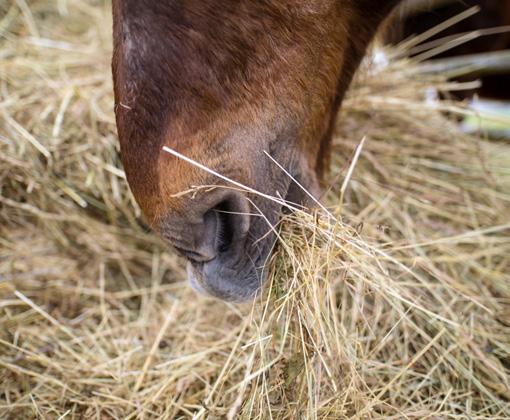
4. Herregods TV, van Hoeij FB, Oors JM, Bredenoord AJ, Smout AJ. Effect of running on gastroesophageal reflux and reflux mechanisms. Am J Gastroenterol. 2016;111(7):940–946. doi:10.1038/ajg.2016.122
5. Nieto JE, Snyder JR, Vatistas NJ, Jones JH. Effect of gastric ulceration on physiologic responses to exercise in horses. Am J Vet Res. 2009;70(6):787–795.
6. Shan R, Steel CM, Sykes B. The Impact of Two Recommended Withholding Periods for Omeprazole and the Use of a Nutraceutical Supplement on Recurrence of Equine Gastric Ulcer Syndrome in Thoroughbred Racehorses. Animals. 2023; 13(11):1823.
7. Clark B, Steel C, Vokes J, Shan JR, Gedye K, Lovett A, Sykes BW. Evaluation of the effects of medium-term (57-day) omeprazole administration and of omeprazole discontinuation on serum gastrin and serum chromogranin A concentrations in the horse. J Vet Intern Med. 2023 Jul-Aug;37(4):1537-1543.
44 TRAINERMAGAZINE.COM ISSUE 83
| GASTRIC ULCERS | | VETERINARY |
CREATES A HEALTHY ENVIRONMENT IN THE STOMACH WITH A FOCUS ON NEUTRALIZING EXCESS STOMACH ACID
Protects the stomach lining from irritation

Herbs that protect the stomach lining and help neutralize stomach acid
For horses with a sensitive stomach


race.cavalor.com

EMPOWER YOUR AMBITION
GASTRO AID
SHARED OWNERSHIP

46 TRAINERMAGAZINE.COM ISSUE 83
WORDS: DARAGH Ó CONCHÚIR PHOTOGRAPHY: GALOPPFOTO.DE, HRI, MYRACEHORSE, FRANCESCA ALTOFT PHOTOGRAPHY, TATTERSALLS, SCOOPDYGA
It has always struck me—as someone with a keen interest in most sports—that the lack of harmonisation around various rules and issues such as interference, jockey’s weights, and doping isn’t helpful as racing remains such a puzzle to most of the world.
This is evident too in the area of shared ownership, of syndicates, racing clubs and the developing area of micro share groups.
Never has it been more important for racing to attract fresh blood, with its core support aging and the sport barely causing a ripple in mainstream media. Shared ownership is a foolproof
mechanism for unearthing new acolytes because emotion and feeling will trump catchy slogans or slick promotional videos every time. If you want converts, having them in the parade ring as part of the inner circle and seeing their horse run and contend or win is your best bet.
Piers Winkworth, racing manager of Kennet Valley Thoroughbreds, summed it up well after Dragon Leader maintained his 100% record from three runs by landing the £147,540 first prize in the Goffs UK Harry Beeby Premier Yearling Stakes at York’s prestigious Ebor meeting in August.

47 ISSUE 83 TRAINERMAGAZINE.COM
| SHARED OWNERSHIP |
“This is what syndicates are all about really—having cracks at these ultra-valuable sales handicaps with modestly bought horses,” Winkworth noted. “Dragon Leader, a £45,000 Donny yearling, goes and wins the big race by some distance under Ryan Moore. It was thrilling for all of our owners. We had about 16 people up at York to see him, and there were great celebrations after the race”.
Johnny Murtagh has participated in many such celebrations, having had a hefty number of syndicates at Fox Covert Stables since he took out a licence to train at the conclusion of a stellar riding career.
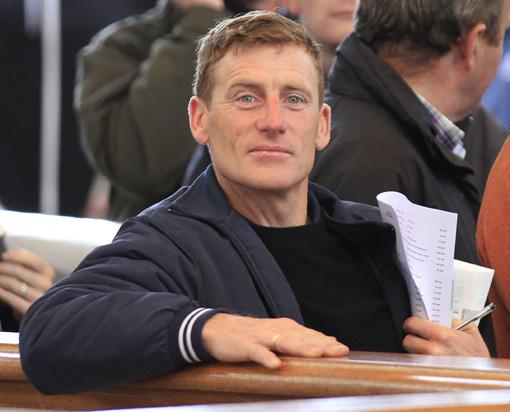
The Curragh-based conditioner secured his first Gp. 1 triumph with Fitzwilliam Racing’s Champers Elysees in 2020, and bagged his first Classic the following season when Sonnyboyliston swooped to score in the Comer Group International Irish St Leger for Kildare Racing Club.
This season, Murtagh has had runners for 11 syndicates, saddling winners for six of them. So enamoured is he with shared ownership that he has just launched a new racing club, Racing Revolution, more of which anon.
“There’s nothing better than coming back into the ring and seeing people who never thought they’d ever own a horse so happy”, reports Murtagh.
“We’ve been very lucky with Fitzwilliam. They ended up winning a Gp. 1. We now have the likes of the Brunabonne Syndicate— lads from where I grew up. They’ve been so lucky with Mashhoor. He won a couple of big races (including at Gp. 3 level), brought the lads to York and Ascot, and ran on all the big days”.
The idea of the racing club came out of Mashhoor’s Listed triumph on Tattersalls Irish 2000 Guineas day at Curragh Racecourse in May. In particular, it was the reaction of Tommy Dowd, a celebrated former Gaelic footballer who led Meath to All-Ireland glory in 1996, that resonated.
“Tommy Dowd picked up the Sam Maguire as captain of Meath and he said, ‘This is the same feeling as that’”.
Dr Paull Khan, secretary-general of the EMHF summarises the overall situation brilliantly.
“In many countries (in and outside our region), racing is struggling to maintain its popularity and relevance, as societal practices and preferences shift,” notes Khan.
“Broadening the base of racehorse ownership may well prove a key weapon in countering this trend. Quite simply, the more people that have an involvement in owning a racehorse, the more our sport becomes embedded in society.
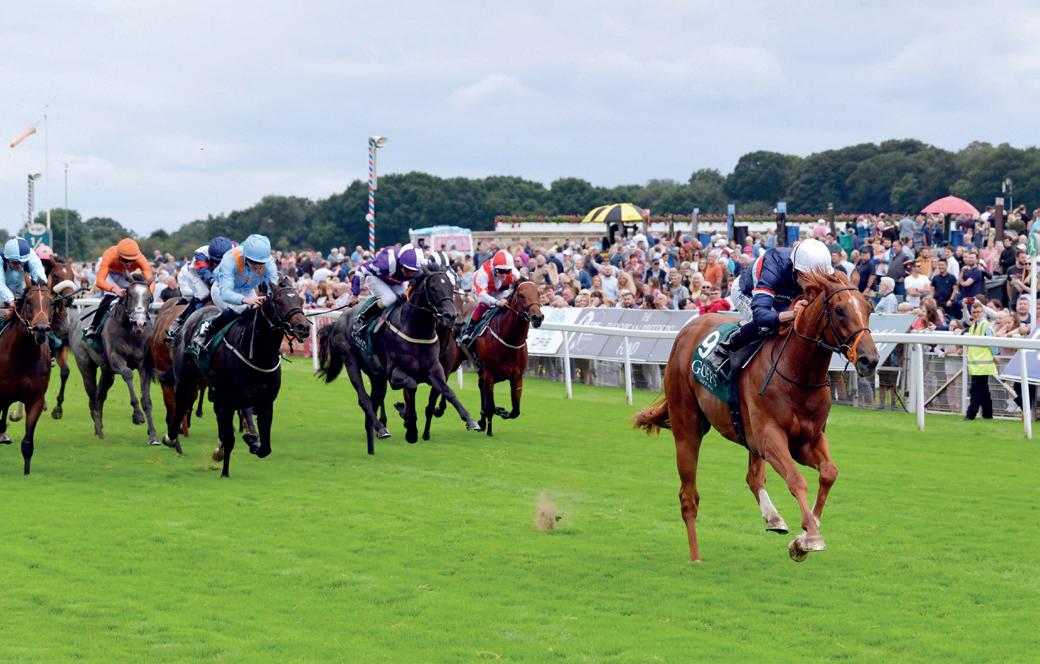
“For racing authorities, the challenge is not limited to promotion. Appropriate Rules of Racing must underpin such activity, which allow for and define co-ownership options.
“But there is also a potential downside, in that the creation of ownership entities which encompass large groups of individuals brings with it increased risks of incompetent or, yet worse, fraudulent management. Any examples of people suffering bad experiences, which are not satisfactorily dealt with, are likely to gain much publicity and have the effect of putting off future owners. So the final aspect to which racing authorities must give thought is the need for effective regulatory oversight, to minimise this risk”.
What follows is something of a potted overview of the situation in Europe, thanks to a number of different stakeholders from governing bodies to trainers and plenty more in between.
48 TRAINERMAGAZINE.COM ISSUE 83
| INDUSTRY |
Dragon Leader with Ryan Moore up wins the 2023 Premier Yearling Stakes at York’s prestigious Ebor meeting in August.
Johnny Murtagh
BRITAIN
Establishing a new syndicate isn’t laborious in Britain, and only the manager/syndicator must register as an owner. The members do not have to register, but an updated list of members must be provided to the BHA as well as the percentage share held by each one.

Racing clubs are focussed entirely on the experience of ownership but without having any equity in the horse or share in whatever proceeds it accrues while racing. Members pay an annual fee to enjoy most of the other benefits of ownership, on race day and while in training. Once again, only the person setting up or running the club must register.
Micro share groups are becoming more visible and are a very cheap way to become involved in racing as a tiny percentage of a share, normally a fraction of 1%, can be acquired for as little as £40. Like racing clubs, they are primarily experiential, though members are owners and are entitled to the equivalent cut of any money accumulated. All forms of shared ownership in Britain are subject to a code of conduct that includes specific mandatory clauses in each written contract. Transparency and protection are the key tenets of the code. The BHA has committed to auditing a proportion of syndicate/racing club/micro share contracts to ensure compliance.
George Baker’s ‘Have horse, will travel,’ mantra has always made him attractive to shared ownership groups. The Robins Farm trainer has saddled winners all over the world and is as good a host as he is a trainer.
The Surrey-based conditioner has his own racing club, the George Baker Racing Club, which provides all the perks of an involvement in racehorses, including open house visits, parade ring passes, regular communication, picnics at Royal Ascot and Glorious Goodwood, and even a share in a prize money.
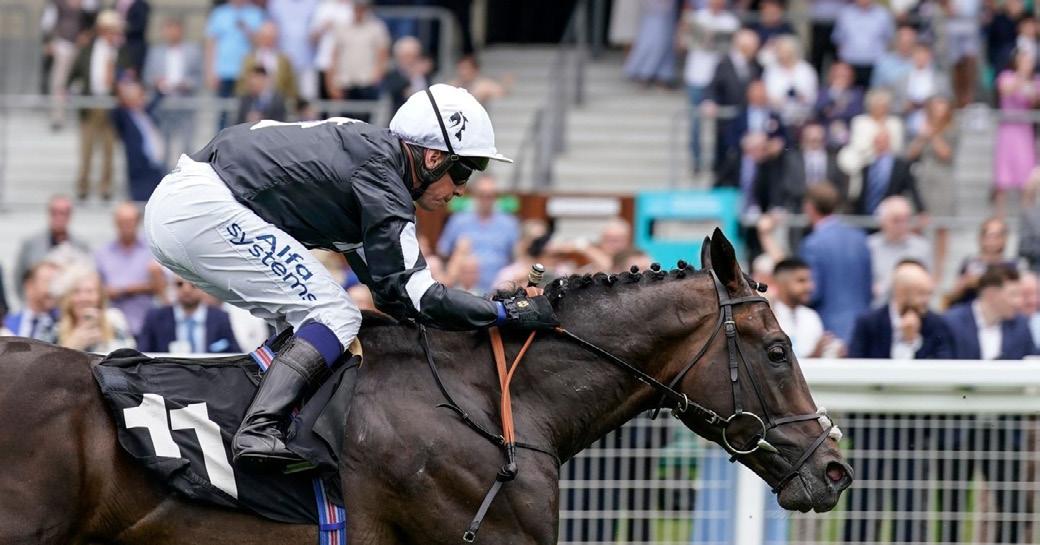

Baker joins Andrew Balding and Harry Eustace as trainers for the MyRacehorse fractional share group, making a big splash on this side of the Atlantic and having initially enjoyed stupendous success when established in America by Michael Behrens.
The relationship with MyRacehorse began with Get It and Watchya racing in Bahrain; and the ambition was rewarded by the former being awarded a victory after the winner on the day was disqualified due to a positive sample.
“The key point here is making racehorse ownership accessible to absolutely everybody in the way that it has been for a few years now and obviously in Australia, where the big syndicates have had massive success”, Baker declares.
“Like our horse (Get It) at Wolverhampton (on September 7) that won the Racing League race—a share in him was £45. The wonderful thing about a share at whatever level [is] the horse becomes your horse, regardless of whether you’ve paid a million pounds or forty pounds.

49 ISSUE 83 TRAINERMAGAZINE.COM
| SHARED OWNERSHIP |
MyRacehorse at Royal Ascot.
George Baker
MyRacehorse’s horse Syndicated.
“We all know it’s the way forward because we’ve just got to get as many people as we can into this game, and of course you hope that some of them become more heavily involved in the sport and that it evolves to a longer association; but the most important thing is showing racing as a viable means of enjoyment”.
A degree of suspicion has lingered around micro share operations, but Baker is happy to go to bat for MyRacehorse.
“I can’t speak for any of the other micro share entities, though obviously I’ve heard rumours of numbers not quite stacking up or that horses worth ‘x’ have been marketed for ‘x + y + z’; but that’s not something I can be quoted on because I haven’t had intimate involvement or knowledge.
“I know from the MyRacehorse perspective, they are wholly transparent and very keen to be treated as you would treat a security in the stock market. They want to create a secondary market so people can trade in and out of their shares.
“People demand absolute transparency and absolute integrity and from my experience, clearly that’s what MyRacehorse have based their brilliant business on in America and Australia; and they’re trying to bring the same criteria here. And that’s absolutely correct. I don’t want to be involved with any organisation or micro share entity where there’s a level of suspicion around the numbers. And that’s why MyRacehorse is creating a niche and an attractive market”.
Baker returns to Get It and Wolverhampton to ram home his point about the impact feeling a winner can have regardless of financial outlay.
“There was one of the guys in the winner’s enclosure who’d won a share that night in a race card competition that MyRacehorse had organised with the Racing League. And there he is in the winner’s enclosure being photographed with (jockey) Paul Mulrennan and the horse. The guy was almost in a state of shock, but he was absolutely loving it”.
IRELAND
Ireland is among the most proactive European jurisdictions for the promotion and growth of multiple ownership. Figures from 2022 indicate that the number of syndicates increased by 24% to 825, comprising 8,030 people.

The number of racing clubs increased by 6 per cent, comprising 1,683 members.
People can join existing syndicates or racing clubs or establish their own. Syndicates in Ireland comprise 3–100 people, while racing clubs can have an unlimited number of members.

The above figure for syndicates also includes the evolving fractional ownership model, with MyRacehorse having horses in training with Joseph O’Brien and Michael O’Callaghan.
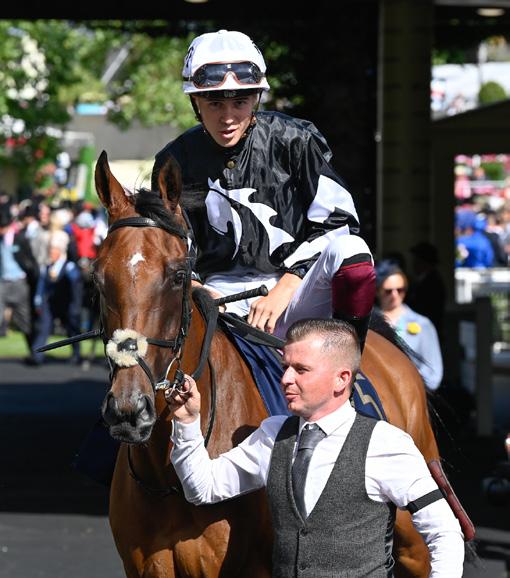
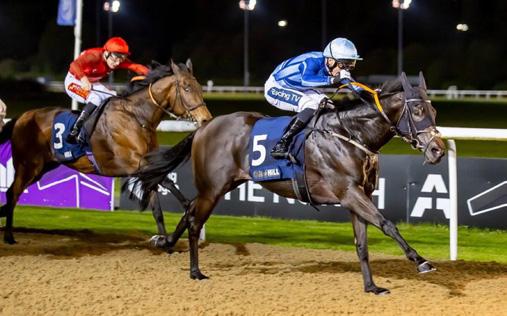
“It is a great way to dip your toe in the water and see if it is the pastime for you,” says HRI’s owner development manager, Amber Byrne of shared ownership, who adds that plenty with the means to indulge in sole ownership prefer syndicates as a means of spreading their risk or because they derive more enjoyment from them.
HRI maintains a register of racehorse owners and can void or suspend owner registrations. The onus falls on the agent to ensure the syndicate/club and its members complies with the rules of racing, HRI directives, owner eligibility policy etc. Unlike the BHA, they do not have a specific code of conduct in place but advise that all syndicates and clubs provide them.
Agents must be registered as full owners and provide necessary ID, bank details etc., while a full list of membership including addresses and contact details and shares held must be supplied and continuously updated. Syndicates/clubs must declare if they are selling shares publicly and declare the maximum number of shares available in a particular horse.
50 TRAINERMAGAZINE.COM ISSUE 83
MyRacehorse’s Get It
| INDUSTRY |
MyRacehorse’s Ma Belle Artiste
Jack Cantillon, founder of the popular Syndicates.Racing, says HRI has it just right in terms of regulation and oversight.
“We recently registered in France, and it took over a month for our application to be successfully processed; so we should be thankful for how quick it has been for us to do so in Ireland”, Cantillon relates. “We also are registered in New York, and they even wanted my fingerprints before we got over the line! Ireland strikes a balance of enough protections while not over burdening with ridiculous red tape.
“Syndicates are the backbone of building the pipeline of ownership of racehorses throughout the world”, he continues. “We’ve had incidents of people taking a €200 share as their first share in a racehorse and progressing to owning horses worth €100,000 on their own. It’s an amazing journey to see in full sight and something that’s incredibly rewarding”.

Syndicates.Racing has enjoyed spectacular success in a short period in both codes, with runners and winners at a host of major meetings and venues, including graded-winning mares Cabaret Queen and Grangee. Their trainers include Willie Mullins, Joseph O’Brien, Henry de Bromhead, Jessica Harrington, Gavin Cromwell, Peter Fahey, John McConnell, Jack Davison and the aforementioned Johnny Murtagh. They also have horses in training in Britain and America.
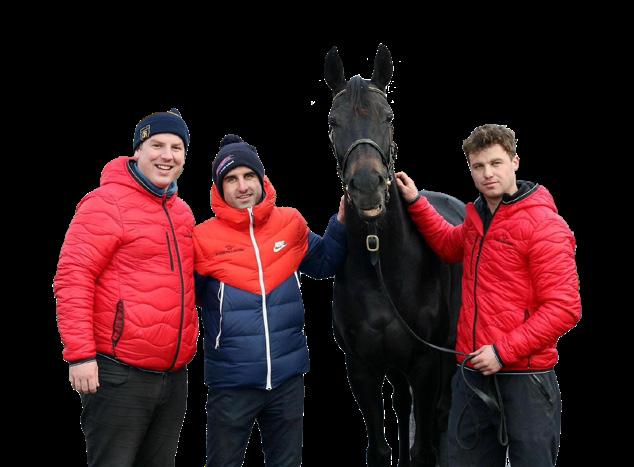
“We have been blessed with over a thousand owners that have gotten involved in Syndicates.Racing since its inception and bringing so many of them to the winner’s enclosure has been a hugely rewarding thing… If you do have a positive experience, there’s very few more rewarding experiences of intimate involvement that you can get in any sport”.


As mentioned earlier, Murtagh is such a believer in the benefits of shared ownership that he has just launched his own racing club.
“You’d love people to have a good experience of racing. They’re going to be racing, but they’re going to see behind the scenes as well—even things like a horse being shod or going through the stalls; the ins and outs of JP Murtagh on a weekly basis with a horse ready to run. You’ll have a morning on the gallops, a few get-togethers. I think there’s going to be a great take-up and plenty of entertainment.
“There’s a bit more work, but I only speak to the racing manager and they keep everyone else informed. You’re going to have to employ somebody to take videos and keep it updated every day. I want people to see what’s going on and to feel part of it.
“You like to promote the game as best you can and show it in a good light and maybe in a way that people with some bit of interest want to see more and you never know what it leads to.
51 ISSUE 83 TRAINERMAGAZINE.COM
| SHARED OWNERSHIP |
J&J Partnership
Grangee with Jack, John and Tom from Syndicates.Racing.
Joseph O’Brien
One fella might say, ‘I enjoyed that; can you buy me a horse?’ Rather than jumping into it straight away, they get a good feel. “I think it’ll work. We’ve a good horse, and we’ve a plan for the horse. We have everything in place, ready to go. I think people will like to be part of it.
While there is “a bit involved” in setting Racing Revolution up, “Murtagh found HRI very helpful. Ireland’s governing body is full square behind shared ownership as a means of growing the sport and industry.



“The promotion of shared ownership is central to our domestic marketing strategy”, Byrne emphasises. “Syndicates and clubs are key in introducing the ownership concept. We see it as an affordable entry stage into ownership and a way for those interested in racing to get closer to the action and behind-the-scenes access.
“For the most part our domestic marketing promotion concentrates on highlighting multiple ownership. There is no other sport that allows the kind of access that ownership offers and allows fans to get fully immersed in a sport that they love”.
Cantillon sees one area of potential improvement.
“I think we as an industry should invest in a comprehensive customer relationship management system for our owners. We should take advantage of affordable technology available to improve owner experience tenfold. Send a special deal to owners on their birthday, invite them back to the anniversary of their winner last year, issue tickets digitally so there’s no mix-ups at the gate. It’s simple stuff but makes a huge difference”.
FRANCE
Syndicates are known as ecurie de groupe in France, which translates directly to racing stables but are generally known as racing clubs. They are not to be confused with the experiential model of racing clubs in Britain and Ireland and which do not exist in France.


Neither are there any micro share companies, though there have been some initial discussions with MyRacehorse.
“It is certainly an interesting model, one which is full of potential in France,” outgoing managing director of France Galop, Olivier Delloye tells us.
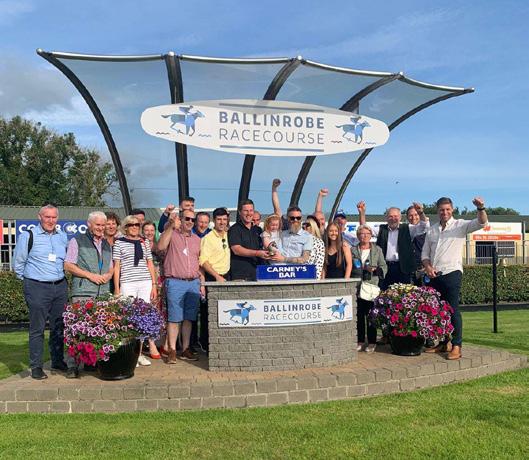
There are 44 syndicates in operation in France, and that figure—while low and down on the 72 recorded in 2014— will increase “in the coming months” according to France Galop’s marketing and ownership development manager, Raphaël Naquet. Ecurie Team Spirit, Shamrock Racing, Ecurie Brillantissime, Ecurie Vivaldi, and High Heels Racing Stable are among the flourishing factions; and there are links to several syndicates on the France Galop website.
As Jack Cantillon touched on, the process of registering a syndicate is more arduous in France than elsewhere. Irish native Timmy Love, who is a colleague of Naquet’s in the ownership development wing of France Galop, concedes that point but insists that this is due to the law of the land rather than the racing regulator.
52 TRAINERMAGAZINE.COM ISSUE 83
Wear a Pink Ribbon Syndicate
ABD Syndicate
Money For Jam Syndicate
| INDUSTRY |
Syndicates.Racing
“Setting up a racing club is probably slightly more bureaucratically heavy than what it would be in Ireland or in England, but that’s just the nature of the French system”, Love asserts. “It’s not a reflection on France Galop. It’s just in France (by law); there is quite a rigorous administration system. It’s quite demanding, but it’s to protect the people already within the sport or those trying to come into it.
“It’s by no means rocket science to get set up over here. Once you get all your different documentation together, it’s no more difficult than anywhere else. You just need slightly more documents in the first place”.
The syndicates must be registered as a company, and that means articles of association, declarations of the company, certificates of incorporation are required to establish the company’s eligibility. Once that is done, the usual proof of identification for the agent running the syndicate is required.
Every member of an ecurie de groupe has an owner’s card that entitles them to the exact same benefits as a sole owner. These include being allowed to bring four guests to every meeting at all the France Galop racecourses, with no exclusions. Being able to do that on Prix de l’Arc de Triomphe day is a phenomenally attractive perk as a syndicate member.
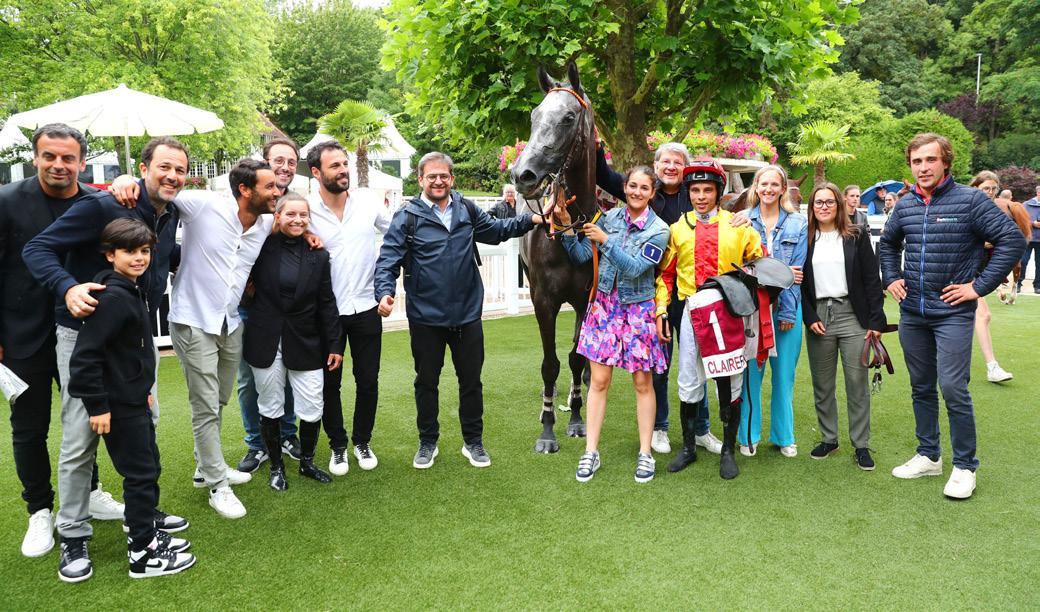
The provincial tracks are not bound by general rule as regards to how many people are allowed to attend per owner card or runner, but according to Love, they are generally very hospitable.
“For example, I know Middleham Park (Racing) had a winner in Cagnes-Sur-Mer over the winter (Brave Emperor), and the racecourse was very good to the members of that syndicate that travelled over. That is just to give one example, but there are lots of country tracks that look after their owners extremely well”.
France Galop is considering being more proactive in going out into the marketplace to sell the benefits of syndicates as an ownership option.
“We can see more and more shared ownership is more attractive. It makes the sport more accessible, so it’s certainly something
we’re considering; and now we have a good base of racing clubs that are well set up and having a bit of success. It’s becoming an easier product to market”.
French trainers are not as enamoured with shared ownership as their British and Irish counterparts, however, as illustrated by Hélène Hatchiguian of the Association des Entraîneurs de Galop, the French trainers’ association.
“We have more and more owner agreements, but mainly for shared ownership, because having a racehorse is a cost. The consequence is that we have less horses in training,” Hatchiguian observes.
“For a trainer, it is easier and better to have one owner per horse, but now we have less of these owners and more shared ownership. It represents more work for the trainer, and more time (to communicate, for invoicing etc.). If trainers do not have time for it, they need to employ someone to do this job.
“When some shared owners do not pay their training fees, we can appeal to France Galop, the horse cannot run, and it is penalising other owners. In the future, it will be necessary to change the rules: if one or more shared owner does not pay, the horse can still run but the money won by the horse is not paid to the owner but to the trainer’s account”.
GERMANY

Christian von der Recke is cut from the same cloth as George Baker. Land and sea borders are no impediment to the multiplechampion jumps trainer travelling and running horses.
He says running a proper syndicate is difficult in Germany and points us in the direction of Lars-Wilhelm Baumgarten. A former sports agent (with Grand Slam winner Angelique Kerber among his clients), now breeder and board member of Deutscher Galopp, Baumgartner founded Liberty Racing with his wife Nadine and realised a lifetime ambition when Fantastic Moon won the Deutsches Derby in Liberty silks.
53 ISSUE 83 TRAINERMAGAZINE.COM
| SHARED OWNERSHIP |
Ecurie Vivaldi syndicate celebrate Romarius’ Prix des Capucines win at Clairefontaine, July 2023.
Members are glorying in the anticipation of running in the Prix de l’Arc de Triomphe before a tilt a tilt at the Breeders’ Cup and/ or the Japan Cup—wherever there is good ground—after the Sarah Steinberg-trained son of Sea The Moon recorded a decisive victory in the Qatar Prix Niel. Some hefty offers came in for the Germanbred colt after the romp at ParisLongchamp but they have been rejected by shareholders and he will continue to race for Liberty.
“I worked as a sports agent all over the world and was a lot of times in Australia and saw the syndicates there,” Baumgartner explains. “I decided to sell my company and do what I want— horses, poker, real estate, and coaching. I started breeding and was on the board of German Racing, and I saw the problem: less owners, less breeders.
“I started eight years ago with my partnership ownership, only with two or three friends. We had a lot of success together. Then I decided to make my three- or four-people ownership syndicate bigger and started in 2020, to bring all my owner and breeder knowhow to bring more people to horses. That was in my mind, but also in my mind was to win bigger, not just to buy handicap horses for people. We wanted to buy stayers with stamina from good German families for the Classic races, the Derby, the Oaks, and the Leger.
“The idea was that new people can dream and be part of the bigger races. That was the main vision for Liberty Racing. Nadine and I started with 12 shareholders and four horses. The next year, we had 22 shareholders in four horses and then 30 in five horses. This year we will buy 10 to 12 horses with 90 or 100 owners.
“It’s not easy with the German tax situation. We have a lot of law restrictions to bring money together. It’s not like in England and America. They have more share culture, but we did it. We created a good contract, and we have the okay from the government to do it, and so we started”.
Deutscher Galopp is very helpful, Baumgartner tells us, not least than when he brought 50 people to shout on Liberty Racing’s two Derby runners.
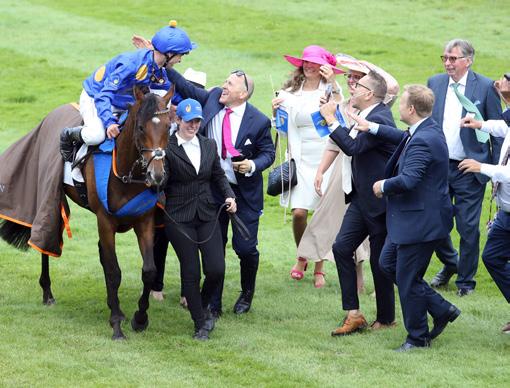
There are more racing clubs in Germany than syndicates, but Liberty Racing is a poster child for the latter model w ith its professionalism and specific departments to cater for acquisitions, financials, social media, and so on.

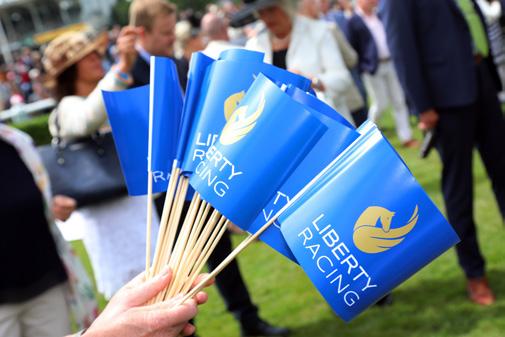
“German racing was a closed shop. We have to open it. At the moment, we have 1,800 horses in training. That’s not good. We have to find 1,000 new shareholders in horses, and then we find 100, 200 horses more for trainers to train”.
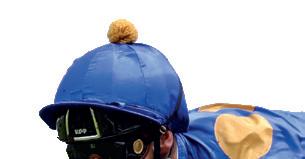
54 TRAINERMAGAZINE.COM ISSUE 83
Liberty Racing’s Fantastic Moon wins the 2023 Deutsches Derby.
| INDUSTRY |
Fantastic Moon
ITALY

Former top trainer and now flourishing bloodstock agent, Valfredo Valiani, is looking forward to attending all the major European sales in the coming weeks and months, but he won’t be buying for Italian syndicates.
“Italian people usually don’t like syndicates, and it’s something that never took off in Italy,” Valiani remarks. “When I used to train, I tried myself with a couple of friends to set up a few syndicates for a few horses. We had results with the horses. We went up to six partners. But Italians are pretty individual. We’re not used to doing syndicates in anything and especially in racehorses.
“It’s not that easy to register a syndicate over here. You’re going to need all the papers for every single partner in the syndicate. So it’s really tough. And then, just the representative is allowed to get to the parade ring.
“We need syndicates because Italian racing is not flying, especially in quality; and when you get a few people together, of course you have more money to spend and more power, and you can look for better horses.

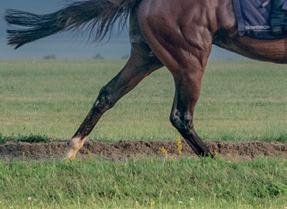
“We do have one syndicate, which is named Equos. It’s very public because it belongs to somebody that runs the only racing paper in Italy. But nobody emulated that, so far at least. Italians are proud to be THE owner, and they don’t feel like being ONE of the owners. There are horses in partnership, but it’s not the norm”.
SCANDINAVIA
Norway does have company-regulated syndicates, but there are some operating on a private level.


“The main reason is that Norwegian rules and regulations do not allow ownership of racehorses to be defined as a business,” says Marianne Ek of the Norwegian Jockey Club. “It has to be taxed as private. This means that there are no incentives for companies to offer this service.

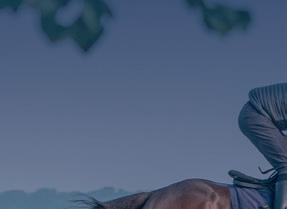
“The industry is constantly working towards our politicians to try to change this, but no luck so far. This does not mean that we don’t have syndicates and shared ownerships, but they are set up either by the owners themselves or the trainers”.
In Sweden and Denmark, syndicates are allowed to trade as businesses. Also, there are some companies that specialise in putting syndicates together and running them for a fee.




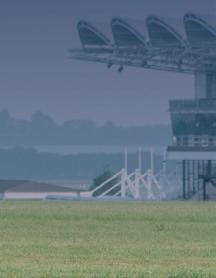





Conclusion
As noted at the start, this is by no means a thorough investigation of shared ownership from the perspective of all stakeholders in all regions—lengthy and all as it is.
It is evident though that while some jurisdictions are more open to shared ownership than others, for a variety of reasons, there is a growing acknowledgement that for trainers, and thus the industry, the model has far more upside than any perceived negative once all stakeholders are protected by watertight regulation and rigorous oversight.
Make it as easy as possible, and make it attractive. After that, the smiles will go miles
55 ISSUE 83 TRAINERMAGAZINE.COM
“The process is smooth, efficient and professional, making our life incredibly easy.”
Olly Murphy - sold a share in G1 winner Itchy Feet
“We’ve been very impressed with Racehorse Trader. It provides you with the opportunities to get new owners involved in an uncomplicated and cost-effective manner.”
List your horses for sale, syndicate or racing club A percentage share of a horse can also be advertised We will then promote your listing to potential buyers globally
racehorse trader . com
Terry HendersonOTI Racing
for selling horses
| SHARED OWNERSHIP |
AIR QUALITY & AIR POLLUTION’S IMPACT ON YOUR HORSE’S LUNGS
There’s nothing like hearing a horse cough to set people scurrying around the barn to identify the culprit. After all, that cough could mean choke, or a respiratory virus has found its way into the barn. It could also indicate equine asthma. Yes, even those ‘everyday coughs’ that we sometimes dismiss as ‘summer cough’ or ‘hay cough’ are a wake-up call to the potential for severe equine asthma.
Formerly known as heaves, broken wind, emphysema, chronic obstructive pulmonary disease (COPD), or recurrent airway obstruction (RAO), this respiratory condition is now called severe equine asthma (sEA). These names reflect how our scientific and medical understanding of this debilitating disease has changed over the years. We now consider heaves to be most comparable to severe asthma in people.
But what if your horse only coughs during or after exercise? This type of cough can mean that they have upper airway irritation (think throat and windpipe) or lower airway inflammation (think lungs) meaning inflammatory airway disease (IAD), which is now known as mild-tomoderate equine asthma (mEA). This airway disease is similar to childhood asthma, meaning that it can go away on its own. However, it is still very important to call your veterinarian out to diagnose mEA. This disease causes reduced athletic performance, and there are different subtypes of mEA that benefit from specific medical therapies. In some cases, mEA progresses to sEA.
Equine asthma and air quality
What does equine asthma have to do with air quality? A lot, it turns out. Poor air quality, or air pollution, includes the barn dusts—the allergens and moulds in hay and the ground-up bacteria in manure, as well as arena dusts and ammonia from urine. Also, very importantly for both people and horses, air pollution can be from gas and diesel-powered equipment. This includes equipment being driven through the barn, the truck left idling by a stall window, or the smog from even a small city that drifts nearly invisibly over the surrounding farmland. Recently, forest-fire smoke has been another serious contributor to air pollution.
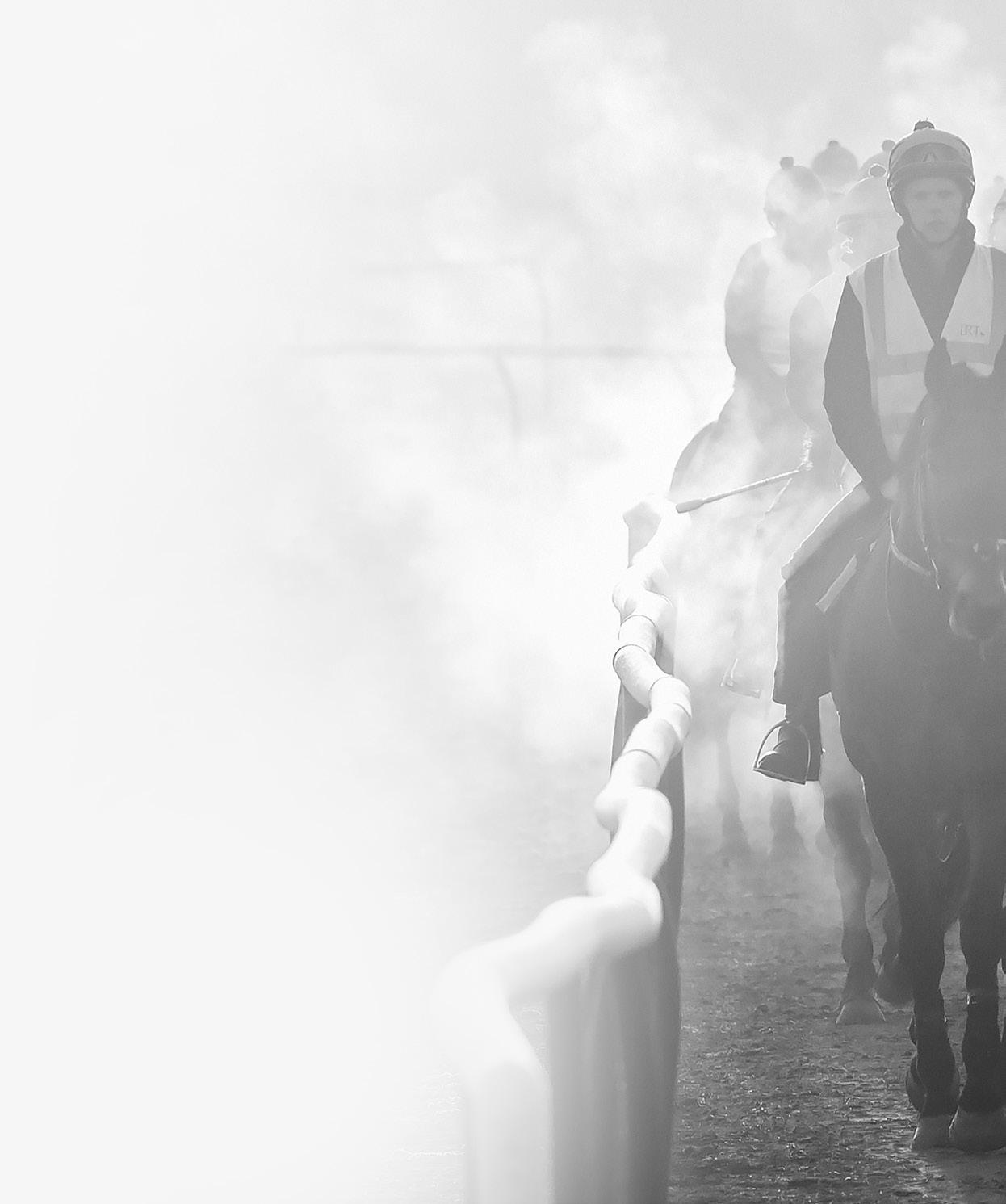
56 TRAINERMAGAZINE.COM ISSUE 83
| VETERINARY |


57 ISSUE 83 TRAINERMAGAZINE.COM | AIR QUALITY | WORDS:
DR JANET
BEELER-MARFISI PHOTOGRAPHY: GERRY WEATHERHEAD, GALOPPFOTO.DE, FLEXINEB
VISIT THEHORSEPORTAL.CA EQUINE NEWS & RESOURCES
Smog causes the lung inflammation associated with mEA. Therefore, it is also likely that air pollution from engines and forest fires will also trigger asthma attacks in horses with sEA. Smog and smoke contain many harmful particulates and gases, but very importantly they also contain fine particulate matter known as PM2.5. The 2.5 refers to the diameter of the particle being 2.5 microns. That’s roughly 30 times smaller than the diameter of a human hair. Because it is so small, this fine particulate is inhaled deeply into the lungs where it crosses over into the bloodstream. So, not only does PM2.5 cause lung disease, but it also causes inflammation elsewhere in the body including the heart. Worldwide, even short-term exposure is associated with an increased risk of premature death from heart disease, stroke, and lung cancer. This PM2.5 stuff is not trivial!
In horses, we know that PM2.5 causes mEA, so it’s logical that smog and forest-fire smoke exposure could exacerbate asthma in horses, but we don’t know about heart disease or risk of premature death.

Symptoms, diagnostic tests and treatments
Equine asthma manifests with a spectrum of symptoms that vary in severity and the degree of debilitation they cause. Just like in people with asthma, the airways of horses with mEA and sEA are ‘hyperreactive.’ This means that the asthmatic horse’s airways are extra sensitive to barn dusts that another horse’s lungs would just ‘ignore.’ The asthmatic horse’s airways constrict, or become narrower, in response to these dusts. This narrowing makes it harder to get air in and out of the lungs. Think about drinking through a straw. You can drink faster with a wider straw than a skinnier one. It’s the same with air and the airways. In horses with mEA, the narrowing is mild. In horses with sEA, the constriction is extreme and is the reason why they develop the ‘heaves line’; they have to use their abdominal muscles to help squeeze their lungs to force the air back out of their narrow airways. They also develop flaring of their nostrils at rest to make their upper airway wider to get more air in. Horses with mEA do not develop a heaves line, but the airway narrowing and inflammation do cause reduced athletic ability.
The major signs of mEA are coughing during or just after exercise that has been going on for at least a month and decreased athletic performance. In some cases, there may also be white or
watery nasal discharge particularly after exercise. Often, the signs of mEA are subtle and require a very astute owner, trainer, groom, or rider to recognise them.
Another very obvious feature of horses with sEA is their persistent hacking cough, which worsens in dusty conditions. “Hello dusty hay, arena, and track!” The cough develops because of airway hyperreactivity and because of inflammation and excess mucus in the airways. Mucus is the normal response of the lung to the presence of inhaled tiny particles or other irritants. Mucus traps these noxious substances so they can be coughed out, which protects the lung. But if an asthma-prone horse is constantly exposed to a dusty environment, it leads to chronic inflammation and mucus accumulation, and the development or worsening of asthma along with that characteristic cough.
Accurately diagnosing equine asthma

Veterinarians use a combination of the information you tell them, their observation of the horse and the barn, and a careful physical and respiratory examination that often involves ‘rebreathing.’ This is a technique where a bag is briefly placed over the horse’s nose, causing them to breathe more frequently and more deeply to make their lungs sound louder. This helps your veterinarian hear subtle changes in air movement through the lungs and amplifies the wheezes and crackles that characterise a horse experiencing a severe asthma attack. Wheezes indicate air ‘whistling’ through constricted airways, and crackles mean airway fluid buildup. The fluid accumulation is caused by airway inflammation and contributes to the challenge of getting air into the lung.
Other tests your veterinarian might use are endoscopy, bronchoalveolar lavage, and in the specialist setting, pulmonary function testing. They will also perform a complete blood count and biochemical profile assay to help rule out the presence of an infectious disease.
Endoscopy allows your veterinarian to see the mucus in the trachea and large airways of the lung. It also lets them see whether there are physical changes to the shape of the airways, which can be seen in horses with sEA.
Bronchoalveolar lavage, or ‘lung wash’ is how your veterinarian assesses whether there is an accumulation of mucus and inflammatory cells in the smallest airways that are too deep in the lung to be seen using the endoscope. Examining lung wash fluid is a very important way to differentiate between the different types of mEA, between sEA in remission and an active asthma attack, and conditions like pneumonia or a viral lung infection.
58 TRAINERMAGAZINE.COM ISSUE 83
| AIR QUALITY | | VETERINARY |
A persistent hacking cough is a very obvious feature of horses with sEA.
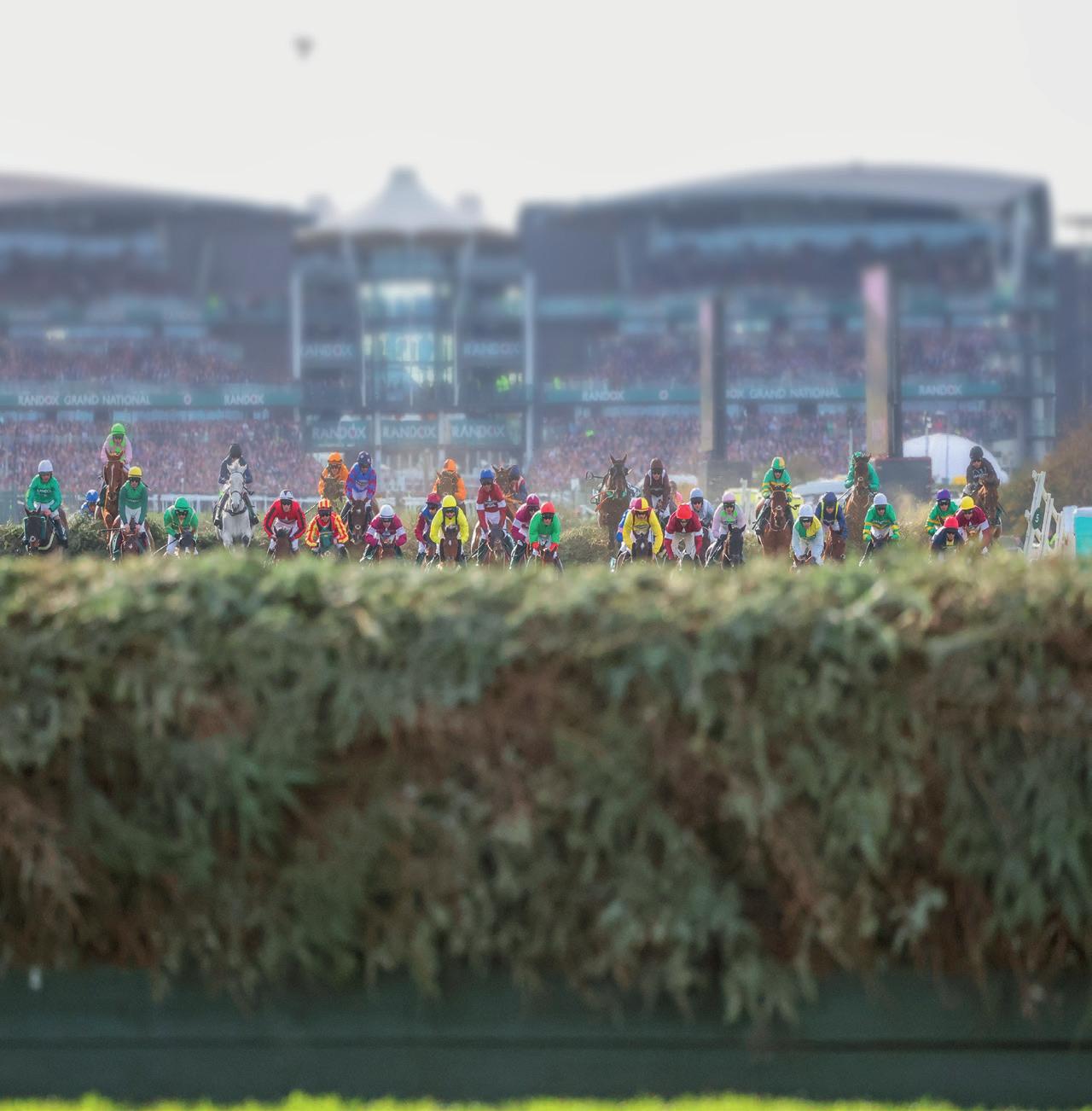


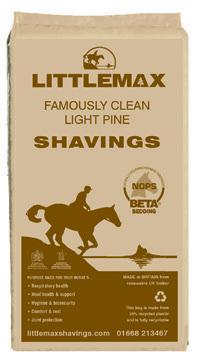


MAKING BEDDING BETTER By Appointment to Her Majesty The Queen Manufacturer of Horse Bedding Bedmax Limited, Northumberland By Appointment to HRH The Prince of Wales Manufacturer of Horse Bedding Bedmax Limited, Northumberland Helping your horses rise to every challenge… …and now with anti NOPS assurance We supply our purpose made shavings to trainers and breeders all over the world To find out more please call our International Sales Manager Brent Adamson on +44 (0) 7774 178925 bedmaxshavings.com 01668 213467
Finally, if your veterinarian is from a specialty practice or a veterinary teaching hospital, they might also perform pulmonary function testing. This allows your veterinarian to determine if your horse’s lungs have hyperreactive airways (the hallmark of asthma), lung stiffening, and a reduced ability to breathe properly.
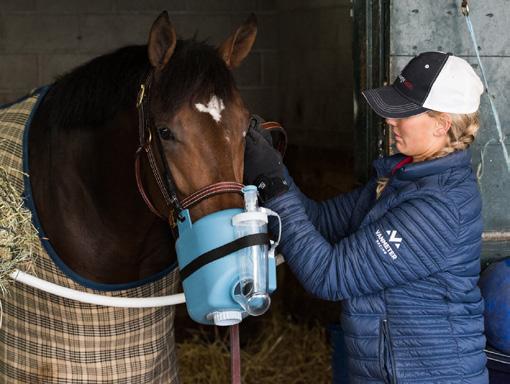
Results from these tests are crucial to understanding the severity and prognosis of the condition. As noted earlier, mEA can go away on its own; but medical intervention may speed healing and the return to athletic performance. With sEA, remission from an asthmatic flare is the best we can achieve. As the disease gets worse over time, eventually the affected horse may need to be euthanised.
Management, treatment, and prevention
Successful treatment of mEA and sEA flares, as well as longterm management, requires a multi-pronged approach and strict adherence to your veterinarian’s recommendations.
Rest is important because forcing your horse to exercise when they are in an asthma attack further damages the lung and impedes healing. To help avoid lung damage when smog or forest-fire smoke is high, a very useful tool is your local, online, air quality index (just search the name of your closest city or town and ‘AQI’). Available worldwide, the AQI gives advice on how much activity is appropriate for people with lung and heart conditions, which are easily applied to your horse. For example, if your horse has sEA and if the AQI guidelines say that asthmatic people should limit their activity, then do the same for your horse.
If the AQI says that the air quality is bad enough that even healthy people should avoid physical activity, then do the same for you AND your horse. During times of poor air quality, it is recommended to monitor the AQI forecast and plan to bring horses into the barn when the AQI is high and to turn them out once the AQI has improved.
Prevent dusty air. Think of running your finger along your tack box—whatever comes away on your finger is what your horse is breathing in. Reducing dust is critical to preventing the development of mEA and sEA, and for managing the horse in an asthmatic flare.
Logical daily practices to help reduce dust exposure:
• Turn out all horses before stall cleaning
• Wet down the aisle prior to sweeping
• Never sweep debris into your horse’s stall
• Use low-dust bedding like wood shavings or dust-extracted straw products, which should also be dampened down with water
• Reduce arena, paddock, and track dust with watering and maintenance
• Consider low-dust materials when selecting a footing substrate
• Steam (per the machine’s instructions) or soaking hay (15–30 mins and then draining, but never store steamed or soaked hay!)
• Feed hay from the ground
• Feed other low-dust feeds
• Avoid hay feeding systems that allow the horse to put their nose into the middle of dry hay—this creates a ‘nosebag’ of dust
Other critical factors include ensuring that the temperature, humidity and ventilation of your barn are seasonally optimised. Horses prefer a temperature between 10–24 °C (50–75 °F), ideal barn humidity is between 60–70%. Optimal air exchange in summer is 142 L/s (300 cubic feet/minute). For those regions that experience winter, air exchange of 12–19 L/s (25–40 cubic feet/ minute) is ideal. In winter, needing to strip down to a single layer to do chores implies that your barn is not adequately ventilated for your horse’s optimal health. Comfortable for people is often too hot and too musty for your horse!
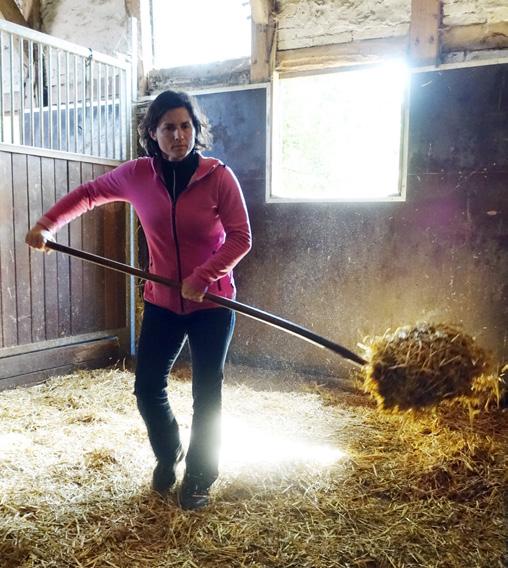
60 TRAINERMAGAZINE.COM ISSUE 83
TO HELP AVOID LUNG DAMAGE WHEN SMOG OR FOREST-FIRE SMOKE IS HIGH, A VERY USEFUL TOOL IS YOUR LOCAL, ONLINE, AIR QUALITY INDEX (JUST SEARCH THE NAME OF YOUR CLOSEST CITY OR TOWN AND ‘AQI’)”.
Nebulising with sterile saline to help loosen airway mucus.
Medical interventions for controlling asthma are numerous. If your veterinarian chooses to perform a lung wash, they will tailor the drug therapy of your asthmatic horse to the results of the wash fluid examination. Most veterinarians will prescribe bronchodilators to alleviate airway constriction. They will also recommend aerosolised, nebulised or systemic drugs (usually a corticosteroid, an immunomodulatory drug like interferon- α, or a mast cell stabiliser like cromolyn sodium) to manage the underlying inflammation. They may also suggest nebulising with sterile saline to help loosen airway mucus and may suggest feed additives like omega-3 fatty acids, which may have beneficial effects on airway inflammation.
New research and future directions
Ongoing research is paramount to expanding our knowledge of what causes equine asthma and exploring innovative medical solutions. Scientists are actively investigating the effects of smog and barn dusts on the lungs of horses. They are also working to identify new targeted therapies, immunotherapies and other treatment modalities to improve outcomes for affected horses.

Conclusion
Both mild and severe equine asthma are caused and triggered by the same air pollutants, highlighting the need for careful barn management. The alarming rise in air pollution levels poses an additional threat to equine respiratory health. Recognising everyday coughs as potential warning signs and implementing
proper diagnostic tests, day-to-day management practices and medical therapies are crucial in combating equine asthma. By prioritising the protection of our horse’s respiratory health and staying informed about the latest research, we can ensure the well-being of our equine companions for years to come.

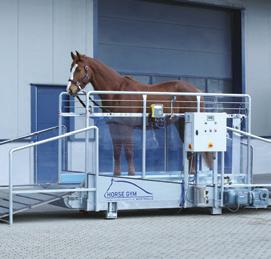
KEY PRACTICES
• Work to prevent dust and optimise barn air exchange.
• Avoid idling farm equipment and trucks around horses.
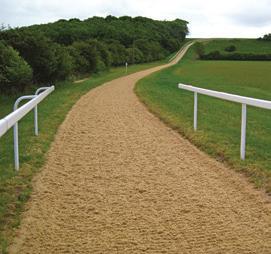

• Don’t ignore a cough—call your veterinarian.
• Monitor your local air quality index—it’s a free and simple way to help prevent lung damage!
61 ISSUE 83 TRAINERMAGAZINE.COM The benefits of the sea in your yard Complete range for training and rehabilitation Tel: +44 (0)1458 251300 www.EquineHealthCentre.com PROVIDED BY The original vibrating floor systems for horses Full range of treadmills and aqua trainers Manufacturing top quality surfaces in Somerset TB11326 EHC Trainer Magazine Advert 176 x128mm Landscape V2.indd 1 19/03/2020 14:00:24
| AIR QUALITY |
DANGERS OF INBREEDING
AND THE NECESSITY TO PRESERVE SIRE LINES IN THE THOROUGHBRED BREED

62 TRAINERMAGAZINE.COM ISSUE 83
| OPINION |
Amechanism to examine genomic inbreeding for breeding purposes has yet to be developed to be used by all breeders but once available, it must be considered as a tool for breeders. Breeding of potential champion racehorses is a global multibillion sterling or dollar business, but there is no systematic industry-mediated genetic population management.1
Inbreeding in the modern thoroughbred
The thoroughbred horse has low genetic diversity relative to most other horse breeds, with a small effective population size and a trend of increasing inbreeding.2
A trend in increased inbreeding in the global thoroughbred population has been reported during the last five decades, which is unlikely to be halted due to current breeding practices.1


Ninety-seven percent of pedigrees of the horses included in a recent study feature the ancestral sire, Northern Dancer (1961); and 35% and 55% of pedigrees in EUR and ANZ contain Sadler’s Wells (1981) and Danehill (1986), respectively.1
Inbreeding can expose harmful recessive mutations that are otherwise masked by ‘normal’ versions of the gene. This results in mutational load in populations that may negatively impact on population viability. 3
Genomics measured inbreeding is negatively associated with racing in Europe and Australia. The science indicates that increasing inbreeding in the population could further reduce viability to race.
In North America, it has been demonstrated that higher inbreeding is associated with lower number of races.2 In the North American thoroughbred, horses with higher levels of inbreeding are less durable than animals with lower levels of inbreeding. Considering the rising trend of inbreeding in the population, these results indicate that there may also be a parallel trajectory towards breeding less robust animals.
Note that breeding practices that promote inbreeding have not resulted in a population of faster horses. The results of studies, generated for the first time using a large cohort of globally representative genotypes, corroborate this.1,3
Health and disease genes
It is both interesting and worrisome to consider also that many of the performance-limiting genetic diseases in the thoroughbred do not generally negatively impact on suitability for breeding; some diseases, with known heritable components, are successfully managed by surgery (osteochondrosis dessicans, recurrent laryngeal neuropathy, for example), nutritional and exercise management (recurrent exertional rhabdomyolysis), and medication (exercise induced pulmonary haemorrhage). This unfortunately facilitates retention of risk alleles in the population and enhances the potential for rapid proliferation of risk alleles if they are carried by successful stallions.1
63 ISSUE 83 TRAINERMAGAZINE.COM WORDS:
DR BERNARD STOFFEL, DVM PHOTOGRAPHY: GALOPPFOTO.DE, JOE CANTIN
Inbreeding is the proportion of the genome identically inherited from both parents. Inbreeding coefficients can be estimated from pedigrees, but pedigree underestimates the true level of inbreeding. Genomics can measure the true level of inbreeding by examining the extent of homozygosity (identical state) in the DNA of a horse.
Types of inbreeding
Not all inbreeding is bad. Breeders have made selections for beneficial genes/traits over the generations, resulting in some inbreeding signals being favoured as they likely contain beneficial genes for racing. Importantly, examination of a pedigree cannot determine precisely the extent of ‘good’ and ‘bad’ inbreeding. This can only be determined from DNA analysis.
Historic inbreeding (arising from distant pedigree duplicates) results in short stretches of DNA identically inherited from sire and dam.
• This may be considered ‘good’ inbreeding.
• It has no negative effect on racing.
• The horse may be carrying beneficial mutations that have been maintained from distant ancestors through breeders’ selection.
Recent inbreeding (arising from close pedigree duplicates) results in long stretches of DNA identically inherited from sire and dam.
• This may be considered ‘bad’ inbreeding.
• It is negatively associated with racing.

• The horse may be carrying harmful mutations that have not yet been ‘purged’ from the population. Obviously, in terms of breeding, it’s always possible to find examples and counterexamples of remarkable individuals; but the science of genetics is based on statistics and not on individual cases.
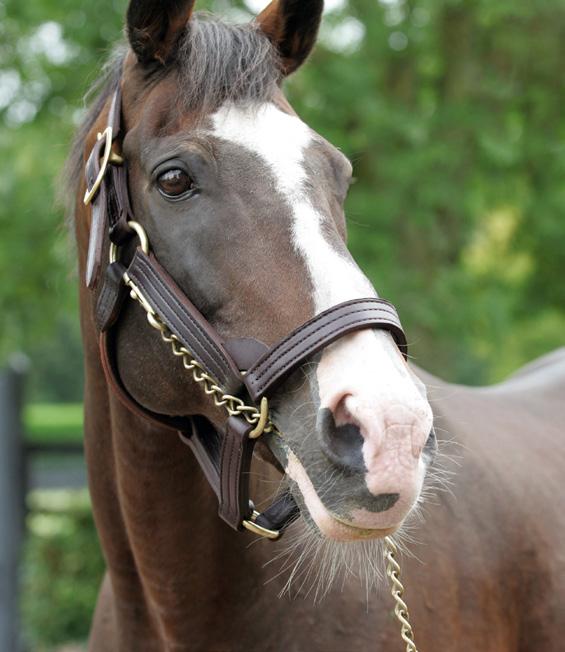
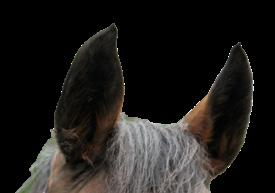
64 TRAINERMAGAZINE.COM ISSUE 83
| OPINION |
BELOW: 97% of pedigrees of the horses included in a recent study featuring the ancestral sire, Northern Dancer (1961).
© NORTHER DANCER PHOTO COURTESY KEENELAND ASSOCIATION
Sadler’s Wells
Foundation stallions
197 Oriental Stallions were introduced into the UK in the 17th/18th century and interbred with the British mares. Out of all 197, only three of those stallions male tail lines made it into the modern thoroughbred.
Sire lines
Analysis of the Y chromosome is the best-established way to reconstruct paternal family history in humans and animal species.4 The paternally inherited Y chromosome displays the population genetic history of males. While modern domestic horses (Equus caballus) exhibit abundant diversity within maternally inherited mitochondrial DNA, until recently, only limited Y-chromosomal sequence diversity has been detected.5
Early studies in the horse indicated that the nucleotide variability of the modern horse Y chromosome is extremely low, resulting in six haplotypes (HT).4,5 However, this view has changed with the identification of new genetic markers, showing that there is considerably more genetic diversity on the horse Y chromosome than originally thought. Unfortunately, in thoroughbreds, the male gene pool is restricted, with only three paternal lines remaining.5
The Institute of Animal breeding and genetics of the Veterinary Medicine School at Vienna applied fine-scaled Y-chromosomal haplotyping in horses and demonstrated the potential of this approach to address the ancestry of sire lines. They were able to show the microcosmos of the Tb-clade in the thoroughbred sire lines.
It is interesting to note that more than half of the domestic horses in the dataset (76 of 130) have a Y chromosome with a thoroughbred ‘signature’. These includes thoroughbreds, standardbreds, many thoroughbred-influenced breeds (warmbloods, American quarter horses, Franches-Montagnes, a Lipizzan stallion and the Akhal-Tekes.) 4
The General Stud Book shows that thoroughbred sire lines trace back to three founding stallions that were imported to England at the end of the 17th century.5 Now, the heritage of the thoroughbred sire lines can be better understood using Y chromosome information. It is now possible to clearly distinguish sublines of Darley Arabian, born in 1700 (Tb-d) and Godolphin
KEY
Name of mares
Male tail line of the female line
Male tail line of the male line
Arabian, born in 1724 (formerly Tb-g, now Tb-oB3b). The third founder, Byerley Turk, born in 1680, was characterised by the Tb-oB1 clade. According to pedigree information, only few of the tested males trace back paternally to Byerley Turk, which are nearly extinct.
There are now 10 different Y chromosome sub types known in the thoroughbred. Two come from the Godolphin Arabian, five come from Byerley Turk, and three come from Darley Arabian.
Even if genetic analysis shows that there was an error in the stud book recording of St Simon’s parentage and that horses descending from St Simon should be attributed to the Byerley Turk lineage, probably 90% of the current stallions are from the Darley Arabian male line. So, there is a true risk that we could lose a major part of the Y chromosome diversity.

BELOW: The Godolphin Arabian

65 ISSUE 83 TRAINERMAGAZINE.COM
| INBREEDING |
© GODOLPHIN ARABIAN BY GEORGE TOWNLY STUBBS, 1756-1815.
Conclusions and solutions
We should do everything we can to ensure that thoroughbreds are being sustainably bred and managed for future generations. With the breeding goal to produce viable racehorses, we need to ask ourselves, are we on track as breeders?
If inbreeding is negatively affecting the chances of racing and resulting in less durable racehorses, will this continue to affect foal crops in the future? How can we avert the threat of breeding horses that are less able to race? If the ability to race is in jeopardy, then is the existence of the thoroughbred breed at risk?
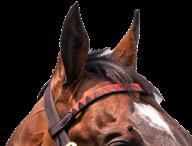
International breeding authorities are studying the situation and thinking about general measures allowing the sustainability of the breed.
Breeders: What can individual breeders do to produce attractive foals that are safe from genetic threats? How do you avoid the risk of breeding horses that are less fit to race?

There is no miracle recipe, and each breeder legitimately has his preferences. An increasingly important criteria for the choice of a stallion is his physical resistance and his vitality, as well as those of his family. It is often preferable to avoid using individuals who have shown constitutive weaknesses, or who seem to transmit them.
The use of stallions from different male lines can make it possible to sublimate a strain and better manage the following generations. The study of pedigrees must exceed the three generations of catalogue pages.
In the future, genomics—the science that studies all the genetic material of an individual or a species, encoded in its DNA—will certainly be able to provide predictive tools to breeders. This is a track to follow.
Trainers: Trainers should be aware of the danger of ‘diminishing returns,’ where excessive inbreeding occurs. Today, when animal welfare and the fight against doping are essential parameters, it is obvious that trainers must be aware of the genetic risks incurred by horses possibly carrying genetic defects.
Together with bloodstock agents, trainers are the advisers for the owners when buying a horse. Trainers already know some special traits of different families or stallions, but genomic tools might become essential for them too
Sources:
1. Genomic inbreeding trends, influential sire lines and selection in the global Thoroughbred horse population. Beatrice A. McGivney 1, Haige Han1,2, Leanne R. Corduff1, Lisa M. Katz3, Teruaki Tozaki 4, David E. MacHugh2,5 & Emmeline W. Hill ; 2020.
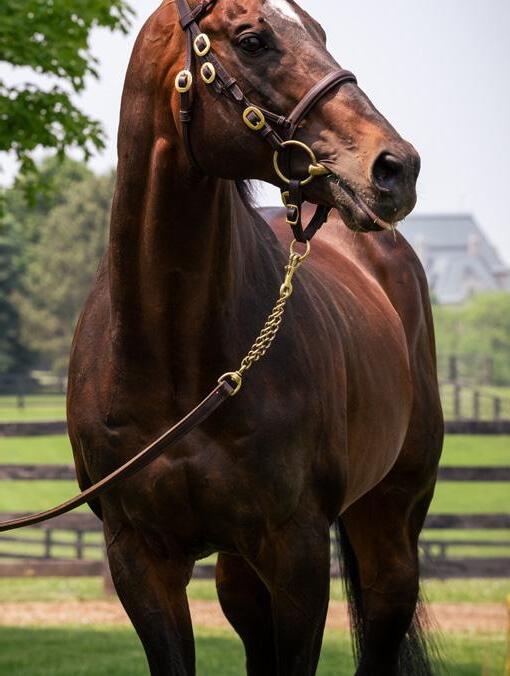
Scientific Reports (2020), 10:466, doi.org/10.1038/s41598-019-57389-5
2. Inbreeding depression and durability in the North American Thoroughbred horse Emmeline W. Hill, Beatrice A. McGivney, David E. MacHugh; 2022. Animal Genetics (2023), 00:1–4. wileyonlinelibrary.com/journal/age
3. Founder-specific inbreeding depression affects racing performance in Thoroughbred Horses. Evelyn T. Todd, Simon Y. W. Ho, Peter C. Thomson, Rachel A. Ang, Brandon D. Velie & Natasha A. Hamilton; 2017.
Scientific Reports (2018), 8:6167, doi.org/10.1038/s41598-018-24663-x
4. The horse Y chromosome as an informative marker for tracing sire lines. Sabine Felkel, Claus Vogl , Doris Rigler, Viktoria Dobretsberger, Bhanu P. Chowdhary, Ottmar Distl , Ruedi Fries , Vidhya Jagannathan, Jan E. Janečka, Tosso Leeb , Gabriella Lindgren, Molly McCue, Julia Metzger , Markus Neuditschko, Thomas Rattei , Terje Raudsepp, Stefan Rieder, Carl-Johan Rubin, Robert Schaefer, Christian Schlötterer, Georg Thaller, Jens Tetens, Brandon Velie, Gottfried Brem & Barbara Wallner; 2018. Scientific Reports (2019), 9:6095, doi.org/10.1038/s41598-019-42640-w
5. Identification of Genetic Variation on the Horse Y Chromosome and the Tracing of Male Founder Lineages in Modern Breeds. Barbara Wallner, Claus Vogl, Priyank Shukla, Joerg P. Burgstaller, Thomas Druml, Gottfried Brem.Institute of Animal Breeding and Genetics, Depart. 2012. PLOS ONE (April 2013), Volume 8, Issue 4, e60015, www.plosone.org
6. New genetic evidence proves that the recorded pedigrees of the influential leading sires Bend Or and St. Simon were incorrect. Alan Porter; ITB 2021
7. Eight Belle’s breakdown: a predictable tragedy. William Nack; ESPN.com 2008
Special thanks to Emmeline Hill for her help in the completion of this article.
66 TRAINERMAGAZINE.COM ISSUE 83
| OPINION | | INBREEDING |
“When I first came to the UK I tried a few different brands but stuck with Spillers due to the high quality of the feed and great customer service from their team. It’s amazing how quickly the horses recover after their races and do not drop condition, our results speak for themselves.”
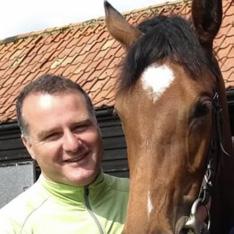



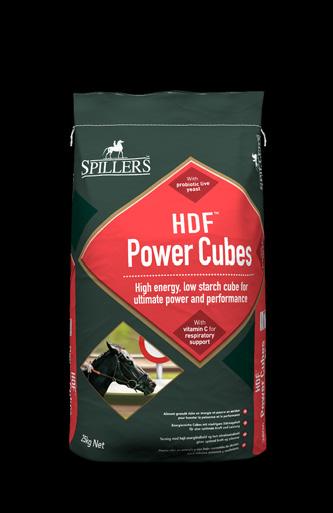
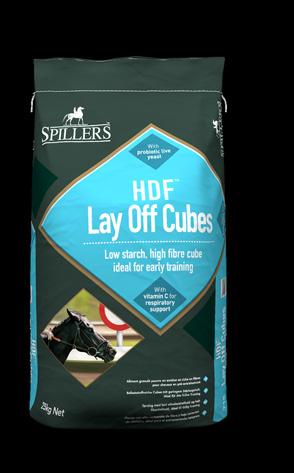
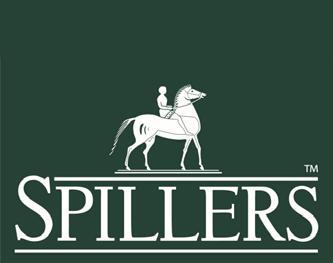

- Dylan Cunha

2023. www.spillers-feeds.com
◆◆◆◆◆◆◆◆◆◆◆◆◆◆◆◆◆◆◆◆◆◆ POWERING YOUR WINNERS
©Mars,
Silver Sword, trained by Dylan Cunha winning at the York Ebor Festival.
ENHANCING HORSE SAFETY IN TRAINING AND RACING


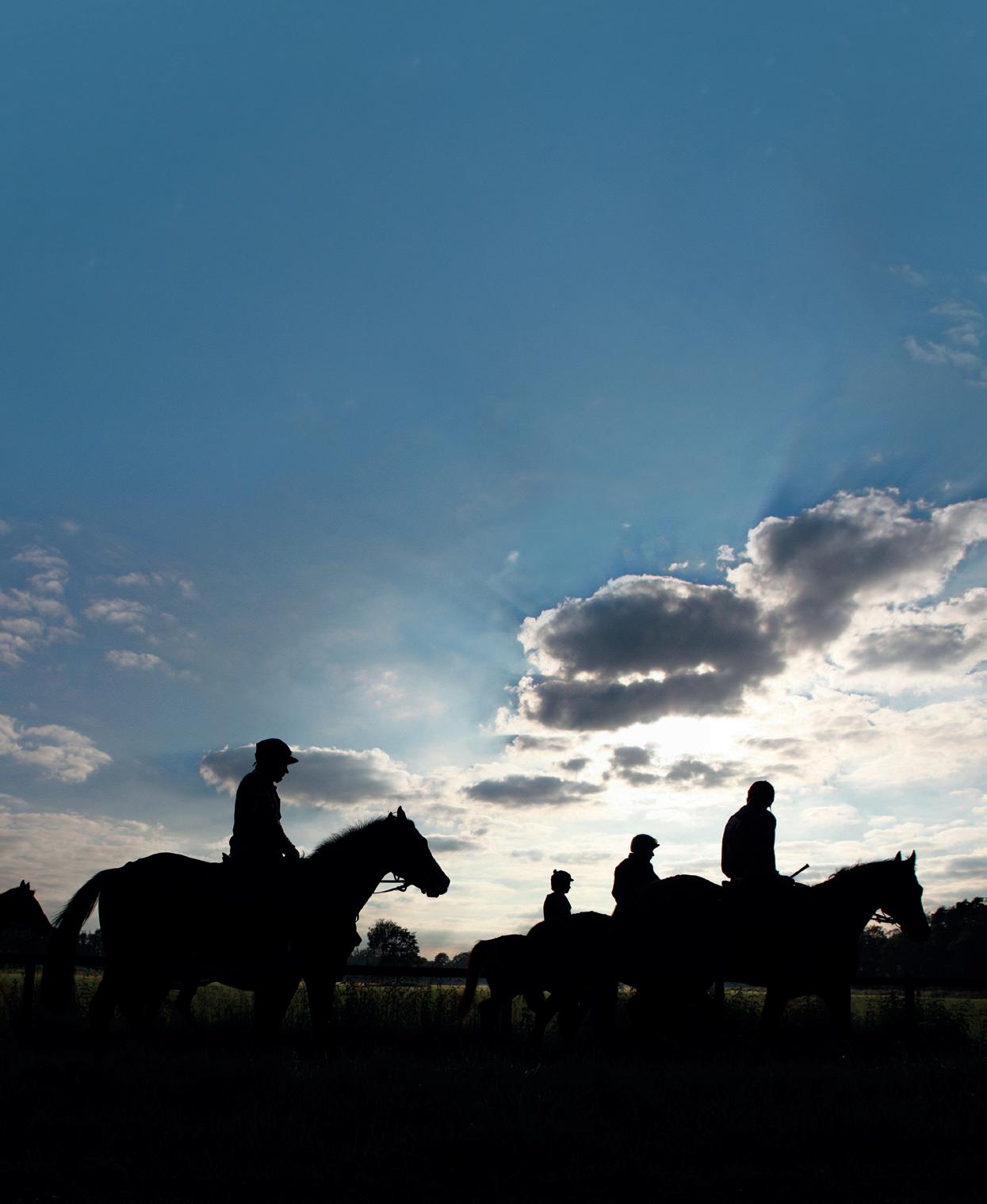
68 TRAINERMAGAZINE.COM ISSUE 83
LEIGH
| VETERINARY |
GERALD
MEMORIAL LECTURES 2023
Gerald Leigh Memorial Lectures is an annual gathering devoted to the racing industry and the health and wellbeing of the horses involved.
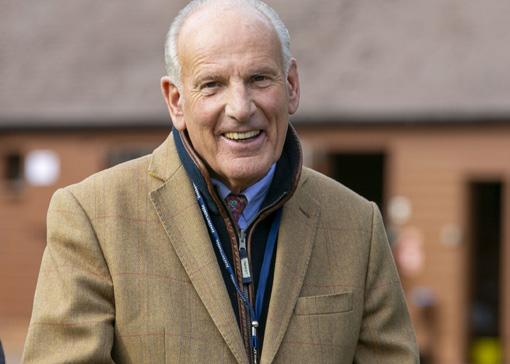
This year, equine veterinarians, researchers, students and industry professionals from around the world attended the event, held June 8, 2023, at the historic Tattersalls Sales in Newmarket, England.
There were insightful and informative lectures that educated the attendants but also instigated a healthy, lively debate on the health and welfare of the training and competing of horses. The underlying theme that was present during the whole event was all members of the conference had a deep passion and commitment to continuously progress and improve on managing the welfare and wellbeing of the horses in the industry, both on and off of the track.
SCAN THE QR CODE TO WATCH THE INTRODUCTION TO THE 2023 GERALD LEIGH MEMORIAL LECTURES BY FRED BARRELET, CHAIRMAN OF THE BEAUFORT COTTAGE EDUCATIONAL TRUST.
Two special guest speakers, Sir Mark Prescott Bt and Luca Cumani, wonderfully illustrated these sentiments as they described their reflections on the improvement and enhancement of horse safety.

Horse racing may be regarded as an elite sport, and all activities involving horses have an element of risk. All stakeholders in the racing industry must continuously work to ensure that the risks are minimised in order to reduce the number of injuries and fatalities that may occur in training and on the racecourse. There are now well-publicised concerns regarding the acceptability of exposing horses to risk in racing. These lectures and all of the attendees embraced the values of the public will so that there can be continued acceptance of horse sports.
SCAN THE QR CODE TO WATCH GUEST SPEAKER LECTURE ‘HOW HAS HORSE SAFETY IMPROVED – A TRAINER’S REFLECTION’ BY NEWMARKET BASED TRAINER, SIR MARK PRESCOTT BT.
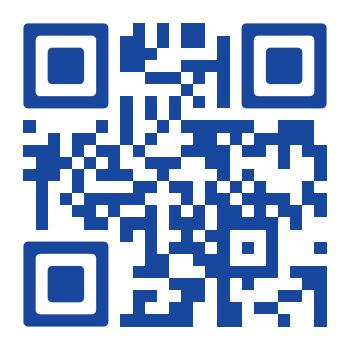



SCAN THE QR CODE TO WATCH GUEST SPEAKER LECTURE ‘WHAT DOES THE INDUSTRY WANT?’ BY RETIRED CLASSIC WINNING TRAINER AND BREEDER, LUCA CUMANI.
SCAN THE QR CODE TO WATCH THE LECTURE ‘STRATEGIES TO REDUCE RISK - WHAT CAN WE DO AND WHAT MIGHT IT ACHIEVE’ BY CHRISTOPHER RIGGS OF THE HONG KONG
Reducing the incidence of fractures in racing
Christopher Riggs of The Hong Kong Jockey Club clearly outlined the various strategies to reduce the risk of fractures in racehorses. There are two principal strategies that may used to reduce the incidence of severe fractures in horses while racing and training:
1. Identifying extrinsic factors that increase risk and take action to minimise them.
An example would be investigating different racing surfaces in order to determine which may provide the safest racing surface. However, studies have provided limited evidence and support for subtle extrinsic factors.

2. Identifying individuals that are at increased risk and prevent them from racing or minimise that risk until the risk has subsided.
There are many research routes that are being undertaken to identify those horses that may be at a higher risk of fractures. There are investigations involving heritability and molecular studies that may provide evidence of genetic predisposition to fracture. However, Dr Riggs explained that further understanding of the relationship between genetic, epigenetic and environmental factors is required before genetic screening is likely to be of practical use.
69 ISSUE 83 TRAINERMAGAZINE.COM
JOCKEY CLUB.
WORDS:
ADAM JACKSON, MRCVS PHOTOGRAPHY: GALOPPFOTO.DE, TATTERSALLS, PAM MACKENZIE PHOTOS, LISA BEATTIE, ROSSDALES
The
Pre-race screening of horses by diligent clinical examination is poor at reducing the incidence of fracture. Dr Riggs described another strategy that may assist with a clinical examination that is the use of biomarkers in blood and urine. Unfortunately, the precision to be of practical value has so far remained relatively unrewarding. Wearable technology that records biometric parameters, including stride characteristics, has shown some promise in identifying horses that are at increased risk of fracture; although Dr Riggs explained that this work requires further development.
Finally, Dr Riggs described both the use and current limitations of diagnostic imaging in identifying pre-fracture pathology in order to identify a horse at imminent risk of fracture. He conceded that further knowledge of the significance of the range of abnormalities that can be detected by imaging is incomplete.
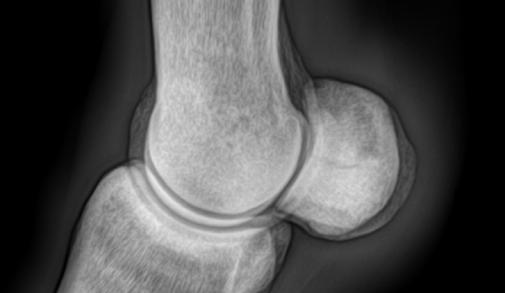
Dr Riggs concluded his lecture by expressing that the implementation of diagnostic imaging to screen “high-risk” horses identified through genetic, epidemiology, biomarkers and/ or biometrics may be the best hope to reduce the incidence of racing fractures. This field can be advanced with further studies, especially of a longitudinal nature.
SCAN THE QR CODE TO WATCH THE LECTURE
Hong Kong Jockey Club Equine Welfare Research Foundation. This may provide an opportunity to pilot the use of risk profiling to contribute to decision-making about race entries. In addition, the results of the pilot study combined with other sources of data may encourage race authorities to mandate the collection of veterinary and training data in order to help in risk mitigation. Horse racing is an international sport, and there are different governing bodies that ensure racing integrity. However, the concept of social licence equestrian sports and thoroughbred horse racing continues to gain significant public attention. Therefore, racing governing bodies are increasingly aiming to provide societal assurances on equine welfare.
SCAN THE QR CODE TO WATCH THE LECTURE


‘VETERINARY MANAGEMENT IN THE TRAINING YARDS TO MINIMISE RISK OF SERIOUS MUSCULOSKELETAL PATHOLOGY’ BY DR PETE RAMZAN OF ROSSDALES VETERINARY SURGEONS.
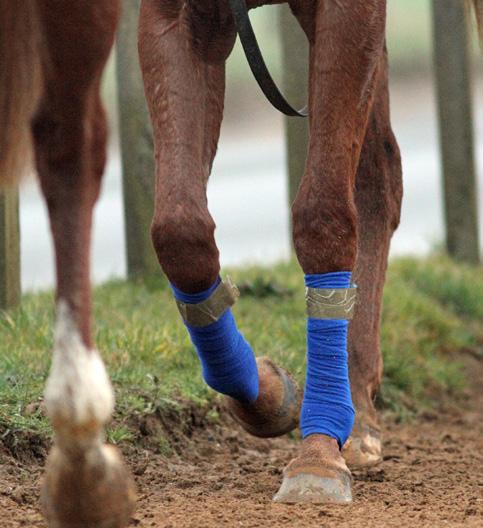
Dr Ramzan of Rossdales Veterinary Surgeons provided an eloquent and clear message during his lecture that race yard veterinarians and trainers are instrumental in ensuring good horse health and welfare and reducing serious injury of the horse both while training or racing, which will provide sufficient trust and legitimacy from the public and society. This feasible goal can be reached with good awareness of members involved in the care and training of each individual horse and conveying this information and any concerns to their veterinarian. The veterinarian can also contribute by honing their knowledge and skills and working closely with yard staff in order to make appropriate and better targeted veterinary intervention.
In the last two decades, there has been an incredible evolution and exciting developments in diagnostic imaging in the veterinary profession. It is believed that these technologies can provide a significant contribution to helping in mitigating fracture risks to racehorses on the course and in training.
Professor Tim Parkin of Bristol Veterinary School discussed the need for further investment in welfare research and education. One avenue of investment that should be seriously considered is the analysis of data related to (fatal) injuries in thoroughbred racing over the last 25 years.
It was expressed, with the abundance of data that has been collected, that some risk factors would be relatively simple to identify. An encouraging example in the collection and use of data to develop models in predicting and potentially preventing injury has been conducted by the Hong Kong Jockey Club funded by the

70 TRAINERMAGAZINE.COM ISSUE 83
‘THE POTENTIAL FOR USE OF DATA AND RISK MITIGATION IN RACING’ BY PROFESSOR TIM PARKIN OF THE BRISTOL VETERINARY SCHOOL.
| VETERINARY |
SCAN THE QR CODE TO WATCH THE LECTURE ‘DIAGNOSTIC IMAGING FOR IDENTIFICATION OF EARLY MUSCULOSKELETAL PATHOLOGY’ BY MATHIEU SPRIET OF THE UNIVERSITY OF CALIFORNIA, DAVIS.
Professor Mathieu Spriet of the University of California, Davis, described how these improvements in diagnostic imaging has led to the detection of early lesions as well as allowing the monitoring of the lesions’ evolution.
He continued by explaining the strengths and limitations of different imaging modalities such as computed tomography (CT), magnetic resonance imaging (MRI) and positron emission tomography (PET). Being one of the leaders in the use of PET in equine veterinary medicine, he presented further insight on how this particular modality provides high-resolution 3-D bone scans while being very sensitive to the identification of bone turn-over prior to the development of structural changes and allowing one to distinguish between active and inactive processes when structural changes are present.
He concluded his impressive lecture by providing evidence with amazing PET images that the role of imaging is not merely for diagnostic purposes to characterise clinical abnormalities, but can also be used as a screening tool in certain horse populations for fracture risk assessment or for the monitoring of lesions to provide clearance for racing.
Fractures, due to bone overloading rather than direct trauma occur commonly in thoroughbred racehorses and are the leading cause of euthanasia on the racecourse. Despite many changes to race conditions, the number of catastrophic fractures has remained relatively static, with approximately 60 horses a year having a fatal fracture during a race in the UK.
Against this backdrop, there have been great developments in the diagnosis and treatment of fractures in the last 40 years. Prevention of racecourse and training fractures would be ideal so the development of efficacious techniques to screen horses at risk may reduce the incidence and preserve social licencing.
SCAN THE QR CODE TO WATCH THE LECTURE


‘TRIAGE AND ACUTE FRACTURE MANAGEMENT –GOOD FOR HORSES AND GOOD FOR RACING’ BY DR IAN WRIGHT OF NEWMARKET EQUINE REFERRALS.
One technique discussed by Dr Ian Wright of Newmarket Equine Referrals was to help mitigate the impact of racecourse fractures, which would be acute immobilisation of racecourse fractures, thus, reducing associated pain and anxiety while optimising clinical outcome and reducing on course fatality rates. Because of our increased understanding of fracture pathogenesis and their associated biomechanics, effective fracture immobilisation has been made possible. The majority of fractures that occur in flat racing and between obstacles in jump racing, are a result of stress or fatigue failure of the bone and not associated with trauma.
In addition, fractures seen on the racecourse are often found in the same specific sites (i.e., metacarpal/metatarsal condyles and the proximal sesamoid bones of the fetlock) and have repeatable configurations. With this understanding and knowledge, racecourse veterinarians can optimally immobilise a fracture in a logical and pre-planned manner.

As Dr Wright expressed, this allows the fracture patient to have reduced pain and anxiety and enable the horse to be moved from the course comfortably so that it can be further examined. Ultimately, this allows the veterinarian and all stakeholders to make effective and judicious decisions for the sake of the horse’s welfare and wellbeing. As Dr Wright concluded, this benefits both horses and racing.
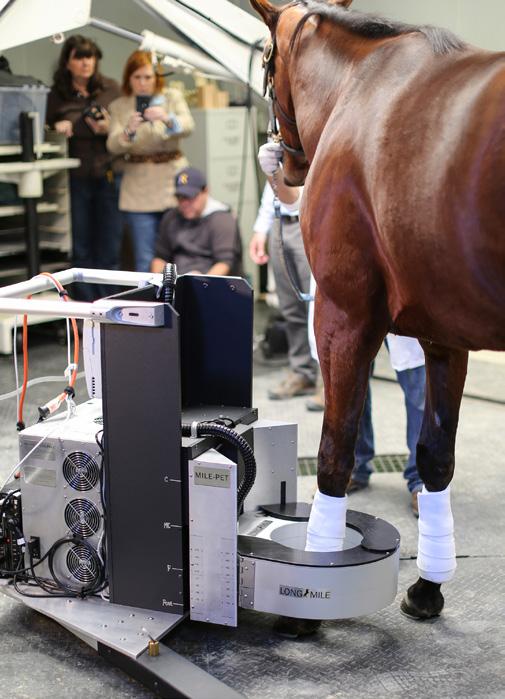
71 ISSUE 83 TRAINERMAGAZINE.COM
| THE GERALD LEIGH MEMORIAL LECTURES |
Dr Debbie Guest of the Royal Veterinary College discussed a different approach in mitigating the risk of fractures during training and racing by developing novel tools to reduce catastrophic fractures thoroughbreds. Because it has been found that some horses are more inherently predisposed to fractures than other horses, Dr Guest and her team have developed a genome-wide polygenic risk score so that one can potentially calculate an individual horse’s risk of fracturing during training or racing compared to the population as a whole.
This strategy may contribute in identifying genetically high-risk horses so that additional monitoring of the patients can be exercised during their careers and also leading to fracture risk, which are found to be the cause of approximately half of these incidents.
The system of using DNA testing to identify biological processes that may or may not be present ultimately leading to fracture risk may be a powerful tool in lowering the risk of catastrophic fracture and requires further research and application.

Cardiac events & sudden cardiac deaths
In racehorses, sudden death that is associated with exercise on the racetrack or during training is a serious risk to jockeys and adversely affects horse welfare and the public perception of the sport. It is believed 75% of race day fatalities result from euthanasia following a catastrophic injury. The other 25% of fatalities is due to sudden deaths and cardiac arrhythmias are found to be the cause of approximately half of these incidents.
The lectures focused on this area of concern by providing three interesting lectures on cardiac issues in the racehorse industry.
SCAN THE QR CODE TO WATCH THE LECTURE ‘SUDDEN CARDIAC DEATH IN TRAINING AND RACING PREVALANCE AND RISK FACTORS’ BY DR LAURA NATH OF THE UNIVERSITY OF ADELAIDE.
Dr Laura Nath of the University of Adelaide, explained the difficulties in identifying horses that are at risk of sudden cardiac death. It is believed that part of the solution to this difficult issue is the further development and use of wearable devices including ECG and heart rate monitors.
With the use of these technologies, the goal would be to recognise those horses that are not progressing appropriately through their training and screen these horses for further evaluation. This course of action has been seen in human athletes that develop irregular rhythms that are known to cause sudden cardiac death with the use of computational ECG analysis, even when the ECGs appear normal on initial visual inspection.

Knowing that ECGs and particularly P-waves are used as a non-invasive electrocardiographic marker for atrial remodelling in humans, Dr Nath recently completed a study on the analysis variations in the P-wave seen on ECGs in athletic horses and found that increases of P-waves in racehorses are associated with structural and electrical remodelling in the heart and may increase the risk of atrial fibrillation (cardiac event).
SCAN THE QR CODE TO WATCH THE LECTURE ‘CARDIAC RHYTHM DISTURBANCES IN TRAINING AND RACING IN UK’ BY DR CELIA MARR OF ROSSDALES VETERINARY SURGEONS.


Dr Celia Marr of Rossdales Veterinary Surgeons continued the discussion of cardiac disease in both the training and racing of horses. Unfortunately, cardiac disease knowledge does lag compared to musculoskeletal and respiratory diseases when considering the causes of poor performance in racehorses. Due to the fact that cardiac rhythm disturbances are fairly common, occurring in around 5-10% of training sessions in healthy horses in Newmarket and over 50% of horses investigated for poor performance, Dr Marr expressed the need for further research and investigation in this area.
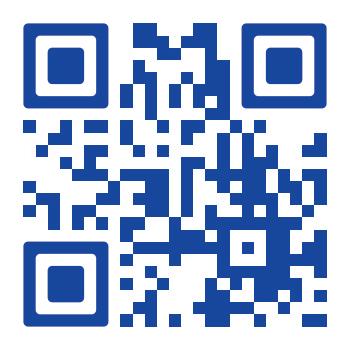
72 TRAINERMAGAZINE.COM ISSUE 83
SCAN THE QR CODE TO WATCH THE LECTURE ‘DEVELOPING NOVEL TOOLS TO REDUCE CATASTROPHIC FRACTURES IN THOROUGHBREDS’ BY DR DEBBIE GUEST OF THE ROYAL VETERINARY COLLEGE.
| VETERINARY |
In addition, this research needs to determine if there is indeed a link between heart rhythm disturbances and repeated episodes of poor performance and sudden cardiac arrest. ECGs and associated technologies are helpful but there are limitations such as the fact that rhythm disturbances do not always occur every time the horse is exercised. Therefore, it would be of great value that a robust criterion is established when evaluating ECGs in racehorses. The Horserace Betting Levy Board has provided funding for investigation by initially exploring the natural history of paroxysmal atrial fibrillation (self-correcting form) to understand risk factors and predict outcomes for affected horses.
SCAN THE QR CODE TO WATCH THE LECTURE

‘ARTIFICIAL INTELLIGENCE NOVEL TOOLS TO IDENTIFY ARRHYTHMIA RISK’ BY PROFESSOR KAMALAN JEEVARATNAM.
Continuing the theme of the lectures on irregular heart rhythms and associated sudden cardiac death (SCD) in training and racing, Professor Kamalan Jeevaratnam described his exciting research in using artificial intelligence (AI) to identify horses at increased risk of developing irregular rhythms that may cause SCD.
AI is an exciting and rapidly expanding field of computer science that is beginning to be implemented in veterinary medicine. With funding by the Horserace Betting Levy Board and the Grayson Jockey Club Research Foundation, Professor Jeevaratnam of the University of Surrey, has piloted three novel algorithms that help predict horses with rhythm abnormalities through the analysis of horses’ ECGs.
It was acknowledged that further research is required to develop this technology by using data collected from multiple sources but the initial results are promising in the development of an useful AI tool to identify horses at risk of SCD and prevent catastrophic events, thus, ensuring the welfare of the horse in racing.

Conclusion
The Gerald Leigh Memorial Lectures was a thoroughly successful and enjoyable event attended by a variety of different members of the horse racing industry. Not only did the lecturers provide interesting and valuable information but also excitement for the future of racing. It was very clear that all the lecturers and attendees were passionate and committed to the racehorse welfare and wellbeing as well as retaining the social licence for an exciting sport.
BIG ENOUGH TO COPE SMALL ENOUGH TO CARE
Through the professionalism and expertise of our staff, together with the fantastic range of facilities, our goal for both rehabilitation and pretraining is to return every horse to its owner/trainer with the optimum chance of fulfilling its potential.


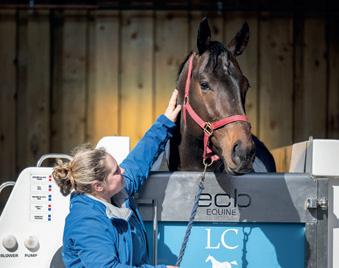
LCER operate from a tranquil environment, based in Suffolk. We have the ability to work with the latest technology coupled with the wonderful facility that has been developed at Leys.
Louise Collinson
mobile +44 (0)7792 260666 email lou@lcequinerehab.co.uk address Leys Farm, Church Lane, Barnardiston CB97TL www.lcequinerehab.co.uk
73 ISSUE 83 TRAINERMAGAZINE.COM
| THE GERALD LEIGH MEMORIAL LECTURES |
SMALLER NATIONS
THE CHALLENGES FACING TRAINERS IN DENMARK, POLAND & SPAIN
In the last issue, we featured a table of champion trainers and jockeys across Europe, compiled by Slovakia’s Dr Marian Surda. In this one, we have selected three of those champion trainers—those of Denmark, Poland and Spain—and tried to find out a little more about them and what it is like to be at the top of the training
tree in their respective countries. While there is plenty of positivity and success to report, the challenges of sustaining viable businesses in the ‘smaller’ racing nations of our region, even for those at the top of their profession, are evident. It is a salutary finding that two of the three are looking to move on from the countries in which they have made their names.

74 TRAINERMAGAZINE.COM ISSUE 83
| INDUSTRY |
WORDS: DR PAULL KHAN
BELOW: Slava Ukraini wins the 2023 Danish Derby for Niels Petersen ahead of stablemate Cotton Eye Joe at Klampenborg Racecourse.
2022 CHAMPION TRAINERS IN EUROPE



COMPARISON OF RACING LANDSCAPE*
Of our chosen trio, Guillermo Arizkorreta was the most highly ranked (by earnings), finishing 7th of the 19 with earnings of €886,250 achieved through 61 winners at a strike rate of 19.3%. Niels Petersen not only finished 9th with his €311,537 in Denmark, but he also finished 8th as champion in Norway, with a further €443,856. And Cornelia ‘Conny’ Fraisl, one of only two females on the list, came in at No 14, earning €131,791 from her 50 wins in Poland. There are many similarities between the three. All happen to be of a similar ‘vintage’, being in their late 40’s or 50’s.





RACECOURSES




DENMARK Klampenborg (Copenhagen), Odense, Aarhuis, Aalborg
POLAND Sluzewiec (Warsaw), Partynice (Wroclav), Sopot, Buczkow-Dabrowka






SPAIN La Zarzuela (Madrid), San Sebastian, GH de Andalucia & Real Club Pineda (Seville), Loredo, Sanlucar de Barrameda, Zahara de los Atunes, VilaSeca & La Senia (Tarragona)
Denmark has the fewest horses in training but has ready access to those trained in neighbouring Sweden and Norway. The number of trainers among whom these horses are divided is roughly comparable, as are the numbers of their owners. There is some disparity in prize money, with Poland some way adrift of the other two countries. None has a thriving thoroughbred breeding industry, producing limited numbers of foals and therefore relying on foreign-bred imports and foreigntrained runners to achieve the near-identical average field sizes of eight runners per race.





Denmark has one thoroughbred-only track (Copenhagen’s Klampenborg) and three dual gallop and trotting courses. In Poland, Sluzewiec—the main track at the country’s capital—is joined by three others, including Wroclav (where most Polish jump races are run) and the seaside track at Sopot. Spain has four traditional tracks, headed by La Zarzuela in Madrid and, in addition, has three beach racecourses and two ‘pop-up’ tracks.


75 *Sources: Danish, Polish & Spanish Jockey Clubs. Notes: Poland: Horses in training include 320 Arabians, races include 173 Arabian; Arabian foals shown because of their importance in Poland; Foals figures are 2022. Denmark & Spain: Foals figures are 2021. Information on Arabian foals not sought. All: Average field size and prize money figures are rounded.
DENMARK POLAND SPAIN Racecourses 4 4 9 Owners 350 411 420 Trainers 47 54 69 Jockeys (incl. Amateurs) 19 63 68 Horses in Training 350 995 750 Races 241 491 450 Average Field Size 8 8 8 Average Prize Money €9,500 €4,500 €12,000 Thoroughbred Foals 114 168 97 Arabian Foals – 735 –| EMHF |
COUNTRY TRAINER (AGE) STARTS WINS % TOTAL EARNINGS (€) GREAT BRITAIN Charlie Appleby (47) 488 152 31.2% 7,171,558 FRANCE Jean Cloude Rouget (69) 625 158 25.3% 6,315,940 IRELAND Aidan O’Brien (53) 469 105 22.4% 4,658,123 ITALY Alduino Botti (74) 1013 202 20% 2,260,567 GERMANY Peter Schiergen (57) 222 62 27.9% 1,604,425 TURKEY Ibrahim Bekirogullari (59) 508 124 24.4% 1,354,907 SPAIN Guillermo Arizkorreta (47) 316 61 19.3% 886,250 SWEDEN Lennart Reuterskiöld Jr. (53) 124 26 21% 562,947 NORWAY Niels Petersen (51) 205 38 18.5% 443,856 DENMARK Niels Petersen (51) 84 15 17.9% 311,537 GREECE Charalambos Charalambus (45) 287 73 25.4% 251,729 SWITZERLAND Miroslav Weiss (73) 248 22 8.9% 206,868 HUNGARY Stanislav Georgiev (42) 175 36 20.6% 174,896 POLAND Ms Cornelia Fraisl (47) 288 50 17.4% 131,791 SERBIA Bojan Sendekovic (38) 331 68 20.5% 115,118 SLOVAKIA Lubos Urbánek (46) 27 10 37% 88,390 BELGIUM Marc Rosseel (72) 138 11 8% 69,000 CZECH REPUBLIC Allan Petrlík (58) 148 25 16.9% 60,725 AUSTRIA Ms Sarah Steinberg (34) 1 1 100% 10,000 AVERAGE: (34.3) 299.8 65.2 25.4% 1,404,138
PHOTOGRAPHY: ELINA BJÖRKLUND & STEFAN OLSSON / SVENSK GALOPP, NIE TYLKO GALOP, GALOPPFOTO.DE, TATTERSALLS
NIELS PETERSEN
Niels Petersen can claim a unique achievement among current European trainers, in that he is Champion Trainer not only in Denmark, but also in Norway.
While Petersen was born and raised in Denmark, he has lived in Norway for the past 25 years, from which base he has stewarded a stellar training career. He has earned the title of multiple champion trainer in all three Scandinavian countries, with combined annual prize money often exceeding €1M and peaking at around €1.7M. Over the years, he has garnered 788 winners in Scandinavia, at a strike rate of around 16%.
Petersen is a prolific winner of Scandinavia’s richest race, the Gp. 3. Stockholm Cup International. Square de Luynes ran up a hat-trick of wins from 2019 to 2021, and Bank of Burden was a four-time victor in a long career. “My most consistent horse was probably Bank of Burden, but my best horse has been Square du Luynes. The Racing Post called him ‘Frankel of the Fjords’”!

Asked for his view of the best trainers in Europe, he says, “People like to say it’s a numbers game, and of course it is, and I know they have the firepower; but the way Aiden O’Brien and
John Gosden place their horses, and the level they maintain year after year is just amazing and fantastic to watch. And I greatly admire Karl Burke. To have bounced back and actually raised his game, as he has, after all he’s been through…”.

As for the riders: “Frankie Dettori is special, of course, and I think William Buick, whom I know very well, is a fantastic jockey”. And turning to racetracks: “Ascot and Longchamp are absolutely fantastic tracks, and here in Scandinavia, Bro Park is very level and fair”.
Petersen’s move to Norway was by way of circumstance, not planning. Having completed his education and military service, he worked in Baden-Baden, (alongside friends who included jockey William Buick’s father) for a couple of years, before returning to his homeland, where he suffered a serious riding accident. Forced to seek work opportunities which did not involve riding, his knowledge of the German language came in handy, and he was asked to accompany Scandinavian-trained horses when they raced in Germany. There he met a Norwegian trainer who invited Petersen to join him in Norway to help train his jump horses.
Last year and the year before, Petersen operated a satellite yard in Denmark, (just as once he did also in Sweden). Around 15 of his 55 horses were based at Klampenborg racecourse, and in both those years he claimed the Danish championship. However, despite that success, adverse exchange rate movements have led him to abandon the Danish base. “The Danish customers actually preferred to put the horse up with me in Norway. I haven’t lost any clients, and all their horses I have with me in Norway now”.
Petersen is quick to praise the integrated race planning across the Scandinavian nations, making it practicable for trainers to map out campaigns for their horses. So, for example “if you have an outstanding miler, you can target all the big mile races, more or less”.
Securing owners in any one country is challenging enough— how does Petersen approach the task of finding owners in three countries? He is clear that the trainer’s job is not simply to train the horses—the social component is also vitally important. For example, the path to Dubai for its Carnival is a well-trod one—its purpose for Petersen being as much to enrich social relations with and amongst his owners as the pursuit of prize money.
76 TRAINERMAGAZINE.COM ISSUE 83
| INDUSTRY |
Square De Luynes and Pat Cosgrave win the 2021 Stockholm Cup International at Bro Park.
“I’ve got to make people enjoy the hobby I can provide them with. You do sacrifice a lot of time in doing that. But when you’ve sat on the beach and shared a bottle of wine in your swimming trunks, you become better friends”!
The travel and the socialising place a premium on having excellent staff back at base and Petersen has been fortunate to have had a long-standing assistant in the business in the shape of his elder sister. “I make sure that my staff are well paid, and I’m strict in observing proper working hours. It has become more difficult to find good staff, but word of mouth has ensured we have an excellent team, including a number from South America”.
Petersen has noticed a reduction in horses in training in all three countries. “I’m a bit pessimistic as to the future of racing here, especially in Norway, because our government is not supporting the industry at all. It classifies it as a hobby and, unlike in Sweden and Denmark and elsewhere, you cannot own horses as part of a business. It means owners have to pay 25% VAT on top of imports, which they can’t get back”.
Dubai’s allure is, of course, all the greater in the contrast it provides to the long, harsh Scandinavian winters. Petersen rues the fact that, from November to April, the Scandinavian climate renders virtually impossible the effective preparation of horses and, despite his huge success there, he has an eye out for opportunities abroad. “I would like to say I’m not looking for something outside, but I am. I live and breathe Scandinavian racing, but do I see myself here in five years’ time? I don’t think so. I’m only 51 years old—not even at my peak—and I want the
opportunity to challenge myself where I know I should be: on the bigger international scene”.
Until then, Scandinavia has given Petersen many special memories. What was his best day? “In Denmark, on Derby Day 2021, I had runners in seven races, and I won all seven of them”! If Square de Luynes was ‘Frankel of the Fjords’, then, after that ‘magnificent seven’, one could almost be forgiven for dubbing Niels Petersen ‘Frankie of the Fjords’.
CONNY FRAISL


Fraisl’s rise to the top in Poland has been meteoric. Her first year with a public trainer’s licence was as recent as 2020, when, with 44 winners, she finished second in the trainers’ table. Two years later, she was crowned Champion, with 50 winners. Fraisl is alone among our trio in concentrating almost exclusively on Arabian, rather than thoroughbred racing.
“I was born in beautiful Salzburg, Austria”, she explains. “My grandparents had a little farm and, when I was three, my dad bought me my first pony. It was a ‘typical’ stubborn Shetland Pony; and once I’d landed on the ground several times, I asked my dad to ‘sell this pony and buy me a guinea pig’”!
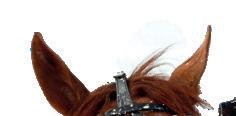
But the lure of riding returned a decade later. “Close to the place I lived, there was a training stable for trotters where I spent every free afternoon, all my holidays from the age of 13. Racing always was fascinating for me. Flat racing In particular but, due to the fact that there was no flat racing stable in my area, I stayed the next seven years with trotters. But I always had an eye on flat racing and, in 1996, when I moved from Salzburg to Vienna, I was finally close to a racetrack where regular flat races were held. So, I made contact with one of the trainers, started to ride regularly in daily training there, gained my amateur licence and bought my first own racehorse”.
“I had the possibility of riding work in Florida for several weeks, and I could learn a lot about starting young horses there. During my earlier days in the trotting stable, I learned a lot about intensity of training, interval training, feeding and the general needs of racehorses”.
As an amateur, Fraisl notched up around 25 winners in Austria and Hungary, where she rode for two seasons for different trainers. Turning professional in 2006, she has amassed 208 winners in the saddle to date, riding in countries as far afield as Malaysia.
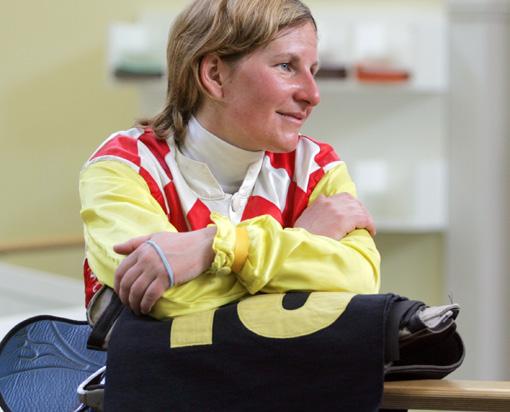

For her training career, Fraisl moved to Poland, her then-partner’s homeland, where she set up a private breeding and training facility in Strzegom, not far from Wroclav. “At the beginning, we had in training only homebred horses, thoroughbreds. Step by step, one by one, came some Arabians from Austria, Germany, Sweden... and when they started to win more and more races, owners from different countries recognised the job we were doing and sent us more and more Arabian horses to be trained in Poland”. Today, she has some 80 boxes and 40 places for youngstock. She is an advocate of turnout for horses’ well-being.
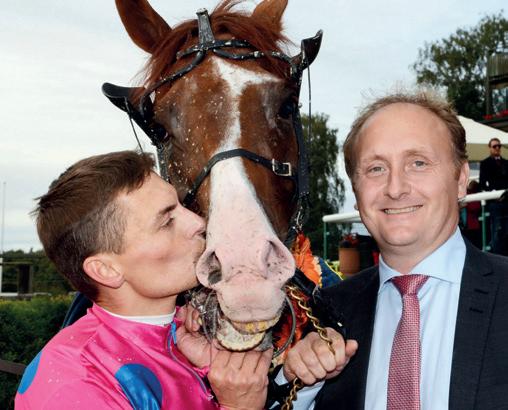
77 ISSUE 83 TRAINERMAGAZINE.COM
| EMHF |
ABOVE: Niels, Bank of Burden and jockey Per-Anders Gråberg.
“Twenty-five huge grass paddocks can be used all year round and all of our horses—including the racehorses—enjoy several hours outside every day. This is the most positive aspect for mental health. We also have an indoor arena and a horse walker as well as many possibilities to ride out into fields and forest to create the most individual training for our horses as possible”.
These days, Fraisl continues to ride out for nearly all the lots. “This is the best possibility for me to see how the horses in training work, how they behave—simply to ‘feel’ them”.


However, in Fraisl, we find another champion trainer wanting to move on from the country of their triumphs. “Actually we are dramatically reducing the number of our horses, and we are not accepting new horses and owners. The reason is that I am leaving Poland soon and will stop my job as a trainer here”.
Fraisl cites a multitude of reasons for this bombshell decision which, she says, she has taken after lengthy consideration. “The number of foreign Arabian horses—as we mainly have them in training—is also getting smaller and smaller. This means that we are forced to enter three, four or five horses from our stable together in one race, or that race will be cancelled. This makes no sense for us and our owners any more”.
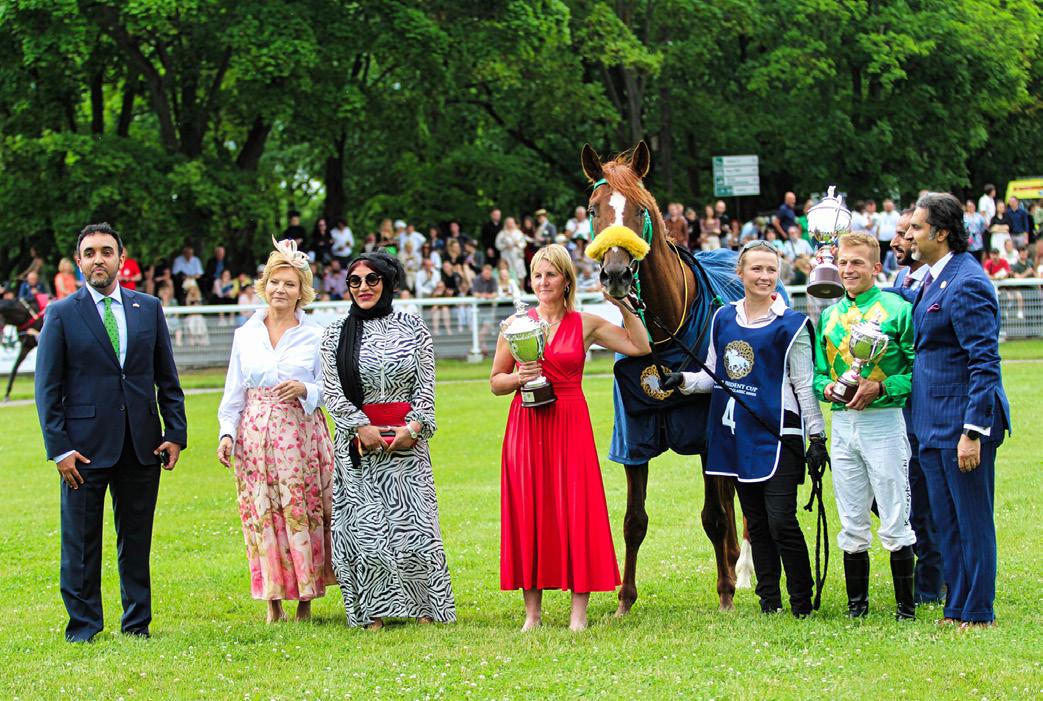
Stagnant prize money and rising costs (of staff, transport, feed, bedding and veterinary and blacksmith services) are another factor. In addition, “there is a big lack of work riders. Most trainers work with a handful of enthusiastic amateurs, mainly young girls, who come to ride some lots before school or study or during holidays”. Fraisl also rues the talent drain of the best jockeys in Poland to other countries. She claims that drug and alcohol misuse is a real issue amongst riders and also that blackeconomy practices are common in the capital, with staff being employed without legal papers or insurance. “We have all our staff employed on a legal basis, and this is why we are the most expensive stable in Poland. We are already tired [of] explaining to the potential new owners why the prices of others are much lower—that’s why we finally decided to close our training stable”.
These points were put to the Polish Jockey Club (PJC) racing secretary and EMHF executive council member, Jakub Kasprzak. Kasprzak points to the fact that Poland is not alone in facing economic challenges, with high inflation being experienced generally across the continent. “It is true that prize money has not risen for some years, but it still compares favourably with that in, for example, the Czech Republic or Slovakia. We are currently trying to support breeders and owners of Polish-bred horses. We have put in place a five-year programme to help this group of people. Ms Fraisl’s yard has 95% foreign-bred horses, so she is unable to participate in that programme. We have been paying transport only to horses to travel to Sopot (just four days’ racing per year) because there are no horses in training within 100km of that racecourse”.
78 TRAINERMAGAZINE.COM ISSUE 83
| INDUSTRY |
Conny Fraisl’s Bahwan and jockey Kamil Grzybowski won the 2023 UAE President Cup Central European Arabian Derby at Służewiec Racecourse.
Bieshan and jockey Dastan Sabatbekov, Jägersro, May 2022.
“It is true that Polish riders, of all levels of ability, will often seek happiness abroad. But a shortage of racing staff is something that is being experienced throughout Europe. We are now seeing many staff coming from countries such as Kyrgyzstan and Kazakhstan. However, I don’t recognise her point about insurance and illegal workers. Every rider MUST have official insurance to be licenced. We at the PJC are very exacting about it. And as to drug and alcohol problems, every rider has a medical control before the start of a race. If the medical officer sees anything incorrect, he will report it to the stewards. Two years ago, one rider was suspended for one year for being drunk on race day”.
Where will Fraisl relocate to? “Time will tell. I hope to find a nice place where I can continue my work with Arabian horses”.
Fraisl has not been averse to sending horses abroad to compete ‘whenever it makes sense’. Indeed it has been the forays abroad that have provided her with her most treasured racing memories. “As key moments, I would mention the experience [of taking] part and finishing fifth in the UAE President Cup - UK Derby in Doncaster this year with Bahwan and especially our first Group winner last year in Jägersro, Sweden. For me as a trainer, this was the first Group race abroad. For our young stable jockey it was the first big chance to ride a Group race and show his talent abroad so we said ‘let’s go and try’. We had no idea how the colt would do on a dirt track and without the whip (in accordance with the rules in Sweden). In the event, it was the first Group win for me as trainer, for our jockey, and for the breeder....it was an unforgettable day for all of us”.

GUILLERMO ARIZKORRETA

One man has enjoyed a stranglehold on the Trainers’ Championship in Spain for over a decade. Guillermo Arizkorreta first topped the table in 2012 and has remained there ever since.
By contrast with the other featured trainers, Arizkorreta trains at shared facilities, with some 25 others, at the La Zarzuela racetrack, very close to Madrid. It helps contain costs and has in turn contributed to the fact that Arizkorreta’s owners have enjoyed an enviable return on their annual costs, of over 75%. “It is very easy for the trainer. The owner pays €200/month to the racecourse, and it includes stabling, water supply, electricity, use
of gallops, etc. Overall, having a horse in the yard costs around €1500/month, all included. It means that it is not that difficult to cover the cost of having a racehorse. On average, my horses have earned €13.500/year since I started”.
His operation supports some 70 horses in training and a workforce of around 25. “We have very nice staff, from many countries: Germany, Chile, Czech Republic, Italy, Nicaragua, Bolivia. As everywhere, there is a shortage, and it is not easy to find good riders. We have around 17 full-timers who work approximately 40 hours a week, a couple of part-timers, and some jockeys who are self-employed. The staff that work full-time work one weekend in two and the same for the evening stables. The basic wage for a fulltime rider is around €19.000/year”.
“I started in a pony club in Oiartzun (close to San Sebastian) which was owned by a racehorse owner. There I met (four-time French Champion jockey) Ioritz Mendizabal, who had a keen interest in racing; and we started to ride racehorses in our local track in San Sebastian. From then on, I started following Spanish racing, and afterwards I started to follow racing and breeding around the globe, which became my passion”.
Arizkorreta singles out three key events in his rise to the top. “First, being able to compete in the Fegentri series as an amateur rider opened my eyes, and I was lucky to ride in many countries. Secondly, after finishing my degree, I spent nearly six years working as assistant in the UK to Mr Cumani and in France to Mr Laffon Parias; and I learned a lot with them.
“Lastly, Madrid racecourse was closed between 1996 and 2005, and I was lucky to be ready to start my career at the same time as the racecourse reopened. I was known as an amateur rider in Spain, and all the background from my experience abroad helped me a lot to get some clients in very exciting times”.
79 ISSUE 83 TRAINERMAGAZINE.COM
| EMHF |
Conny Fraisl and jockey Dastan Sabatbekov after Bieshan’s Jägersro win, May 2022.
“We have won 878 races from 4,450 runners. In Spain, we have won all the major races and probably our biggest achievement abroad was to win a Gp. 3 and a Gp. 2 on the same weekend in Baden-Baden in 2021”.
Loyal support from some of the country’s biggest owners has been a hallmark of Arizkorreta’s career. “I have a good bunch of owners. The majority of them have been with the yard for a long time. At the moment, we have around 20 different ownership entities—33% sole ownership and the rest partnerships. The majority of them used to come racing when they were children and have a good knowledge of the sport”.
Arizkorreta has not been shy of campaigning his horses abroad and has reaped healthy rewards, capped by that dual Groupwinning day in Germany. “Since I started, I have always tried to race as much as possible abroad. We have had 112 winners abroad—mainly in France, but we have also won in Dubai, Germany, Morocco and Switzerland; and we have had runners in Saudi, Sweden, UK, and Italy”.
“I feel we have done pretty well abroad, and in the right races, our horses are usually competitive”.

The trainer has much that is positive to say about racing in his country. “Madrid Racecourse is our ‘shield’, classified, as it is, as a monument. It is a fabulous racecourse, with lovely stands, a good turf track and a good crowd of people every meeting. It is very close to the city centre and is a track definitely worth visiting. Prize money could be better for the big races but in general is good, especially for the low-grade races. Being close to France helps us find suitable races for some horses”.
As to what could be improved, Arizkorreta would welcome improved planning of the race programme and greater unity between trainers, jockeys, and owners to “push in the same direction and to improve the basics of our industry”. And financial structures also mean that there is not the opportunity to access horse walkers or equine swimming pools.

All in all for Arizkorreta, the future, if not stellar, looks stable. “I think in five years’ time we will be in a similar position. Things could be much better but, realistically, with politicians not giving us the tools to develop the betting and our industry; it is hard to imagine an improvement in the short term. We need them to make a long-term plan for racing and breeding and to consider it as an industry that can create wealth and employment in many areas. Since 2005, the ruling government has helped us with prize money, which covers nearly all the races run in the year; and I see no reason why it should change, especially in Madrid.
“We have some lovely racecourses, which are always attended by a good crowd. In our biggest racecourse in Madrid, the weather is usually lovely, and it is becoming very popular in the city. There is scope to improve in many areas, and I can see it being one of the nicest racecourses in Europe. San Sebastian needs more support from the local government, but it is a historic racecourse in an amazing city. And I hope Mijas racecourse will reopen at some point”!
It was heartening to find that at least one of our ‘smaller nations’ champion trainers shows no signs of wishing to leave the country.
80 TRAINERMAGAZINE.COM ISSUE 83
| EMHF | | INDUSTRY |
Arizkorreta has won all the major races in Spain; one of his biggest achievements abroad was when Kitty Marion (red silks) won Germany’s 2021 Golden Whip race at Baden-Baden.


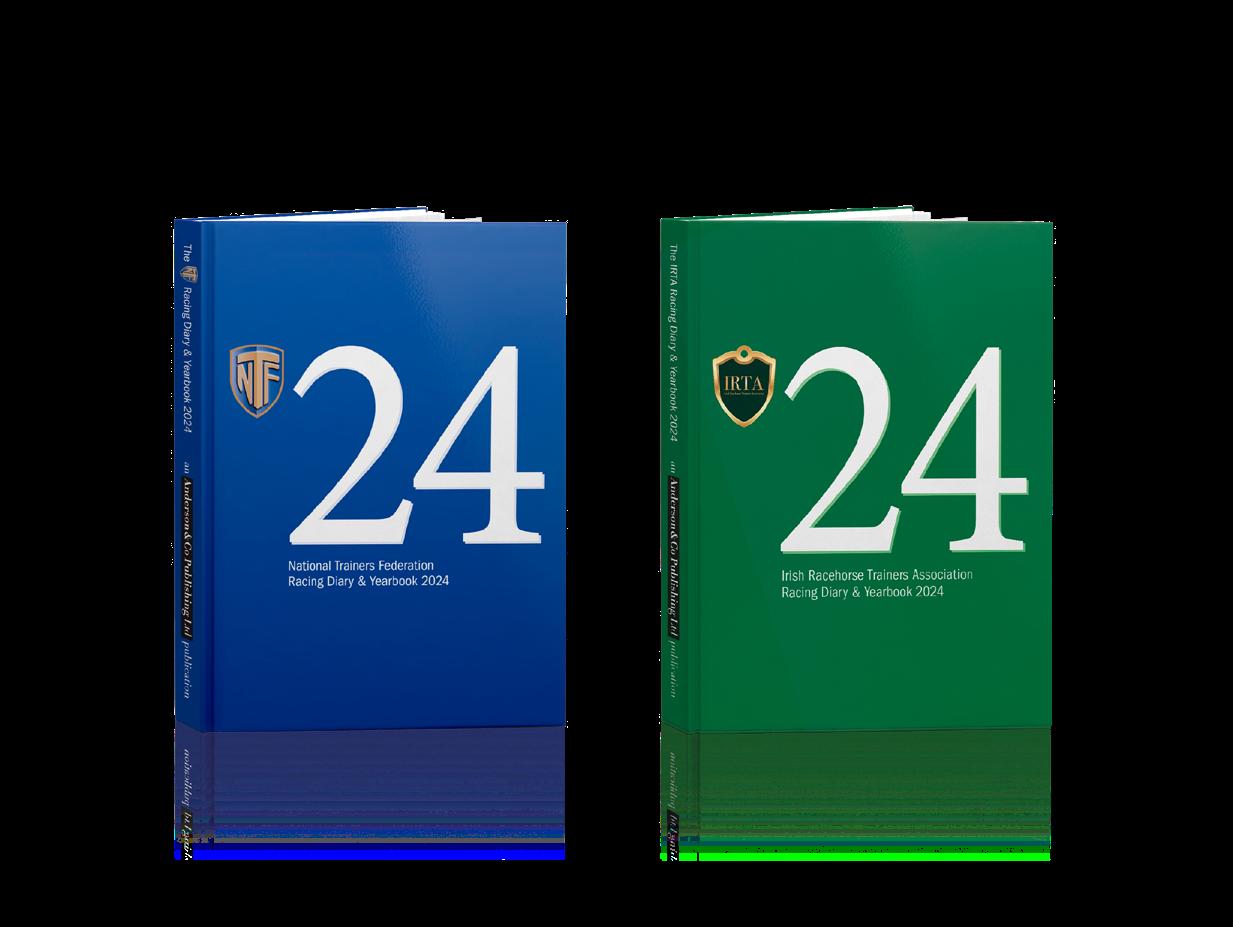
To find out more information on advertising opportunities to promote your brand, products or services visit Anderson-co.com/diary or call +44 (0)1380 816777 USE EVERY DAY OF THE YEAR DON’T MISS YOUR CHANCE TO BE INCLUDED IN THE
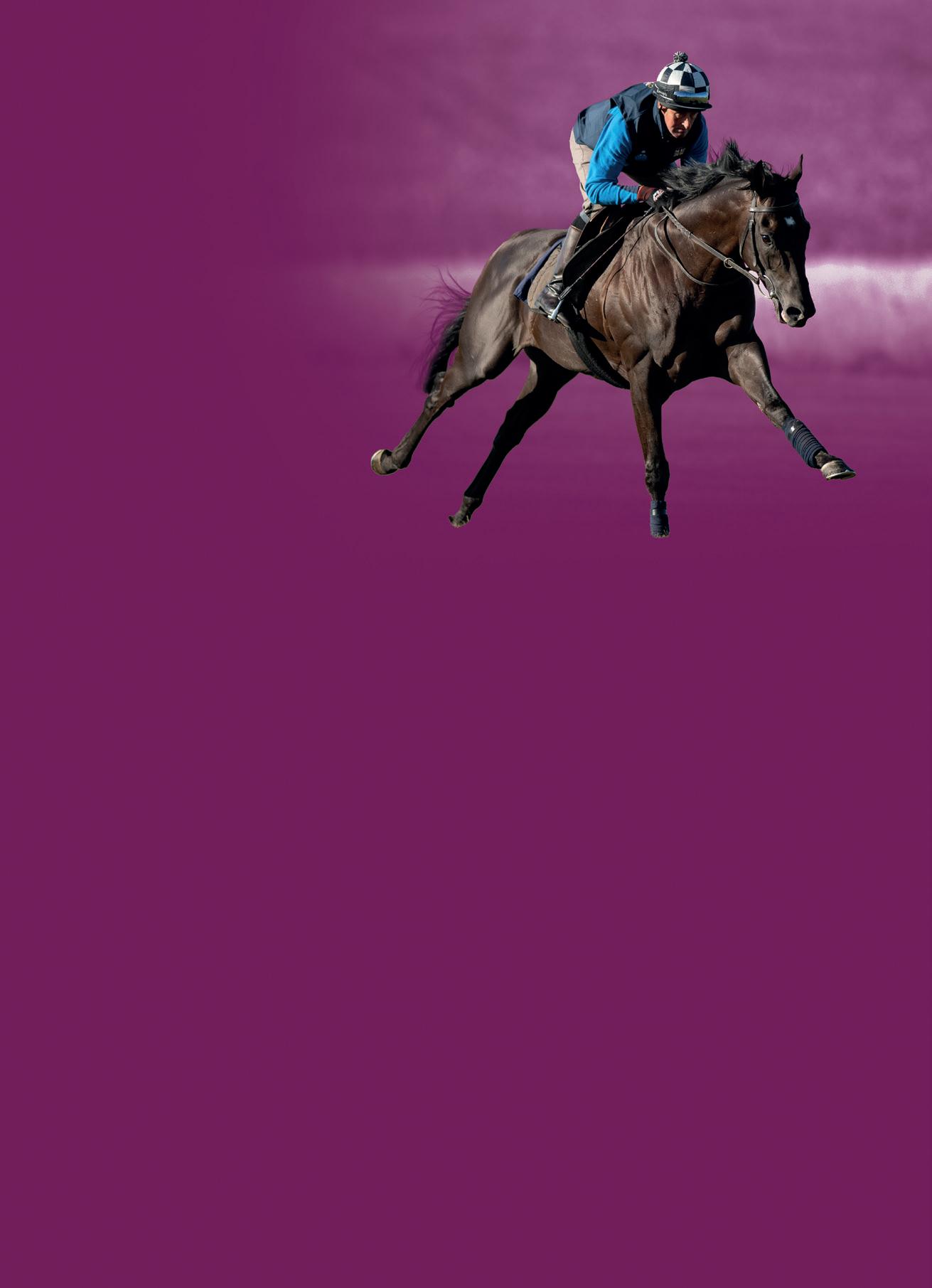


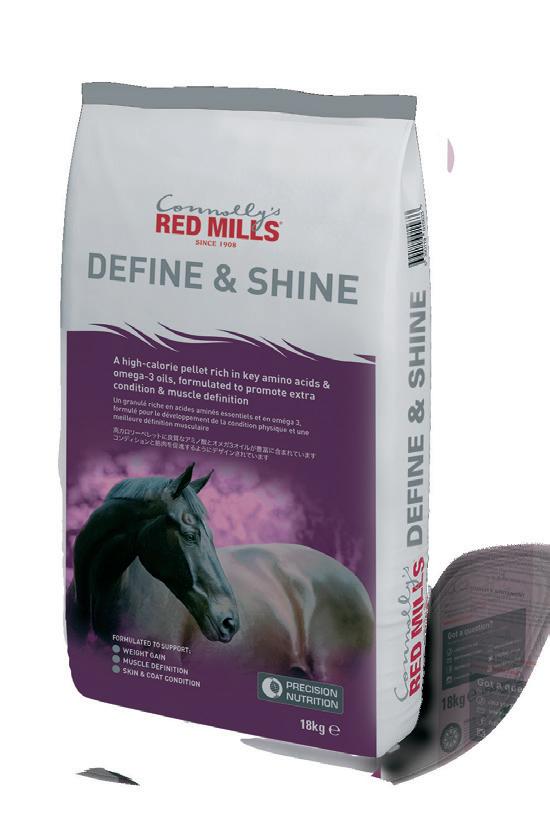

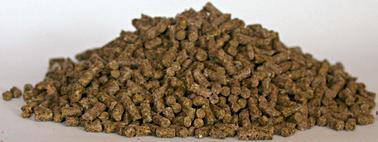


DEFINE & SHINE IRL: Lorraine Fradl +353 87 2575398 UK: Louise Jones +44 7843 349054 Email: info@redmills.com Goresbridge, Co. Kilkenny, R95 EKH4, Ireland To find out more about our products or nutritional services, contact our specialist equine team: High Oil Low Starch High Protein TONEWTHE RANGE Weight gain Muscle and topline development Outstanding coat condition FORMULATED TO SUPPORT A high-calorie pellet rich in key amino acids & omega-3 oils, formulated to promote extra condition and muscle definition. FEED YOUR DESIRE TO WIN www.redmillshorse.com





















































































































































































































































































